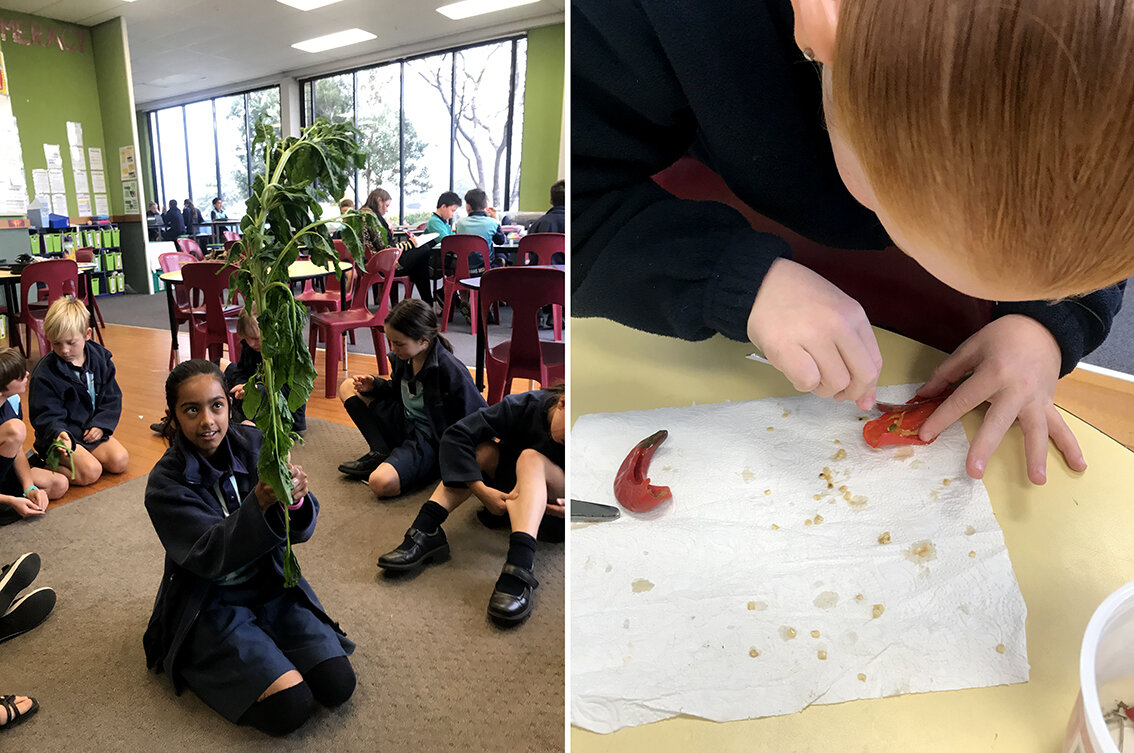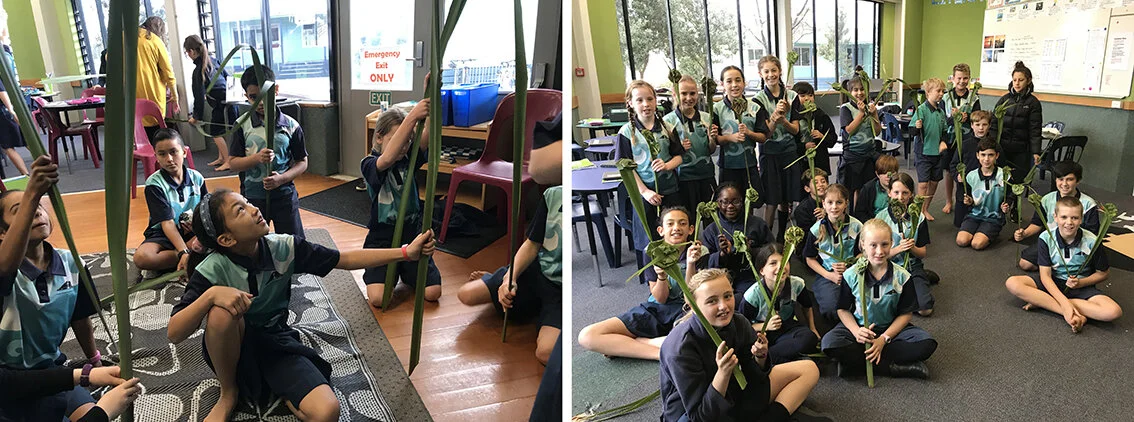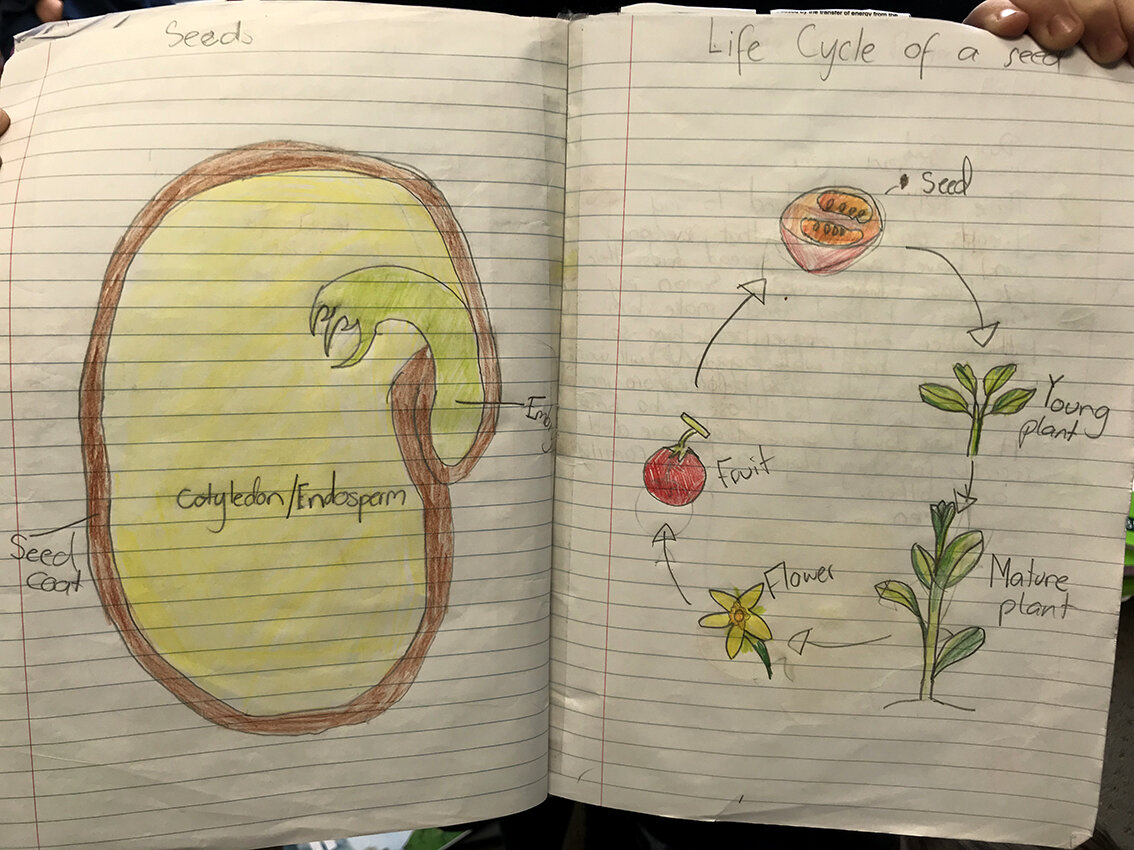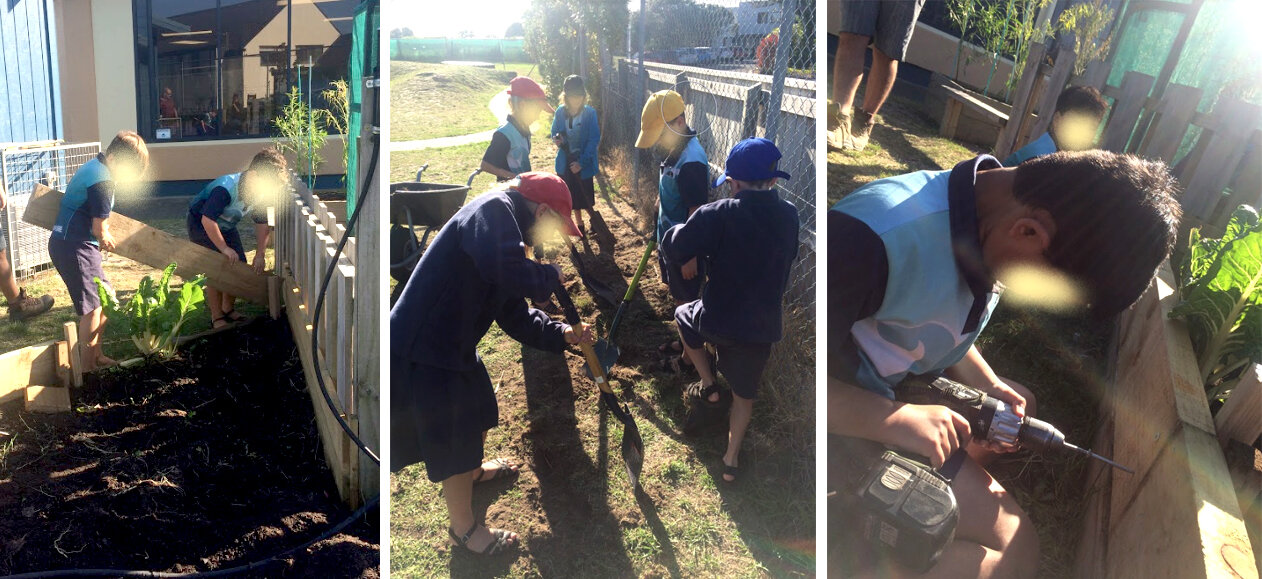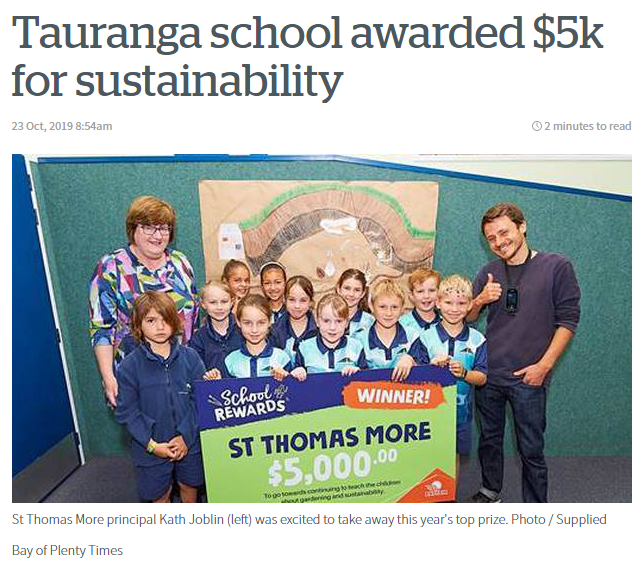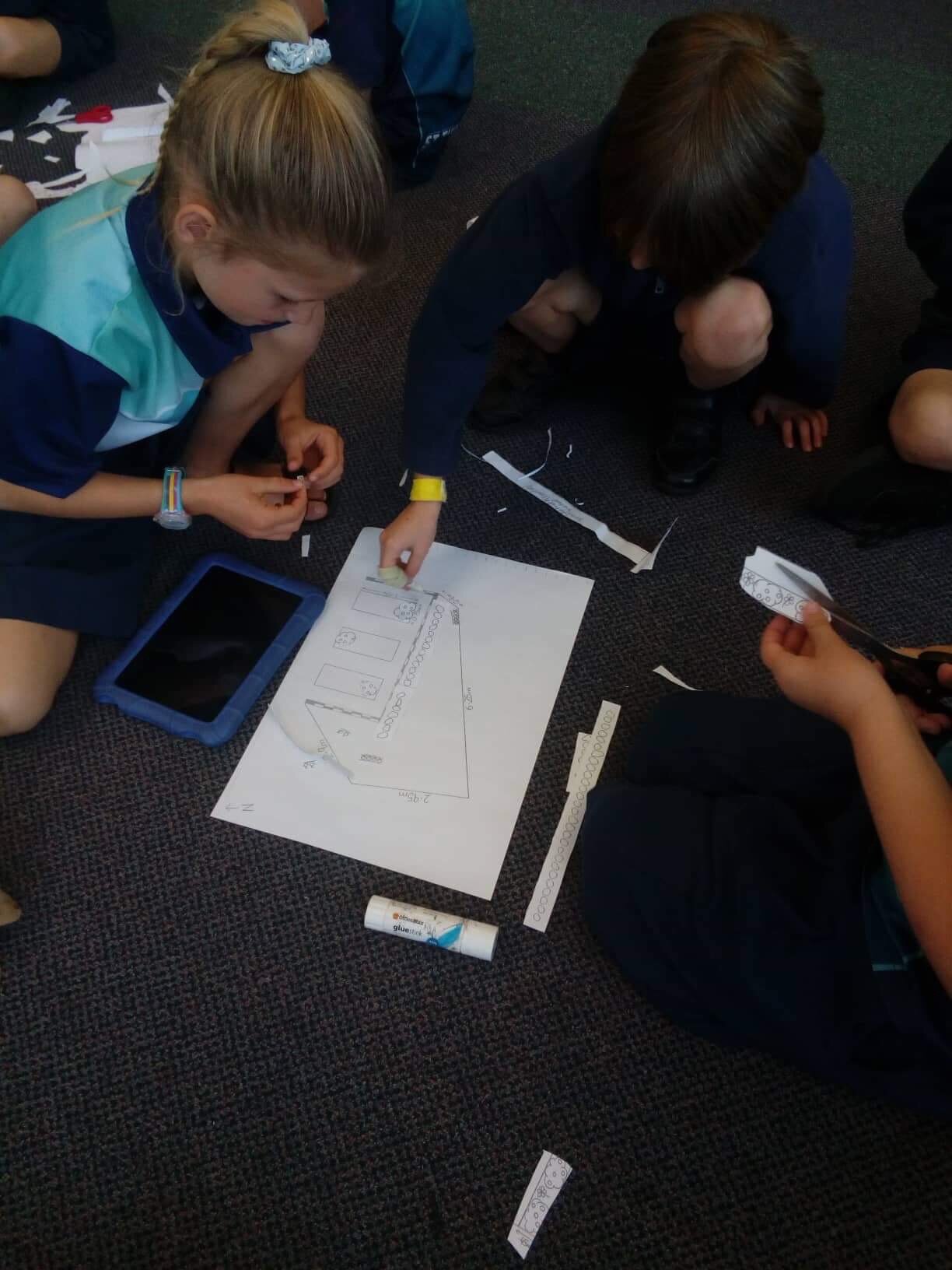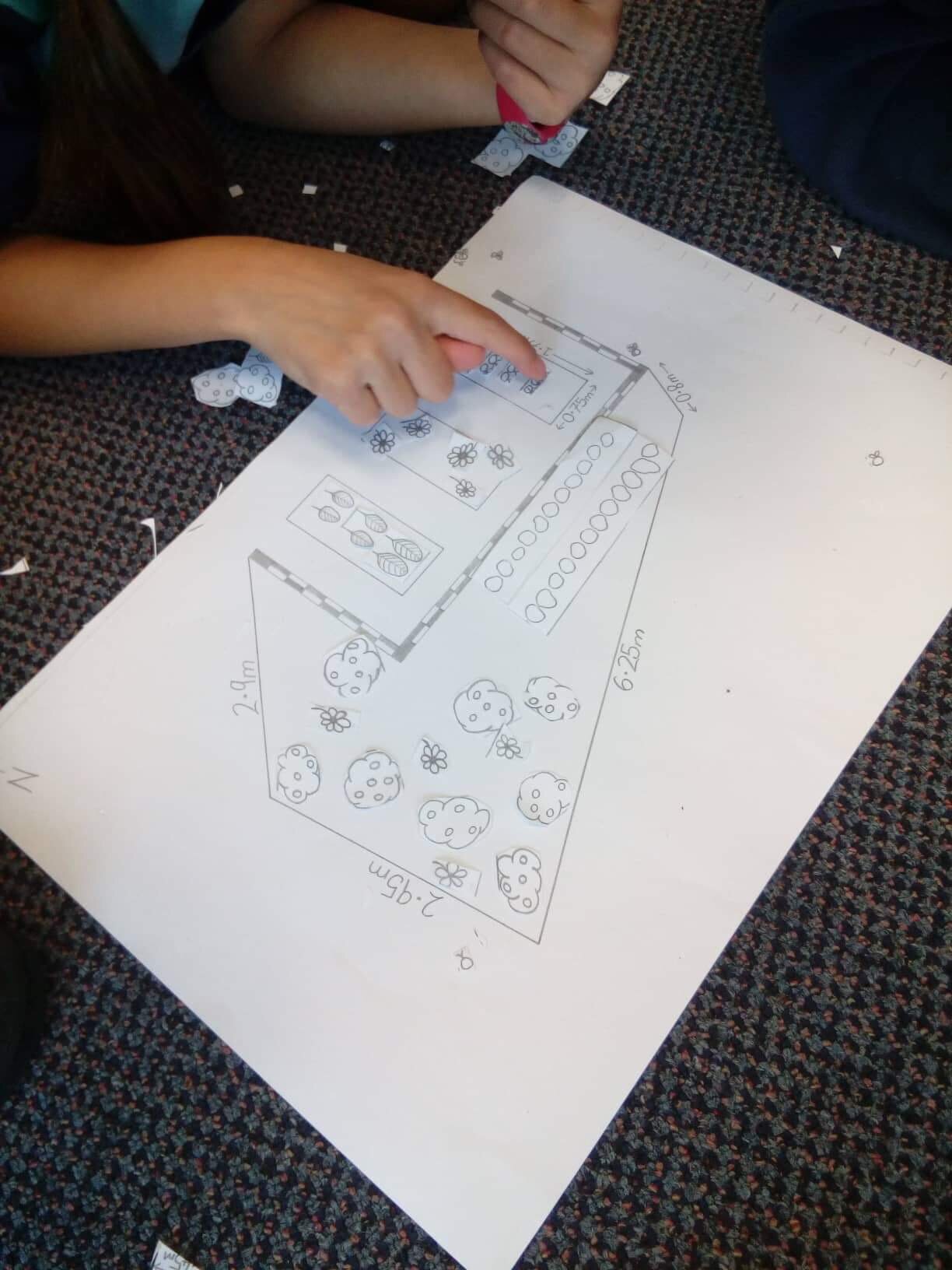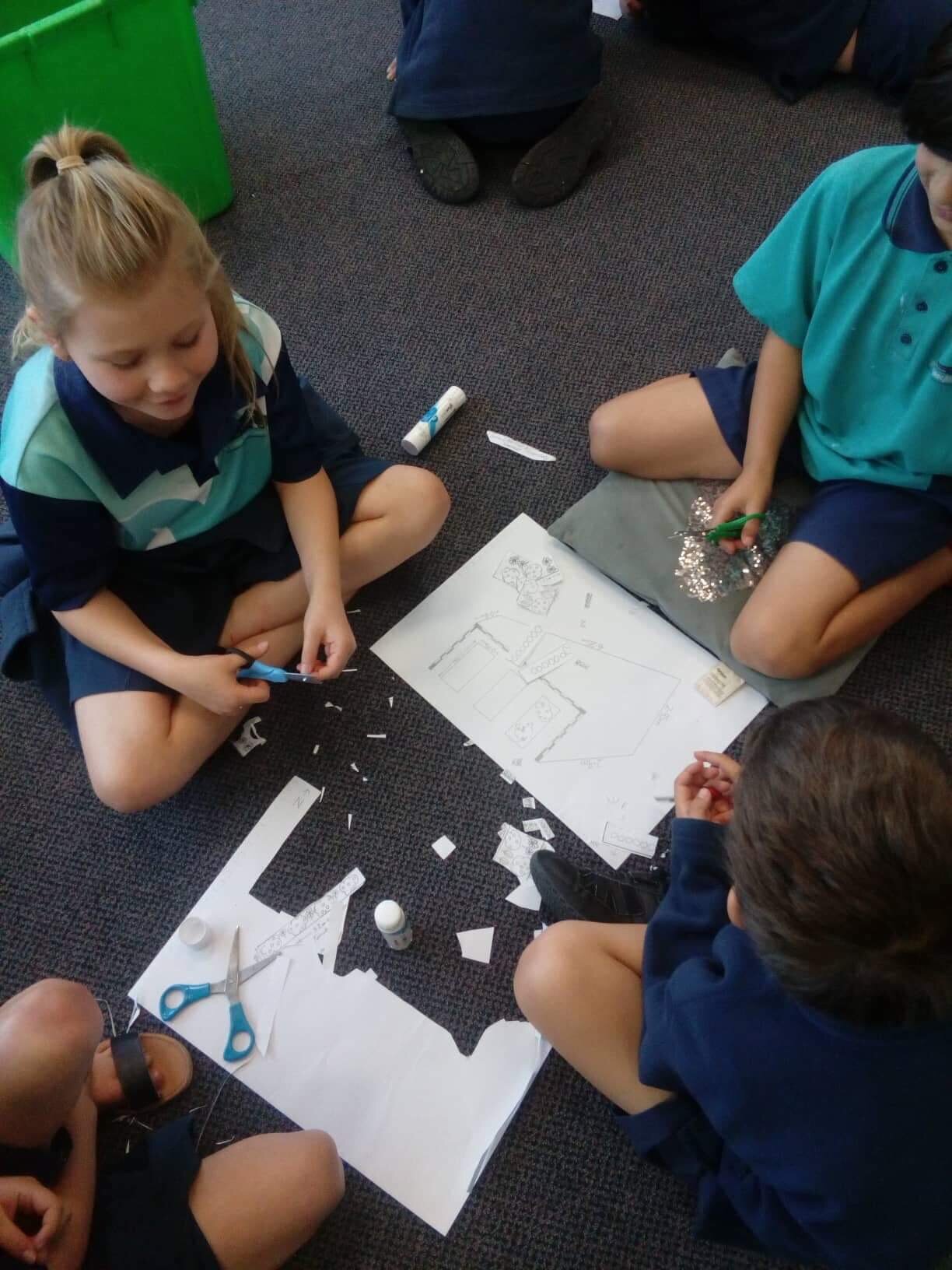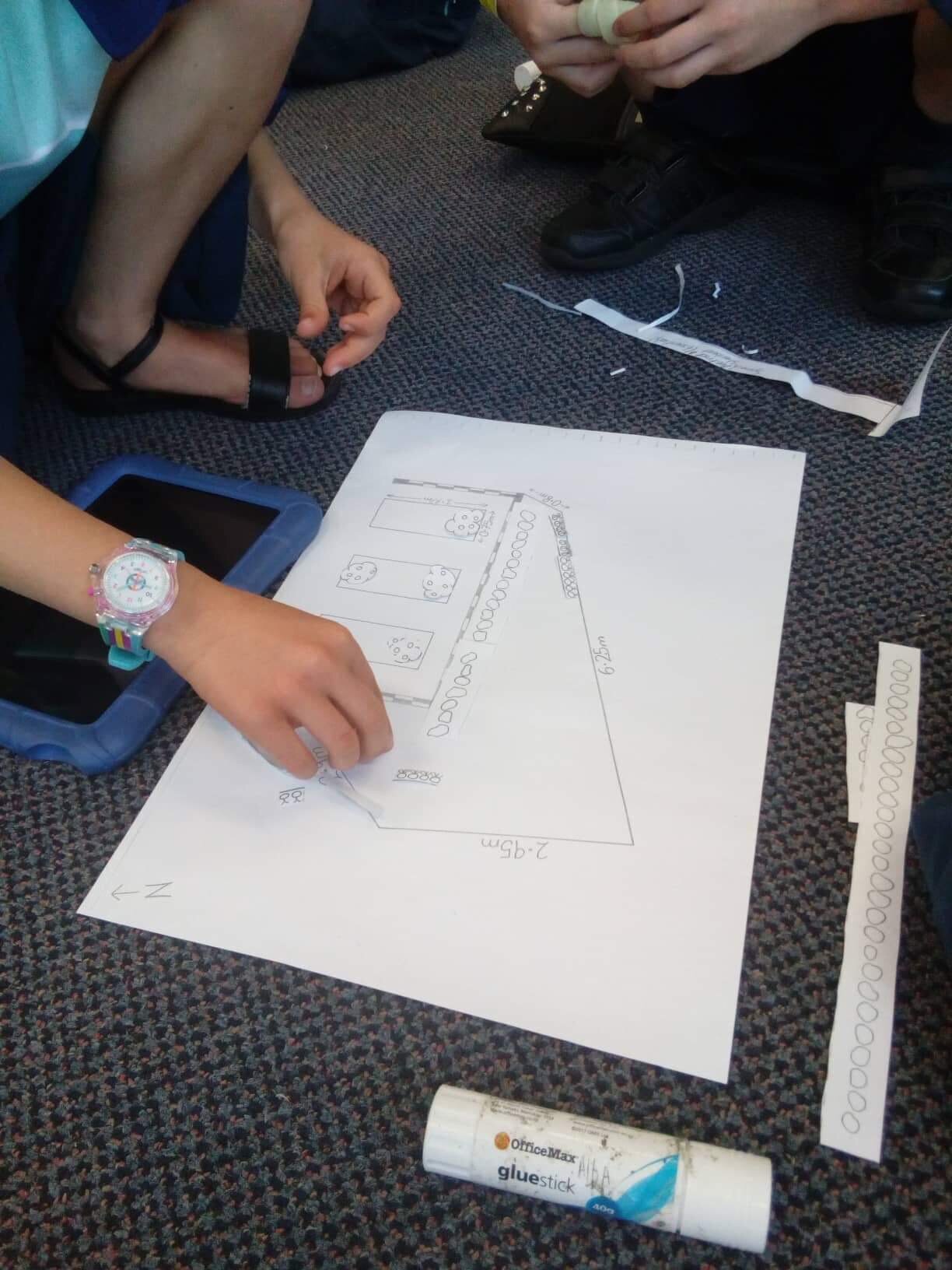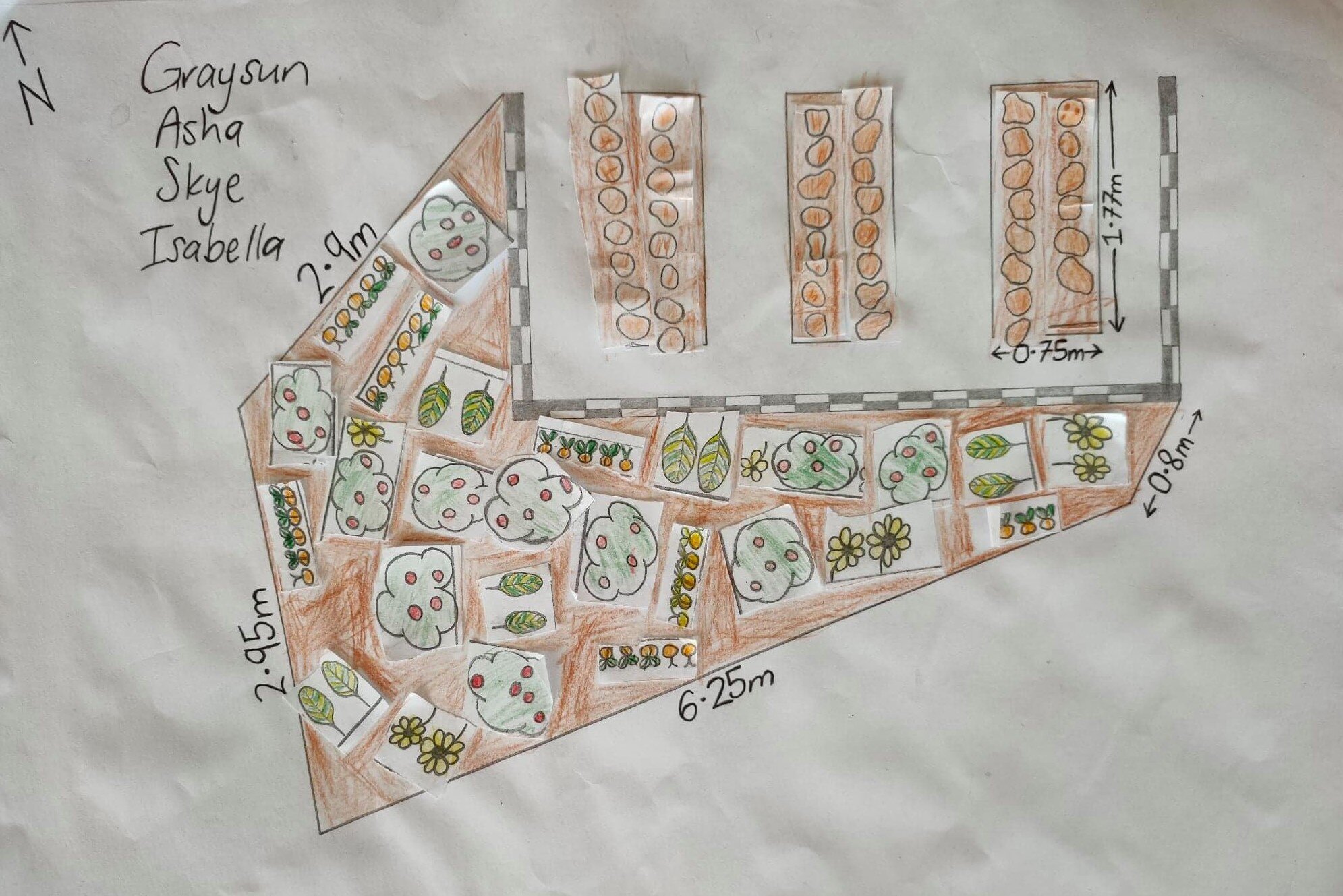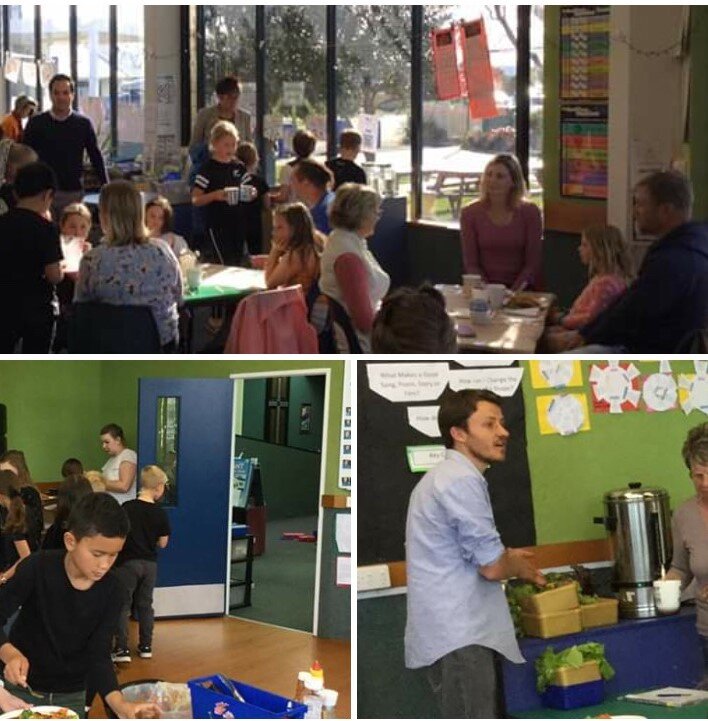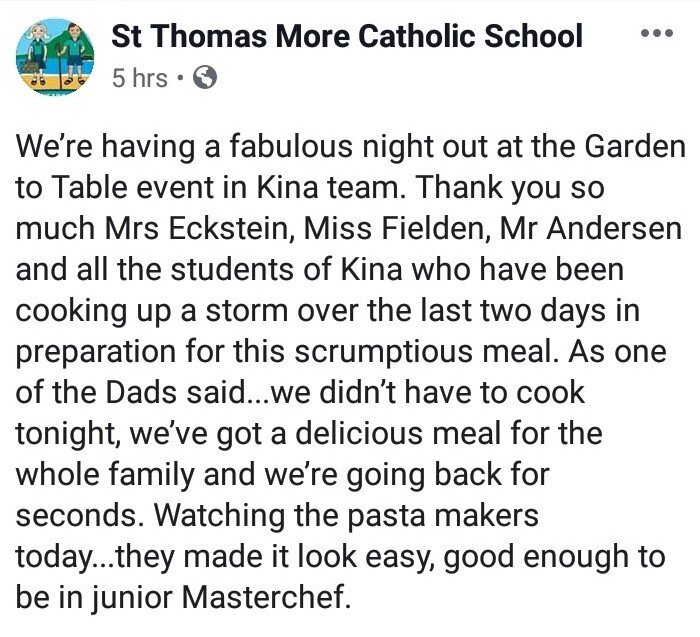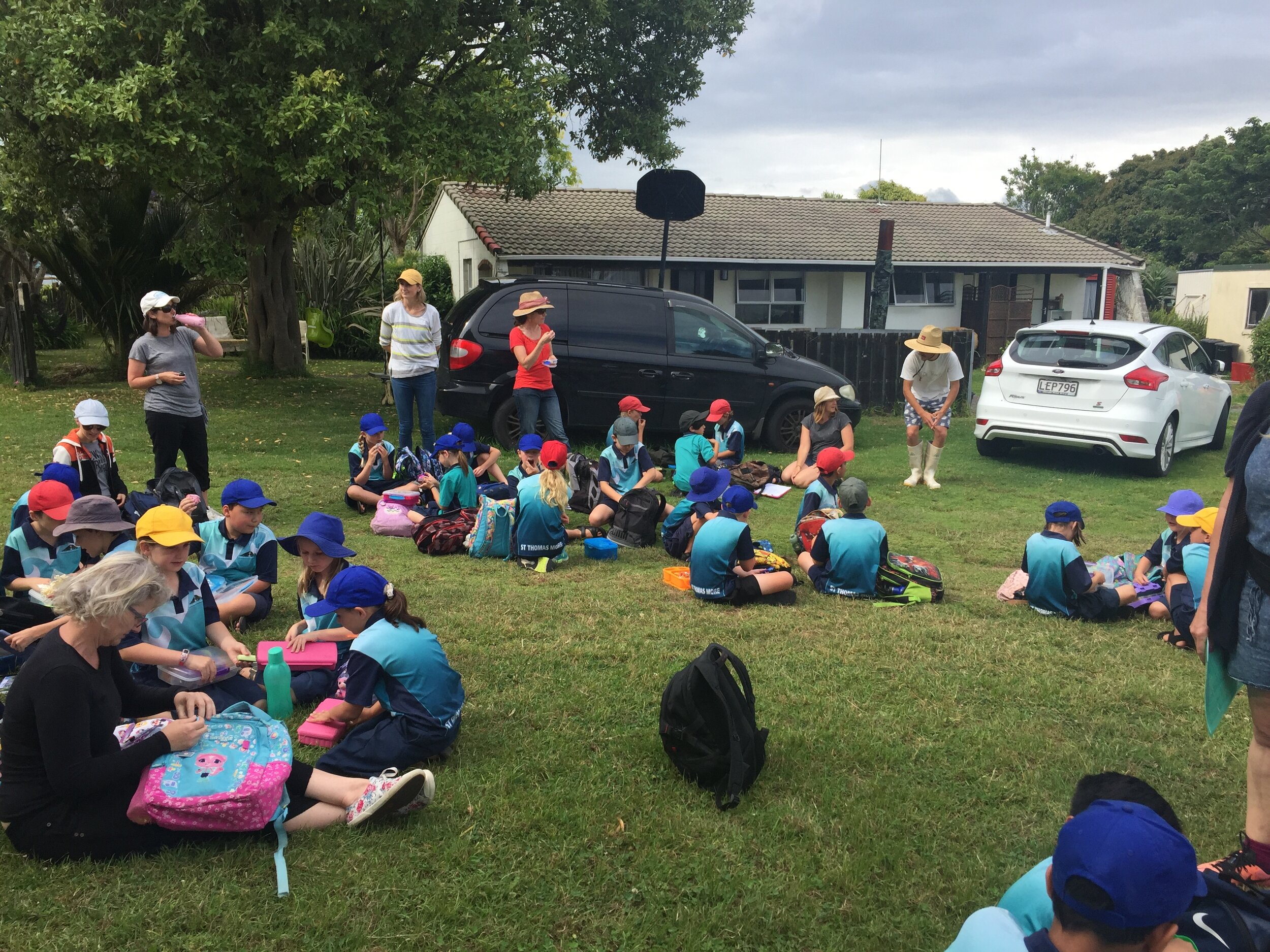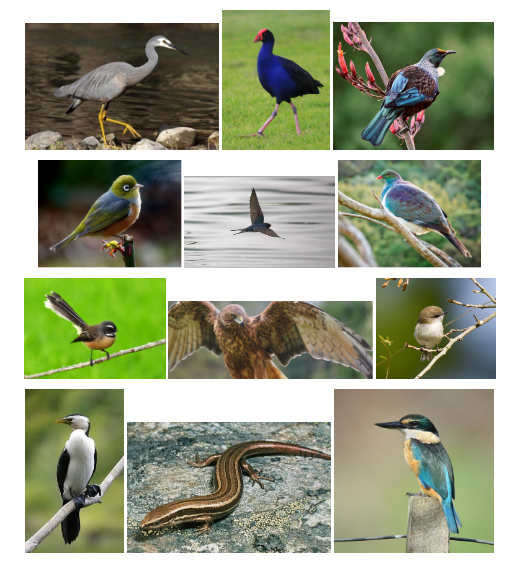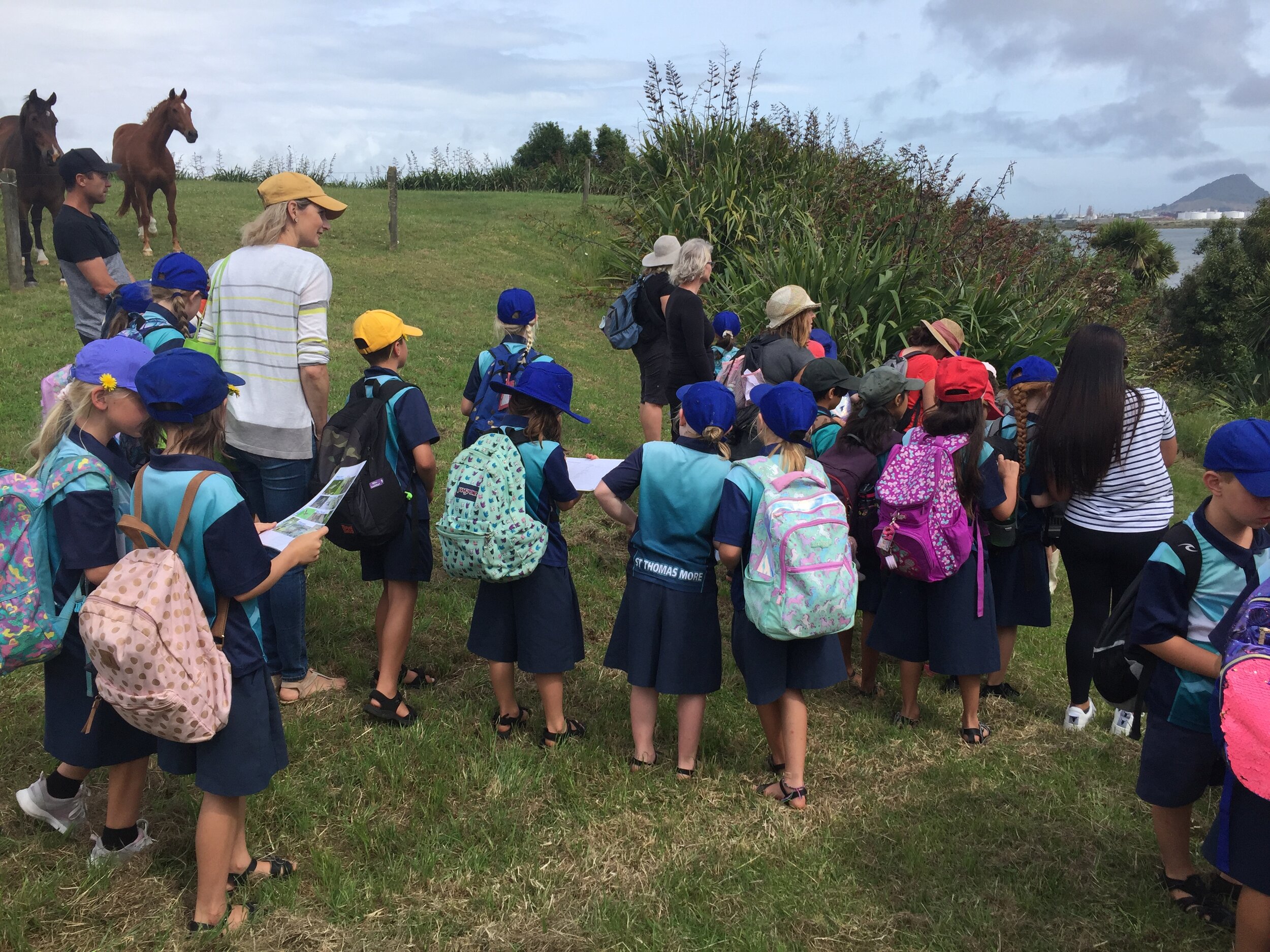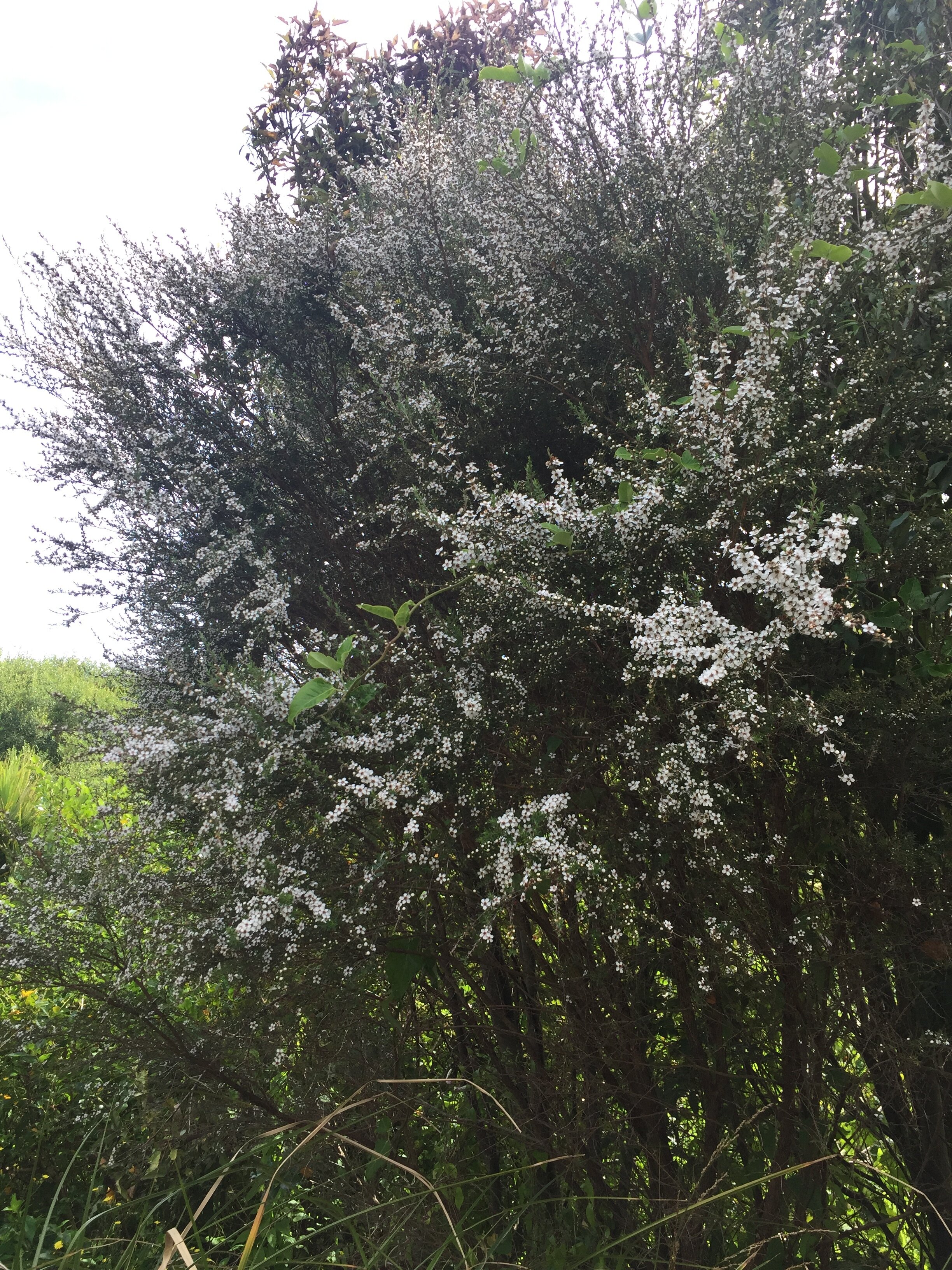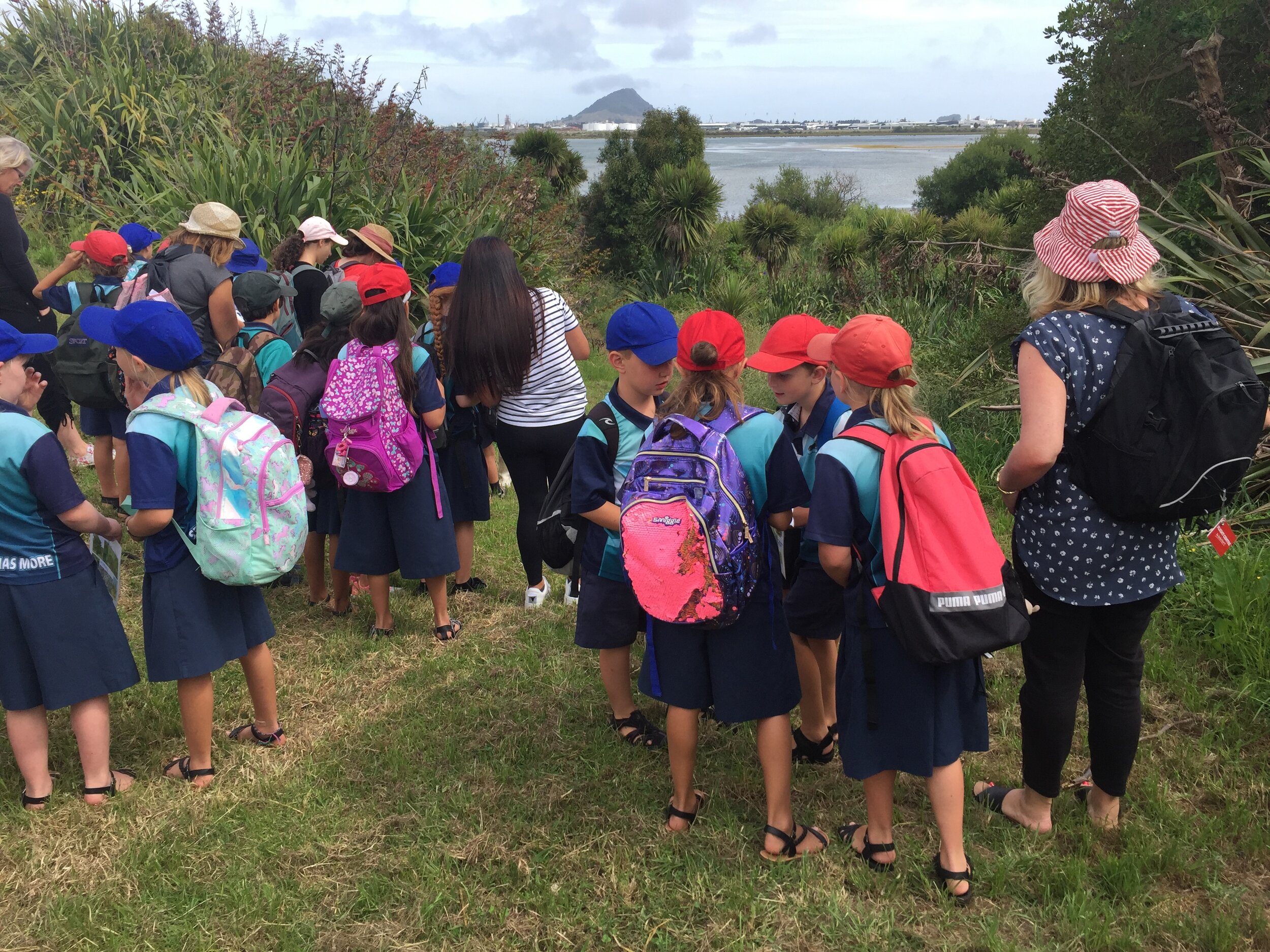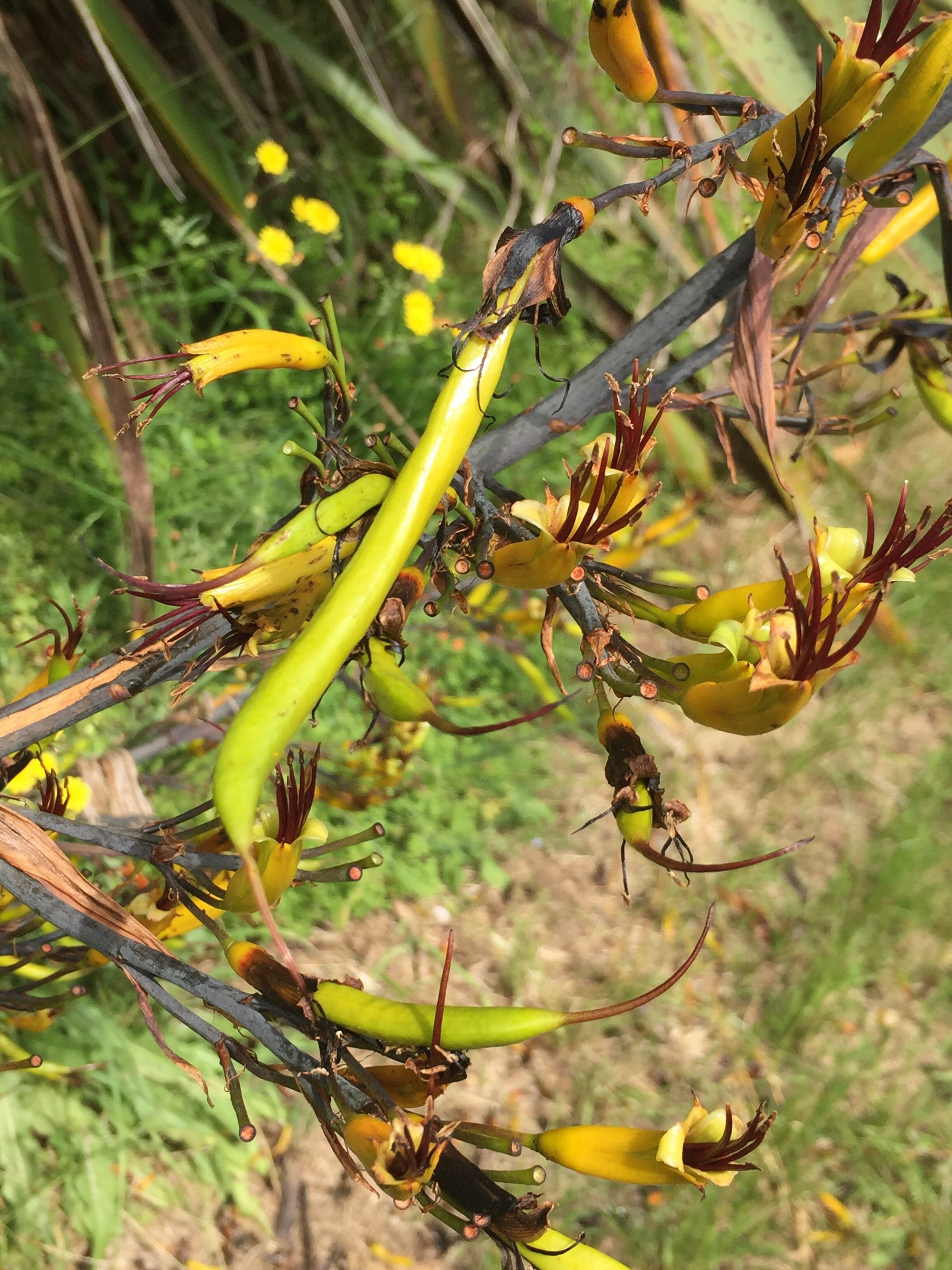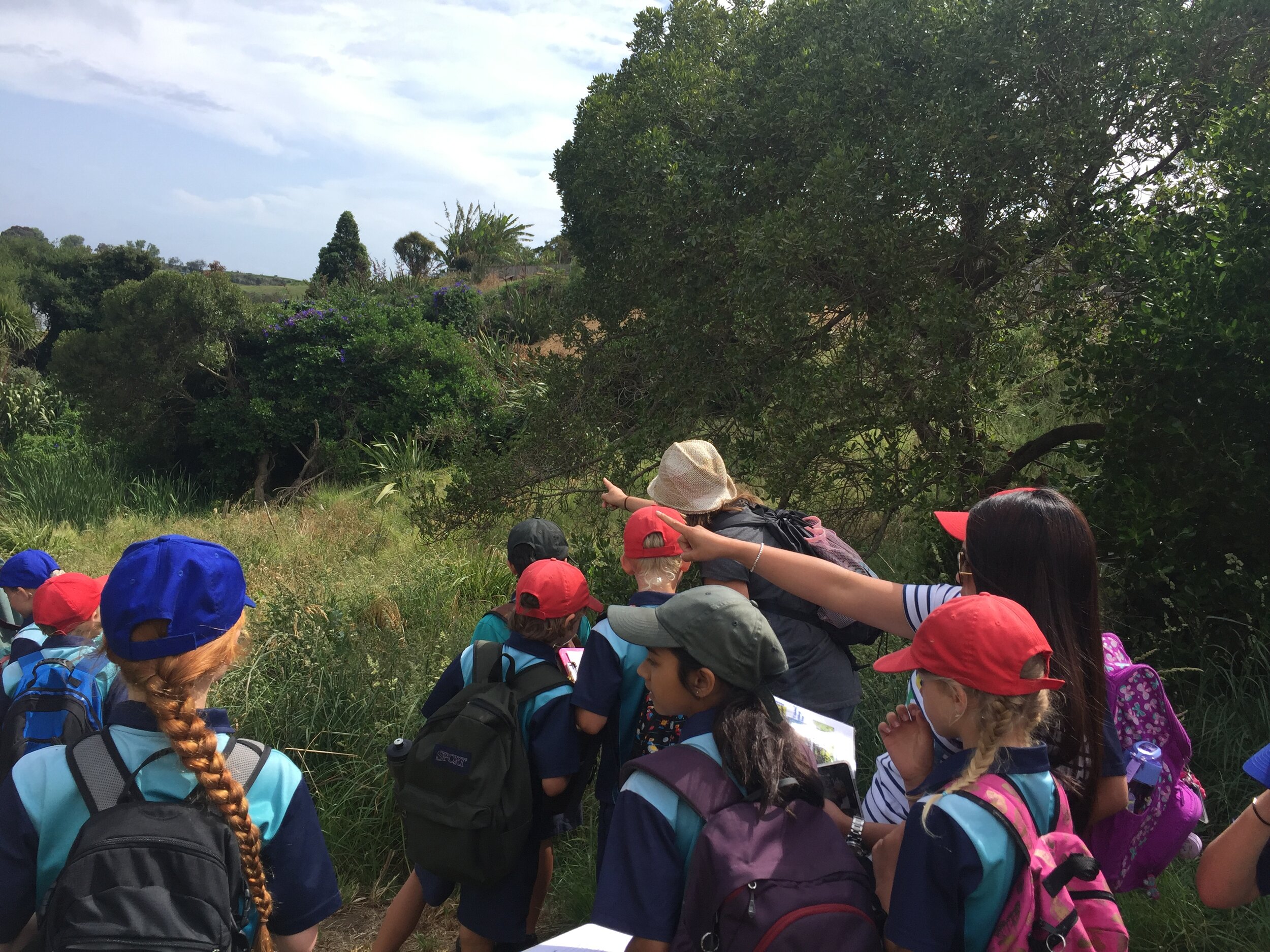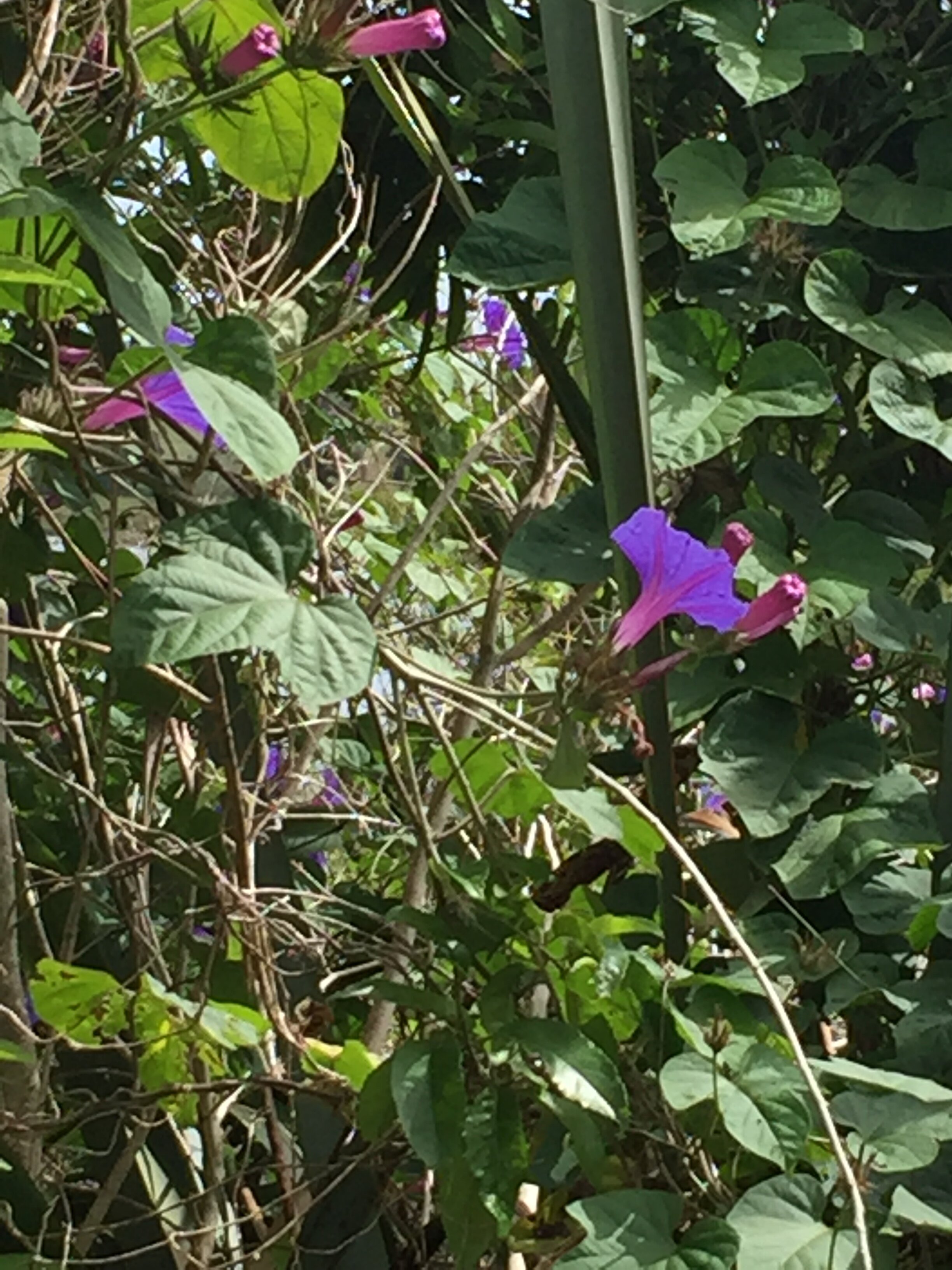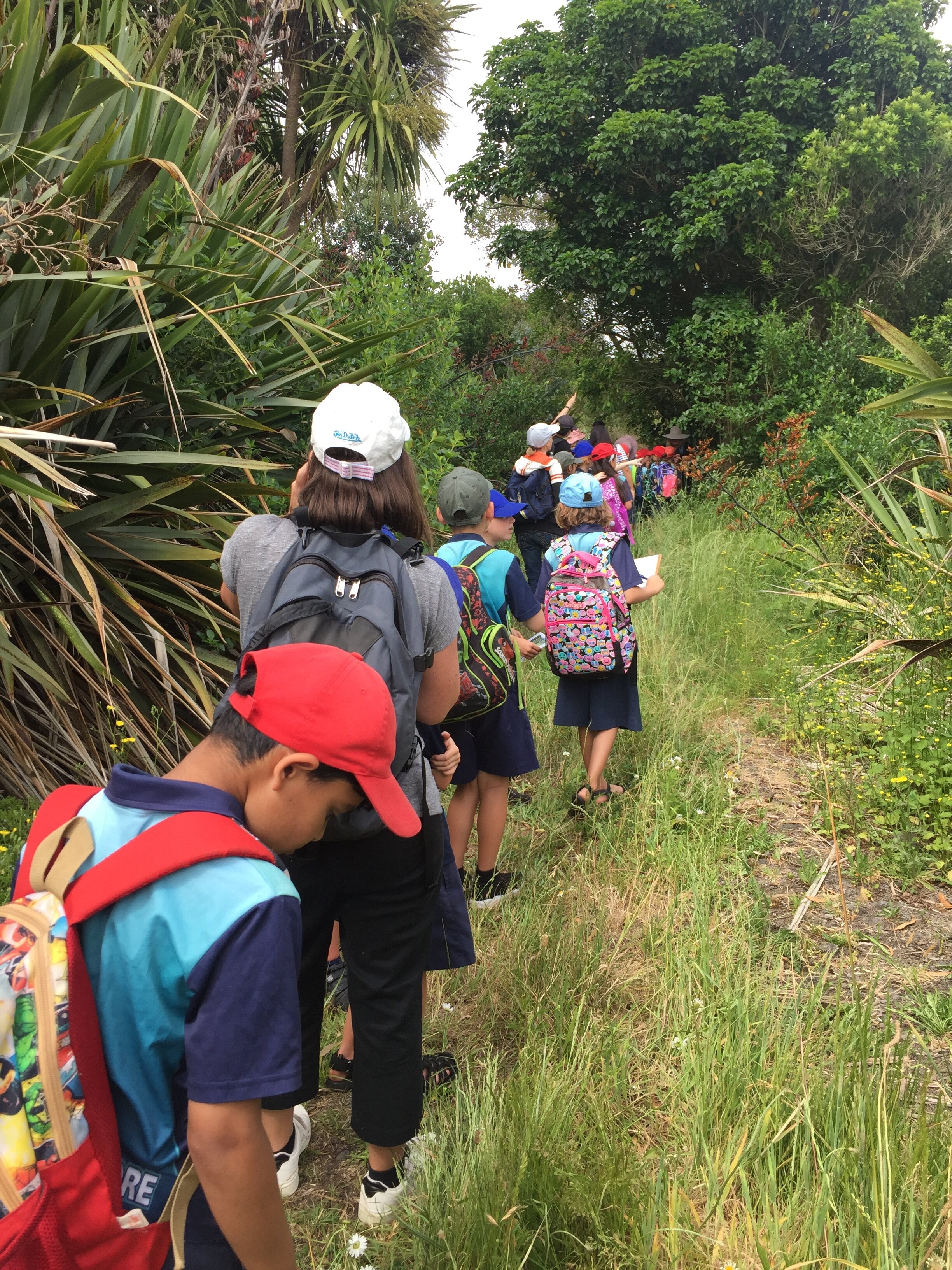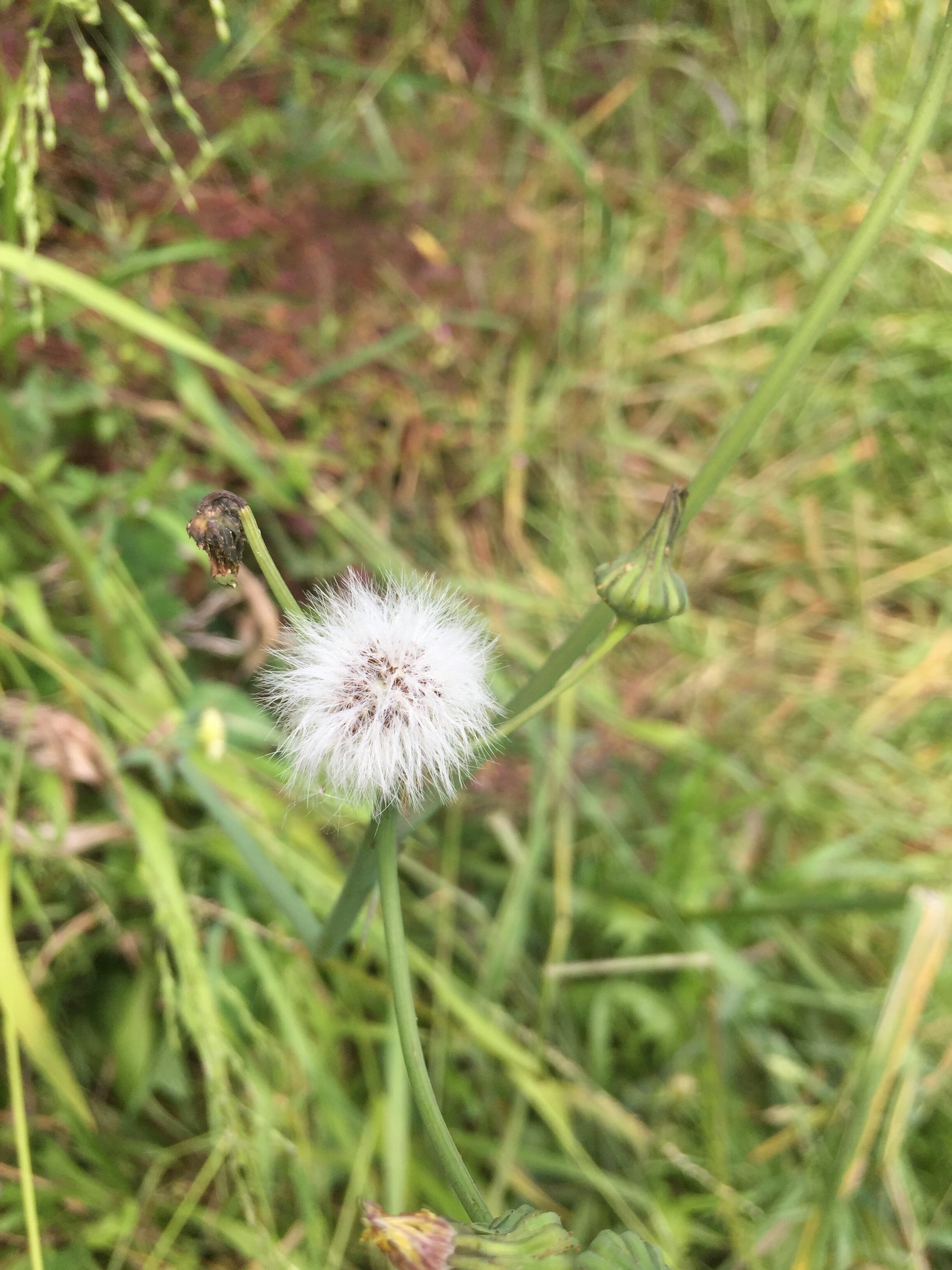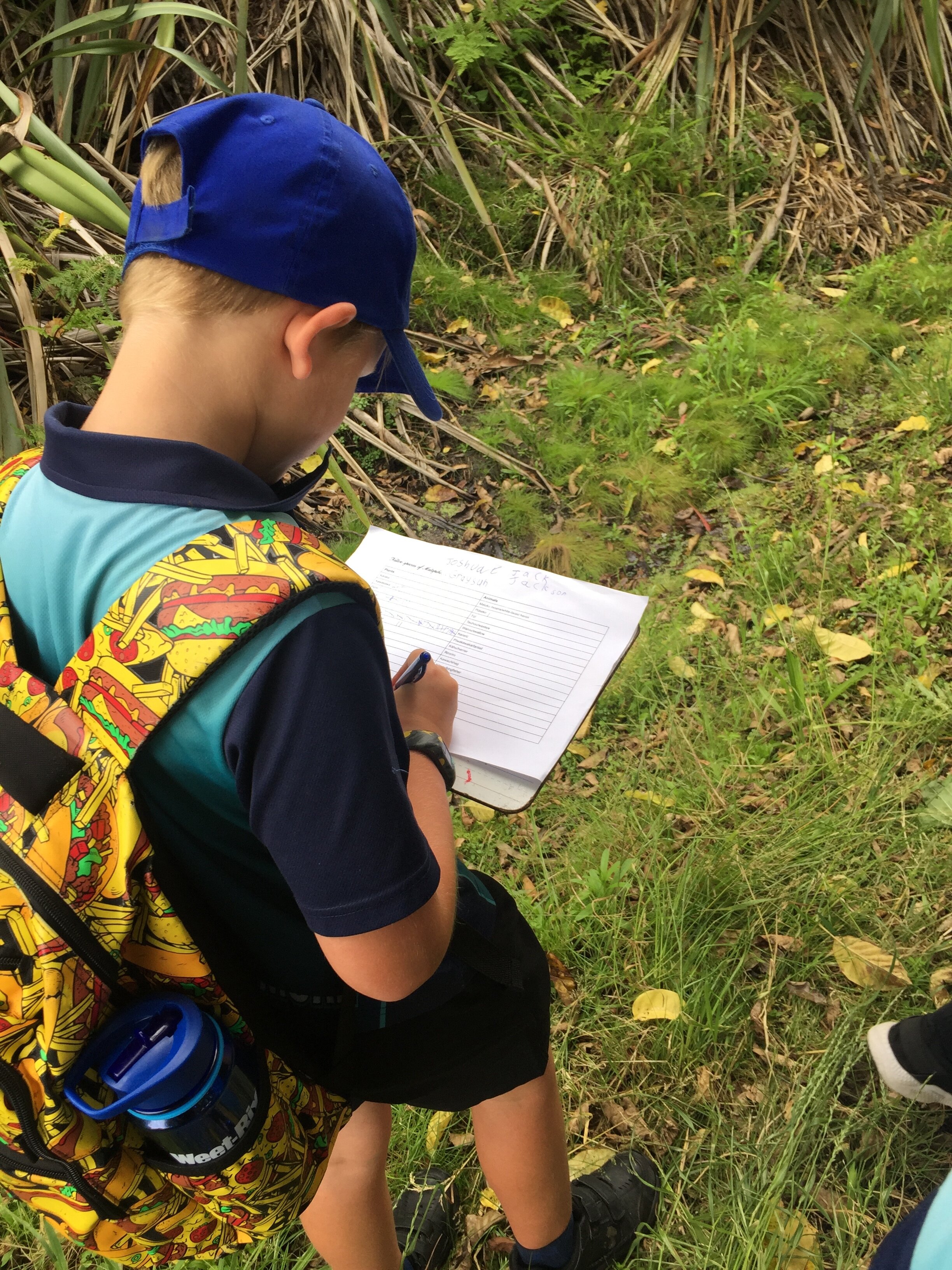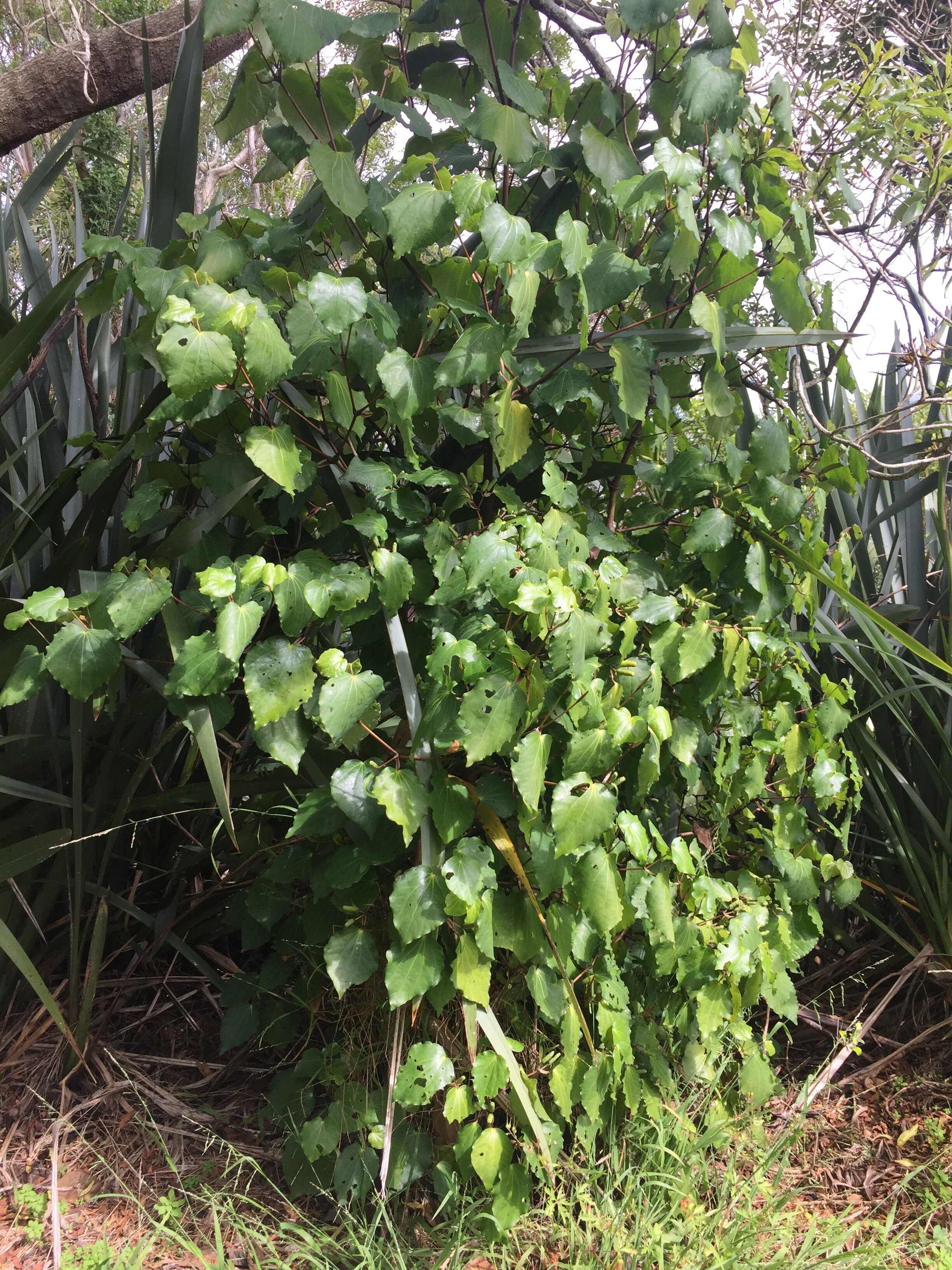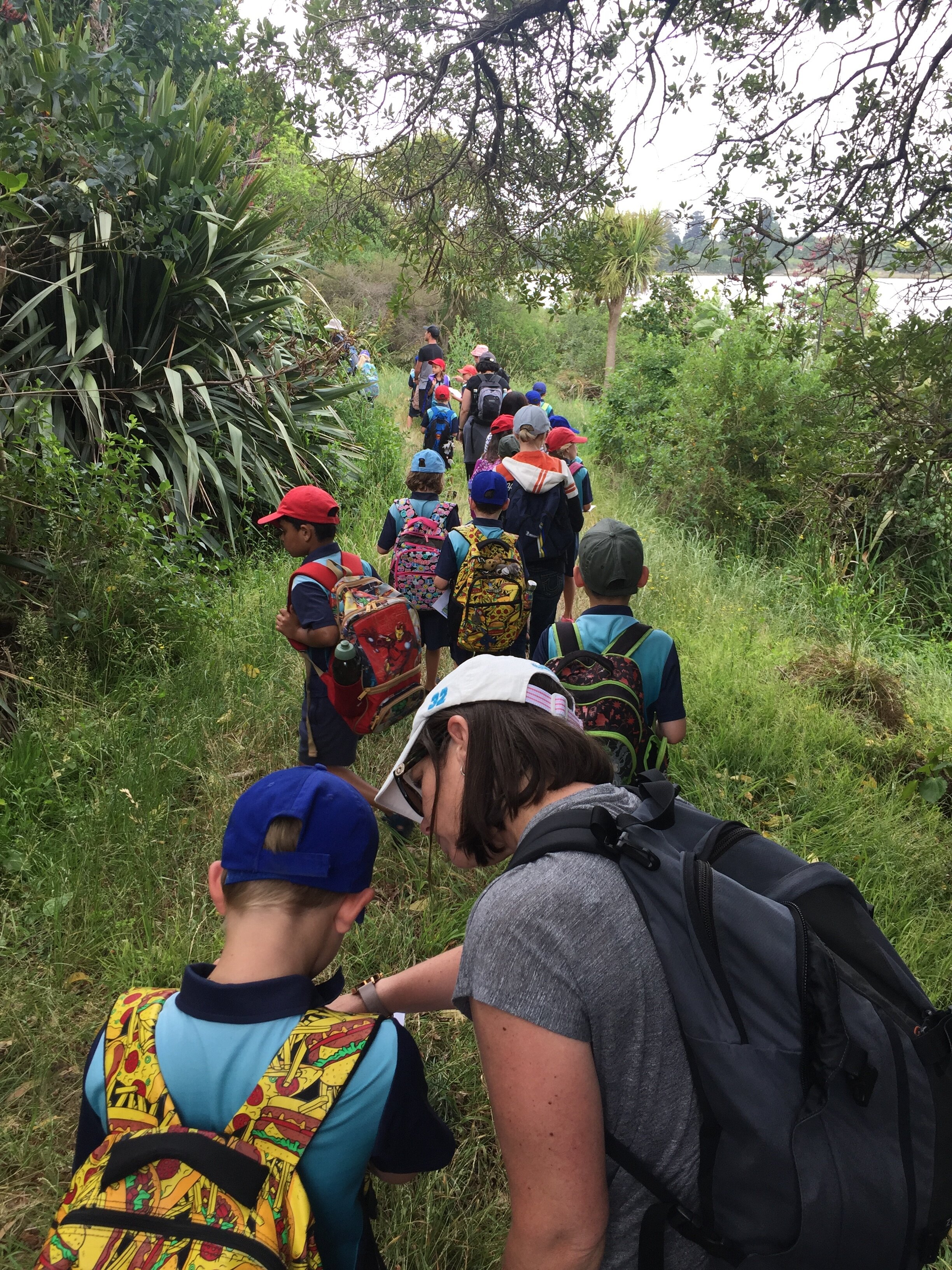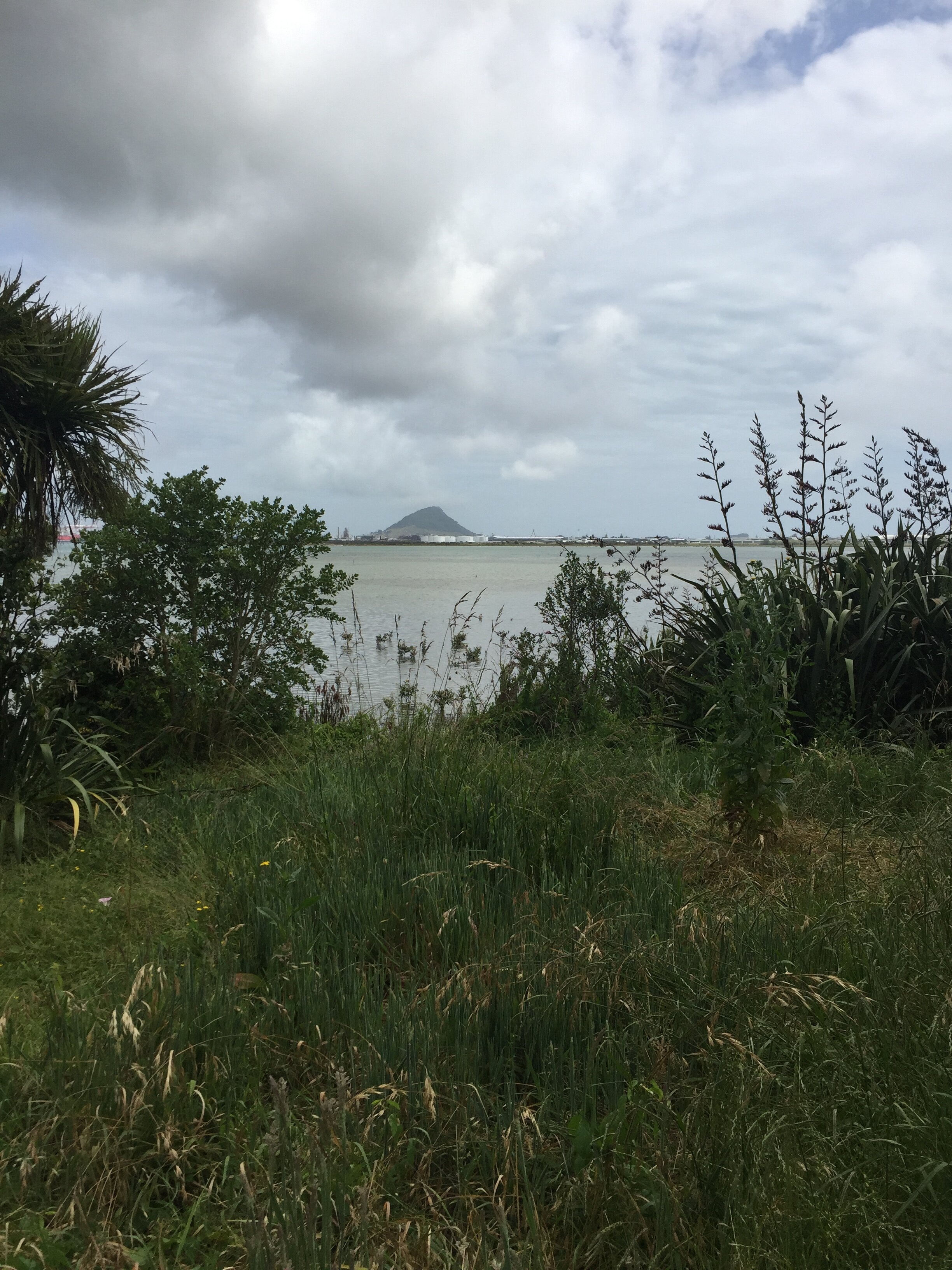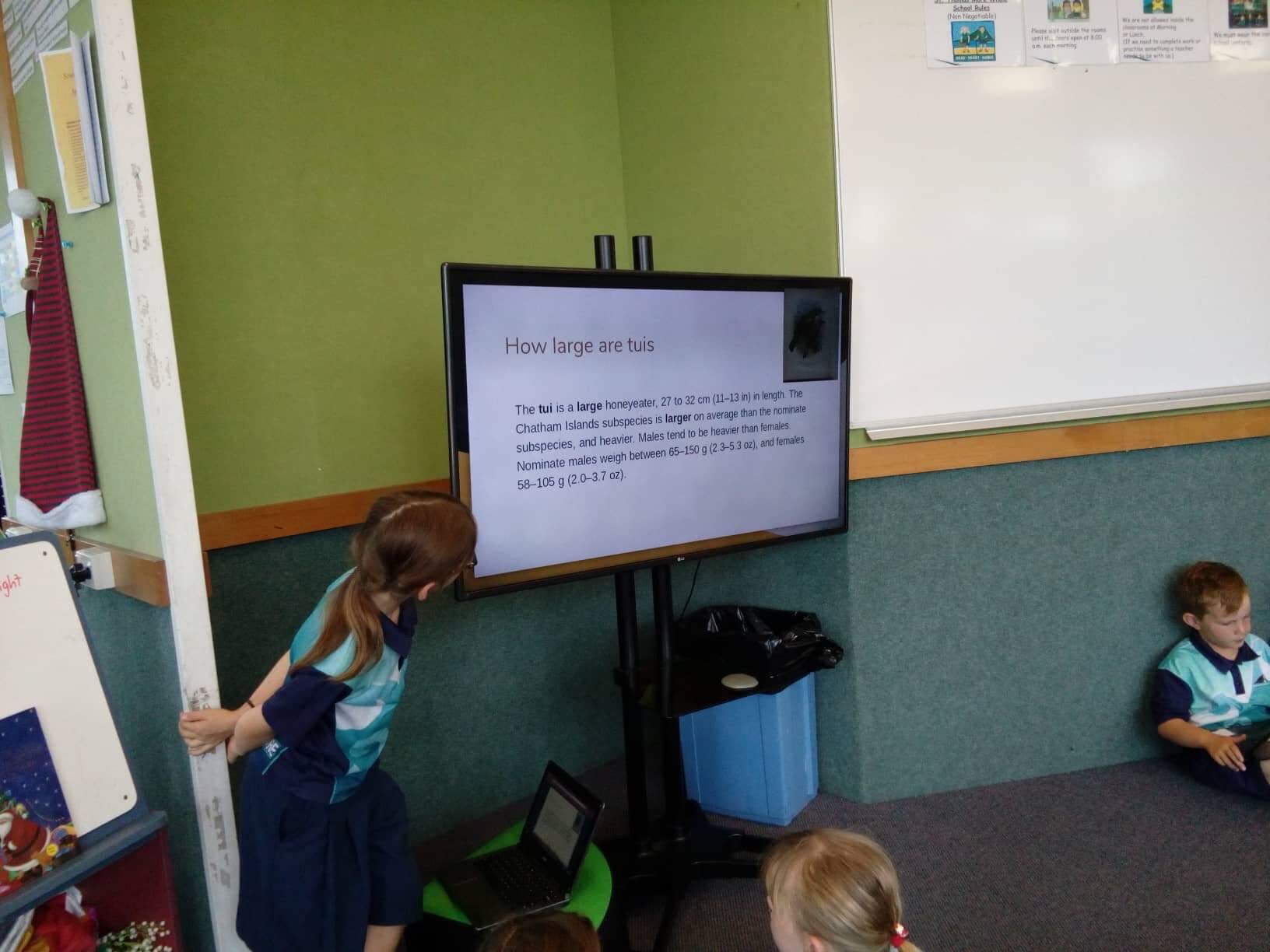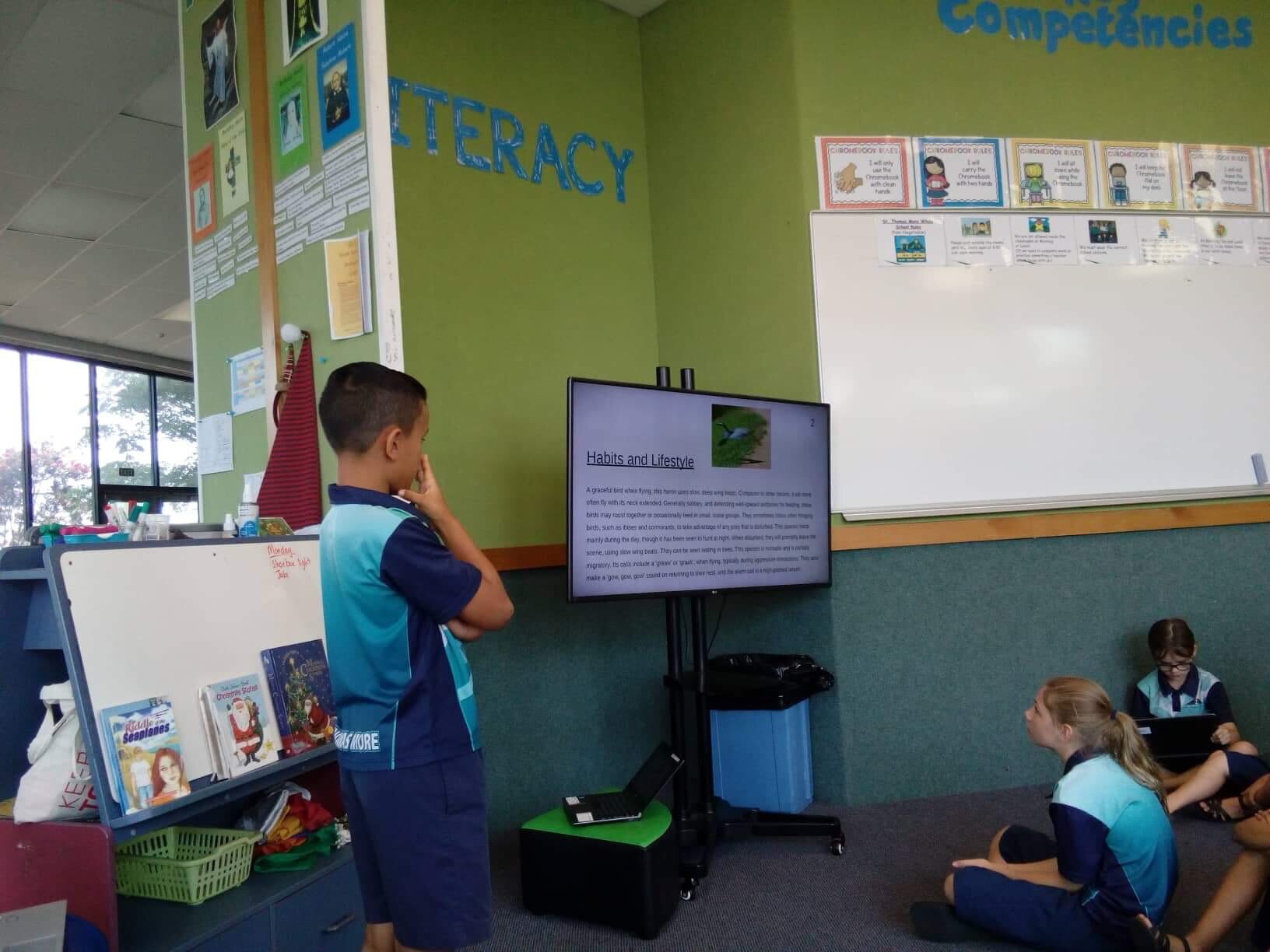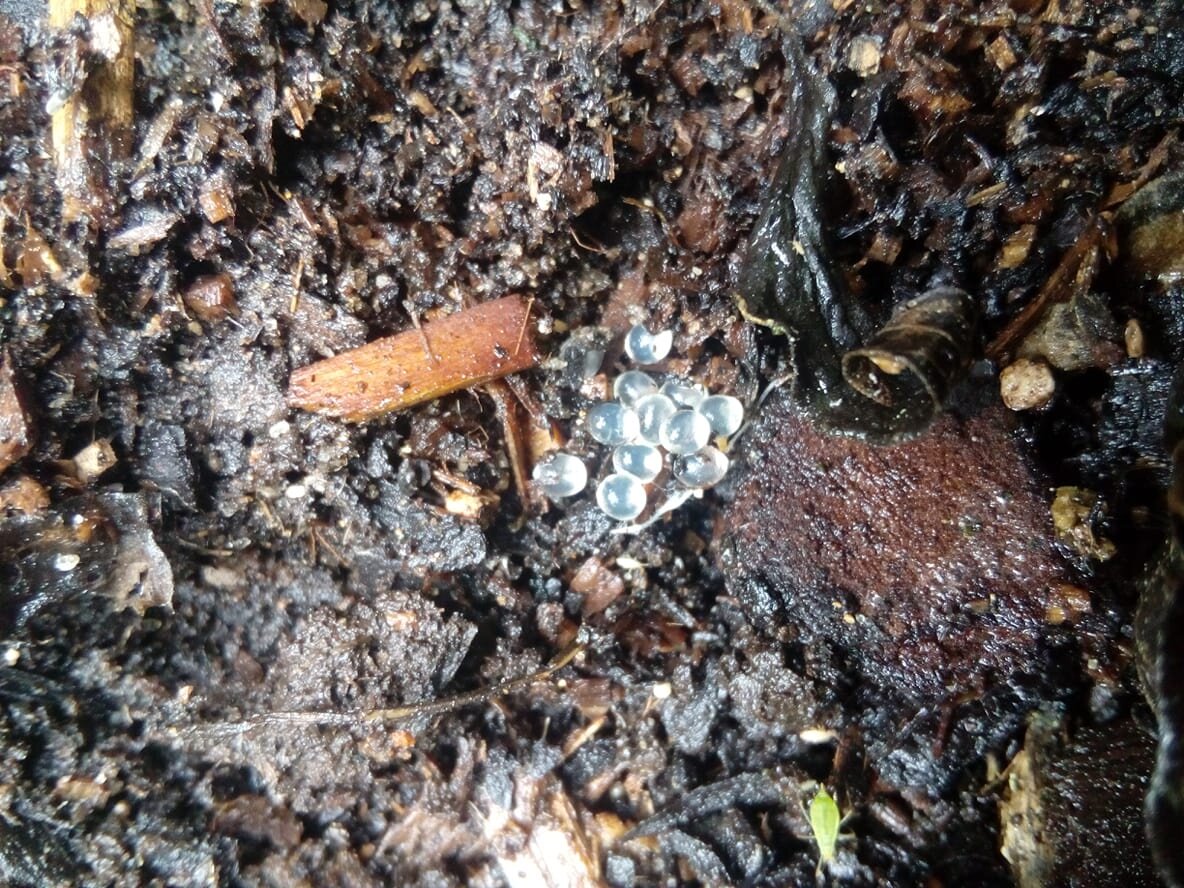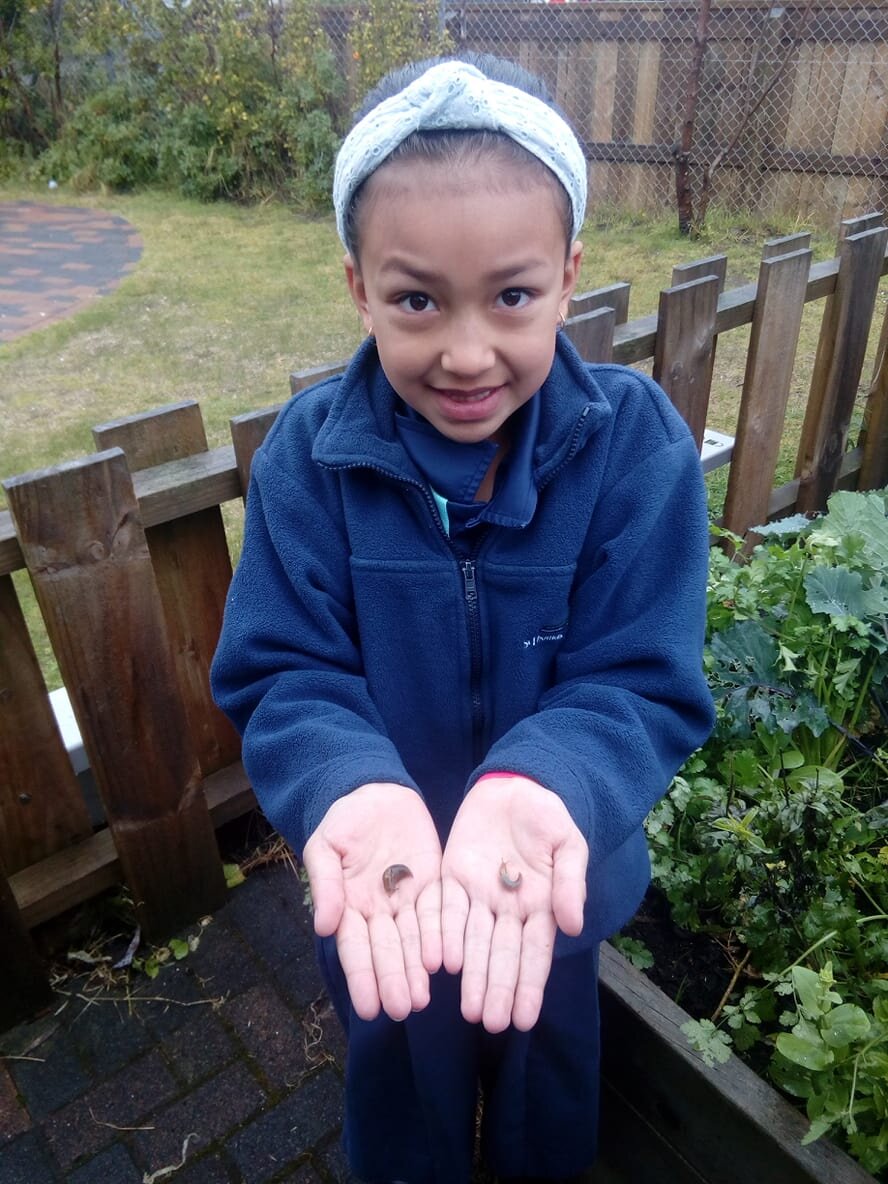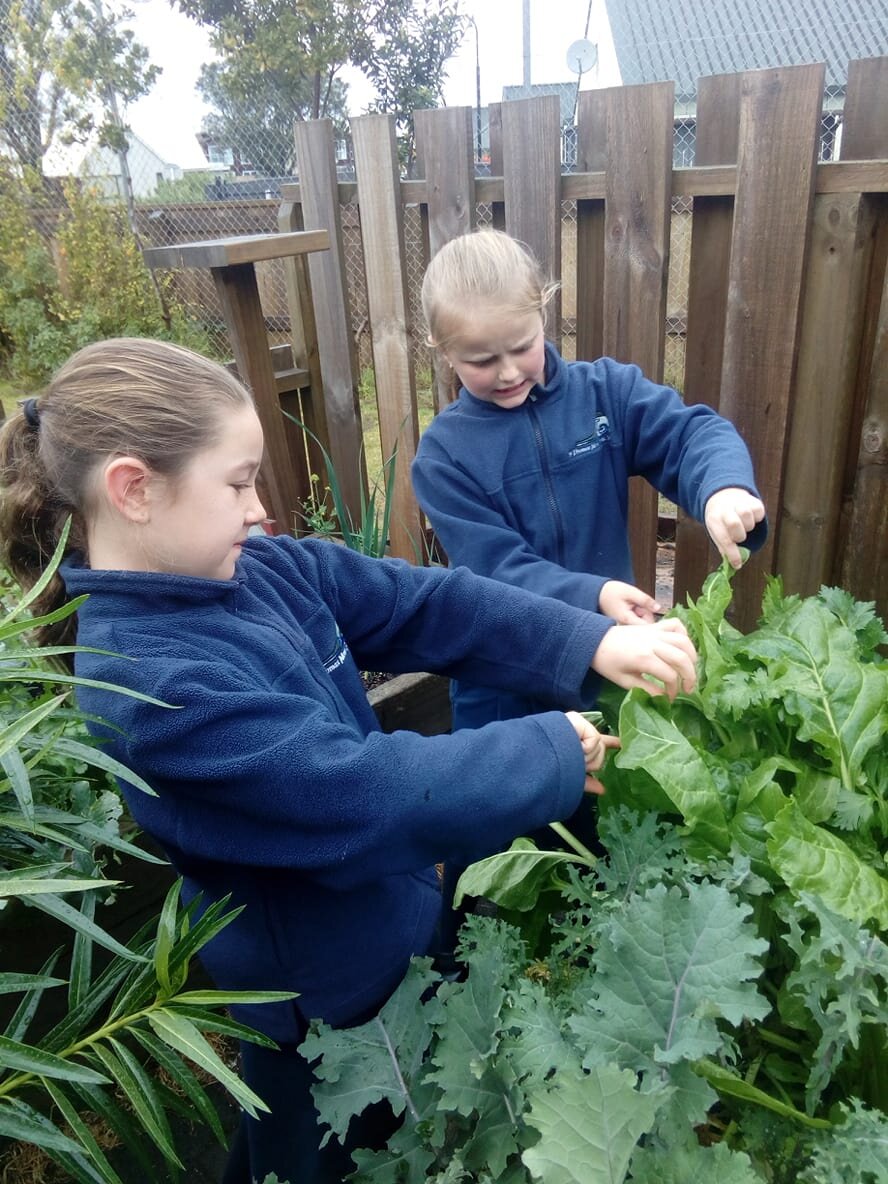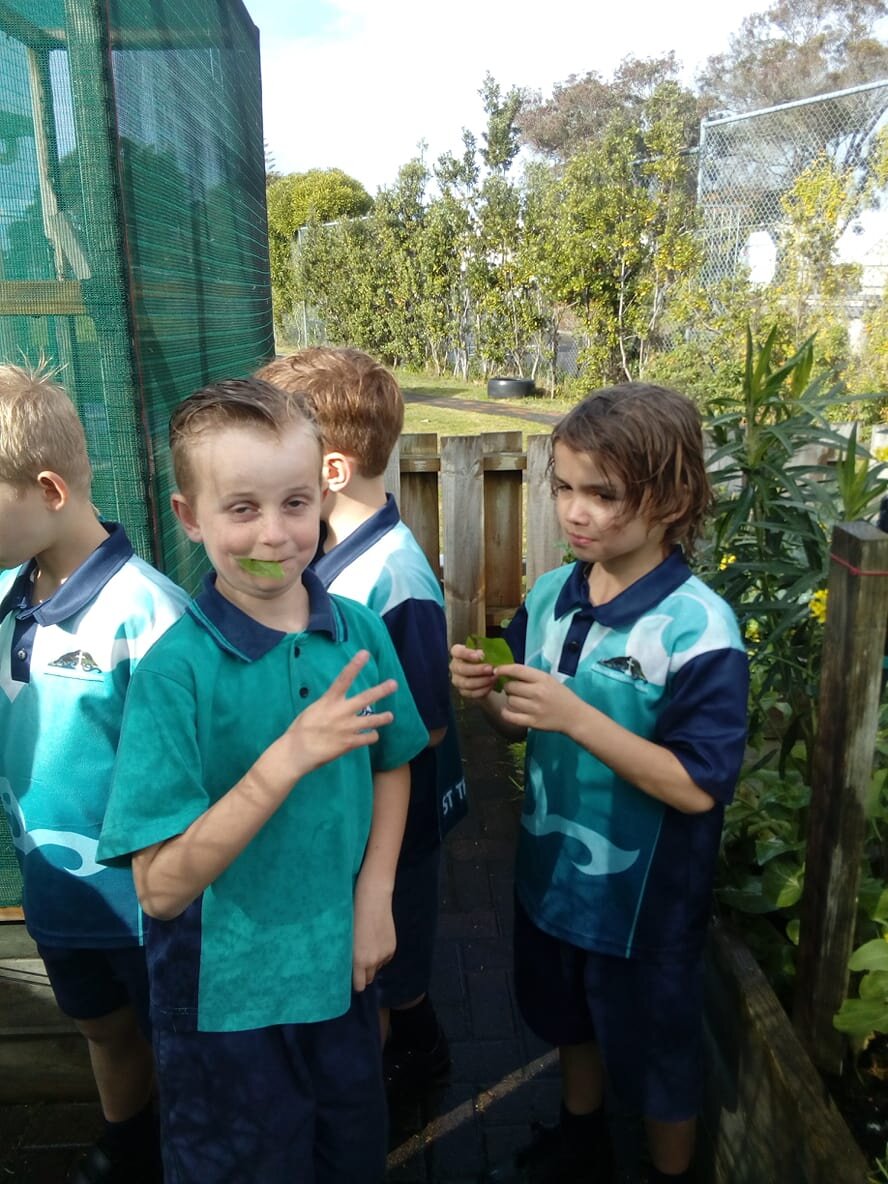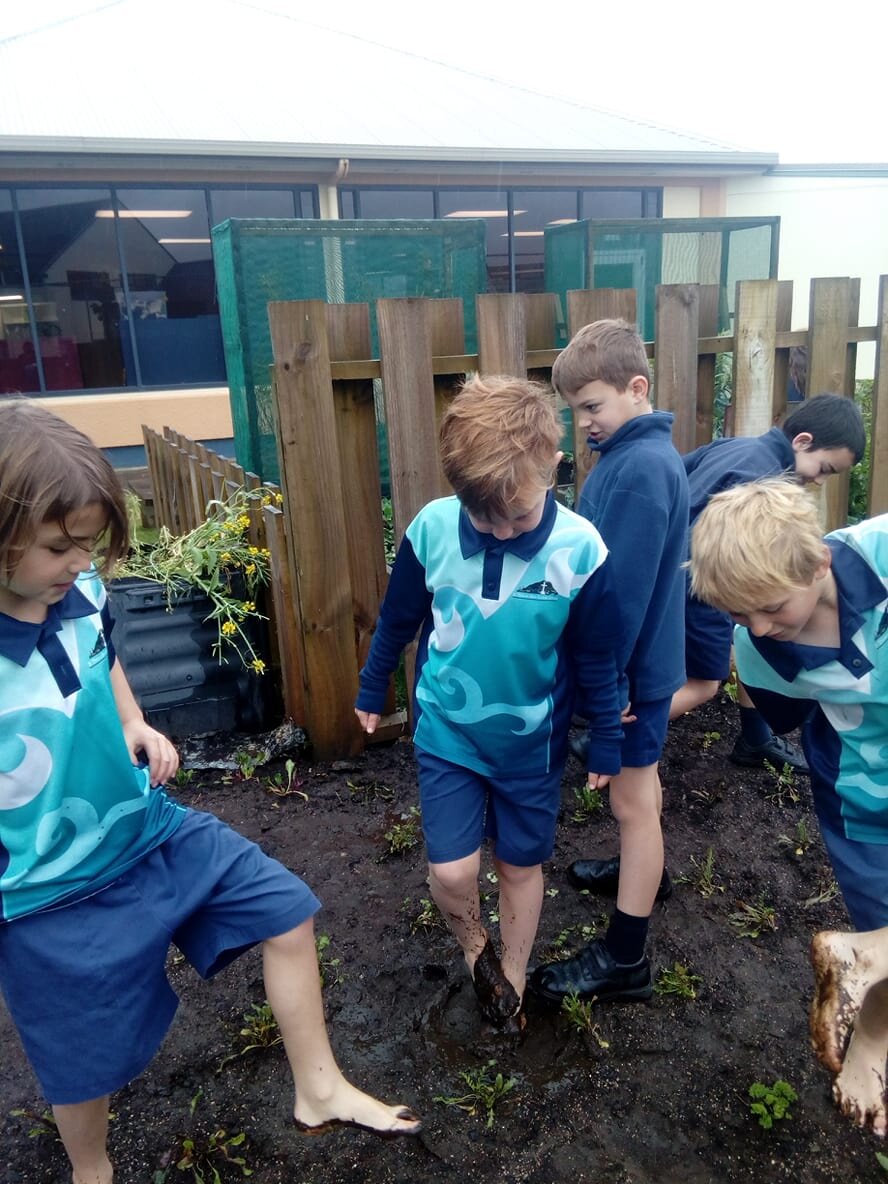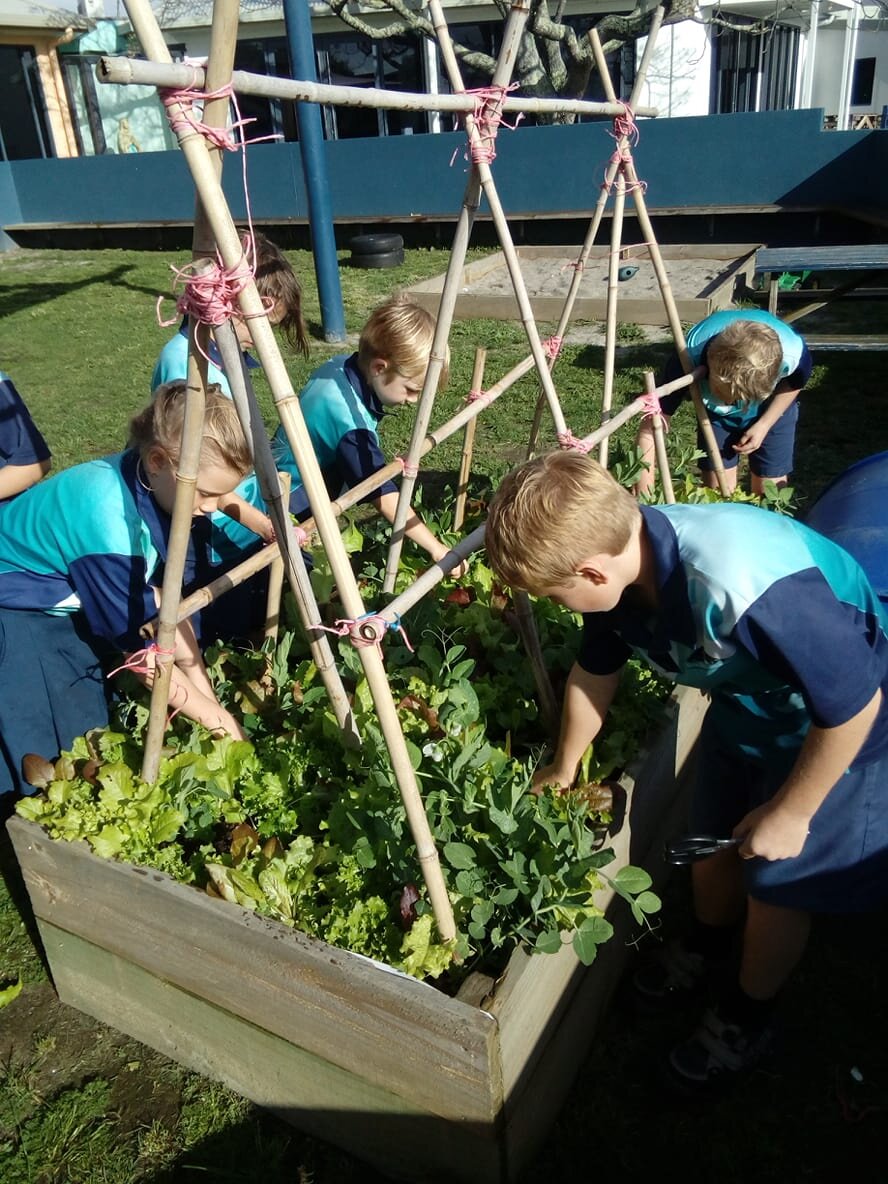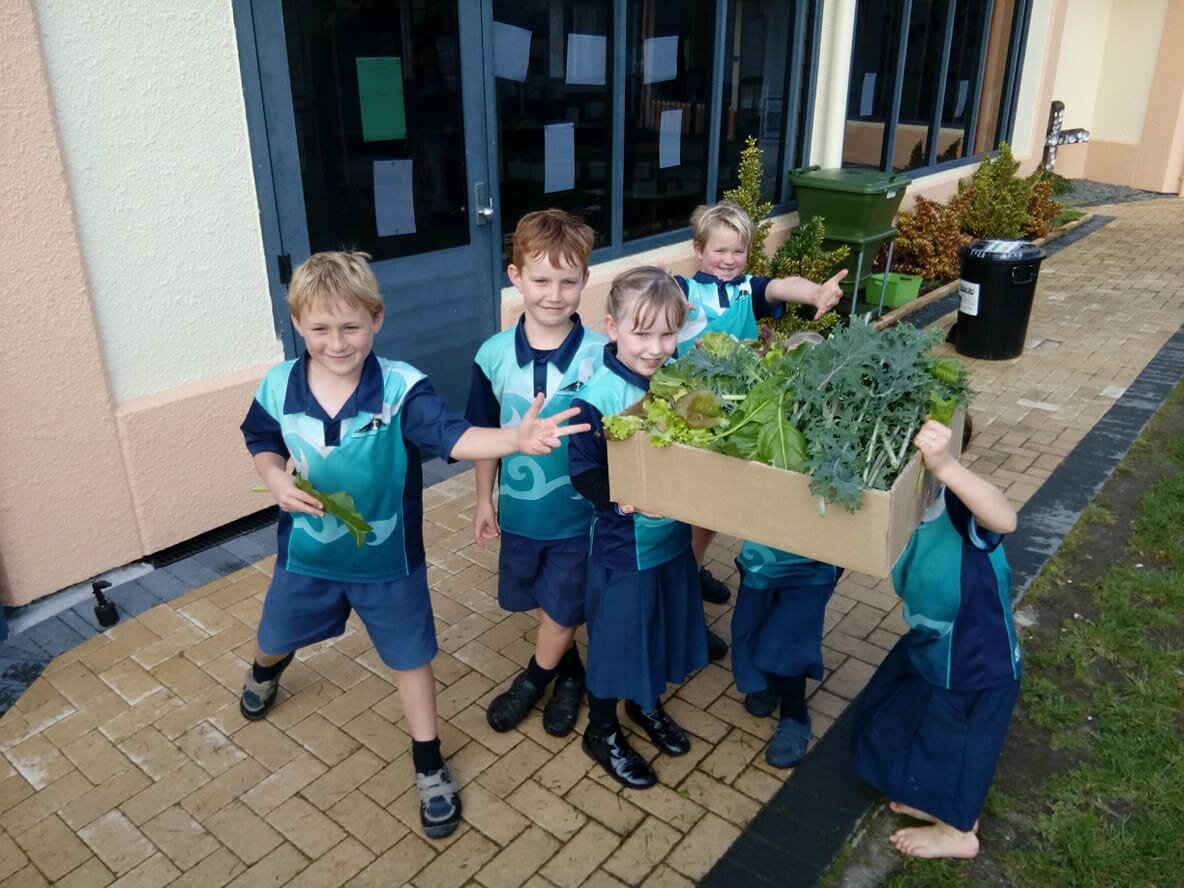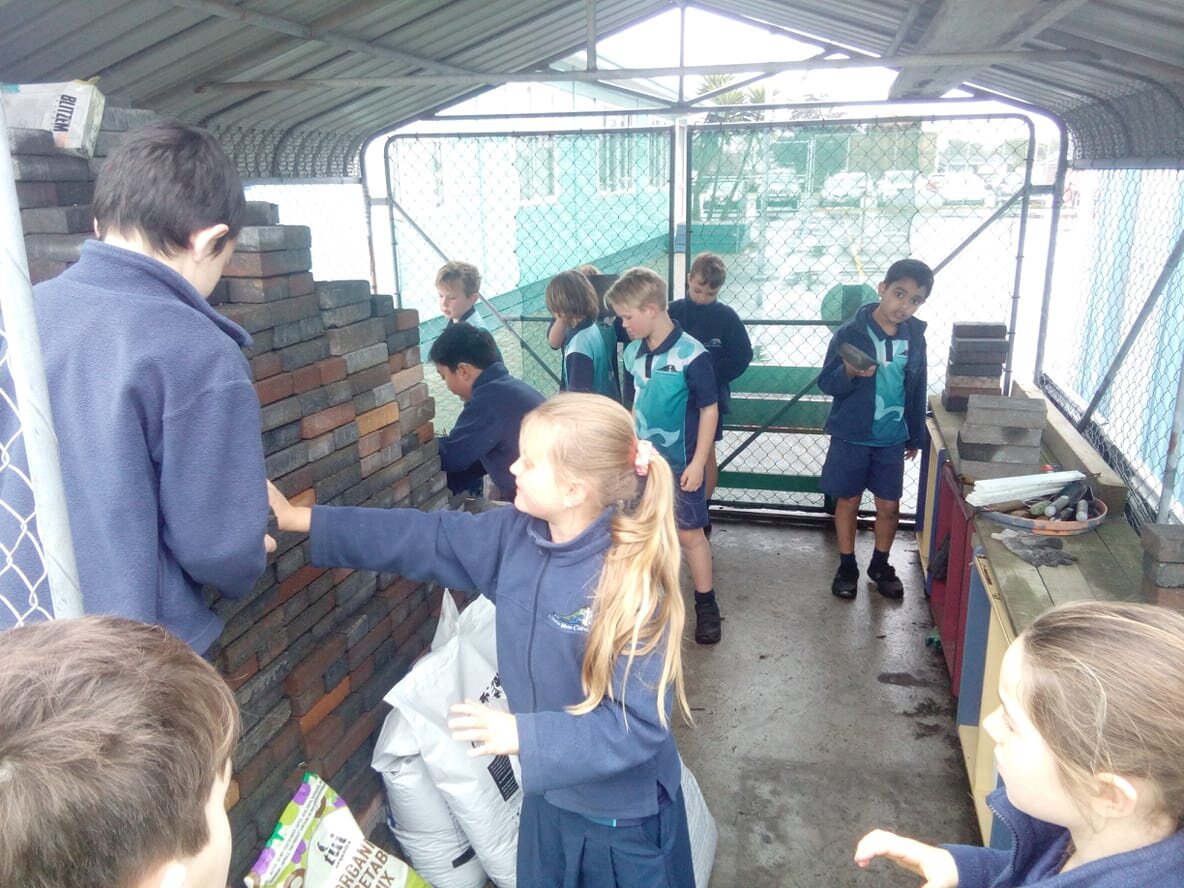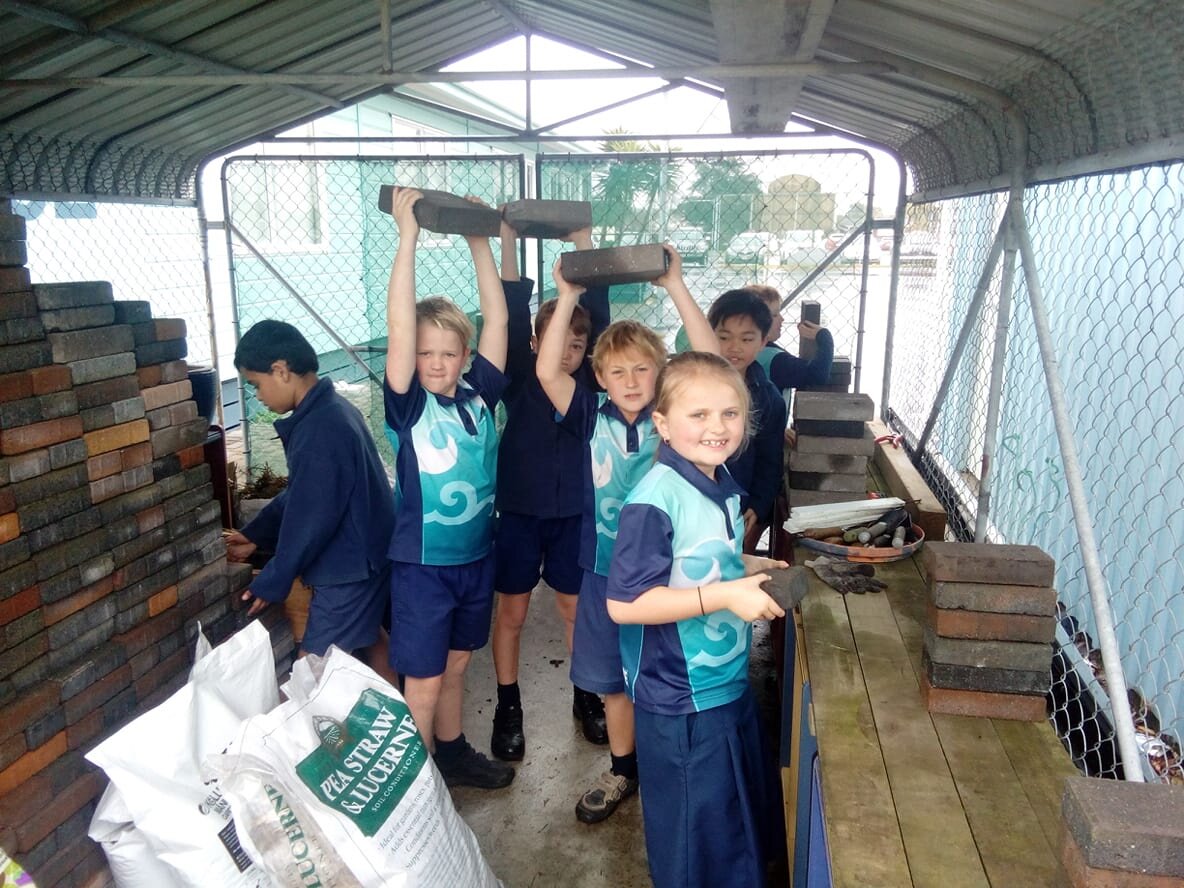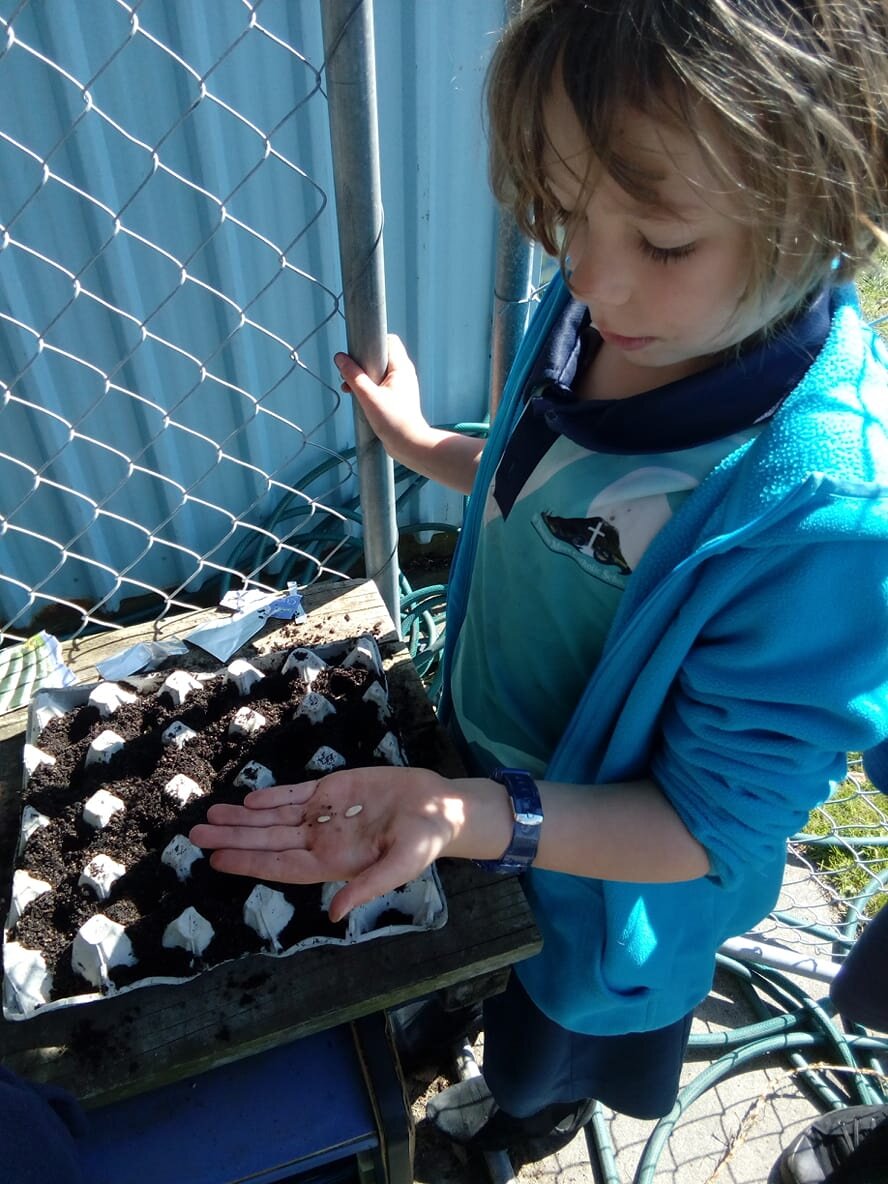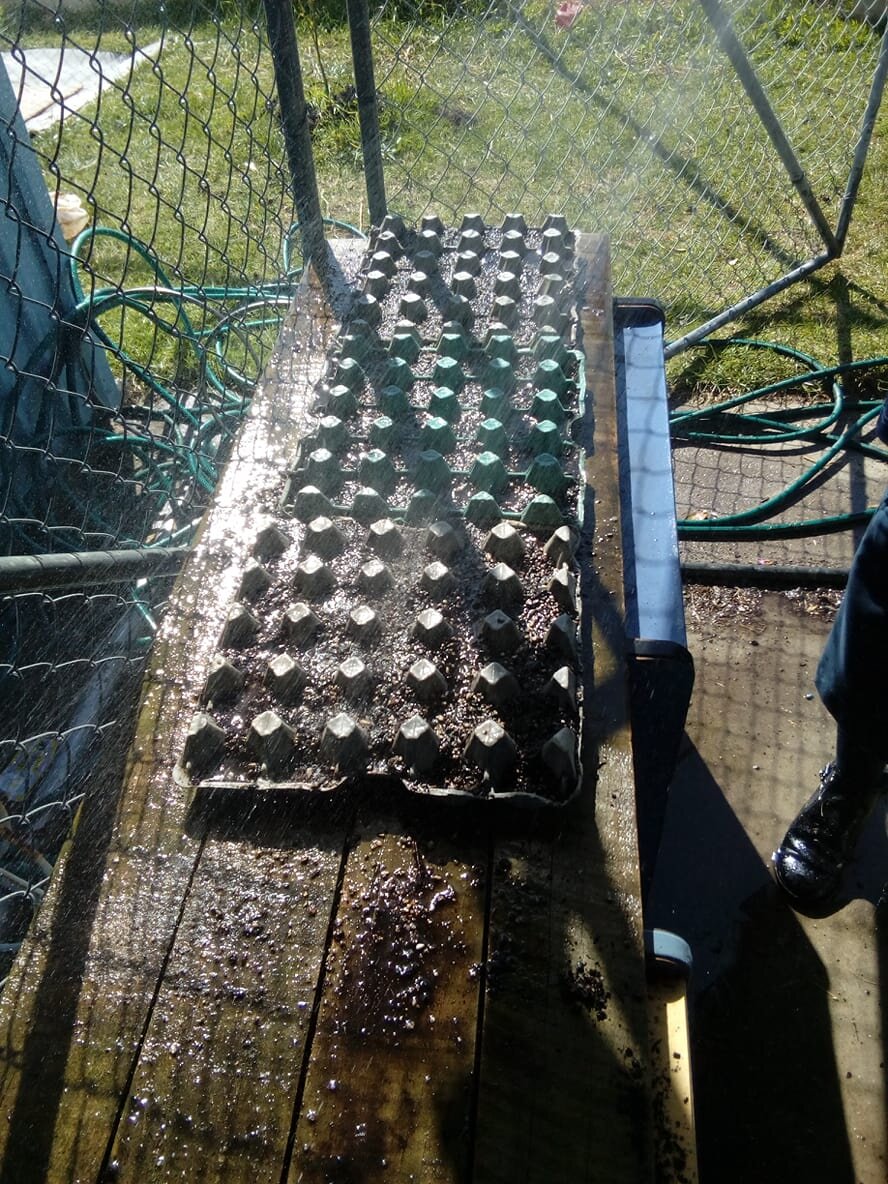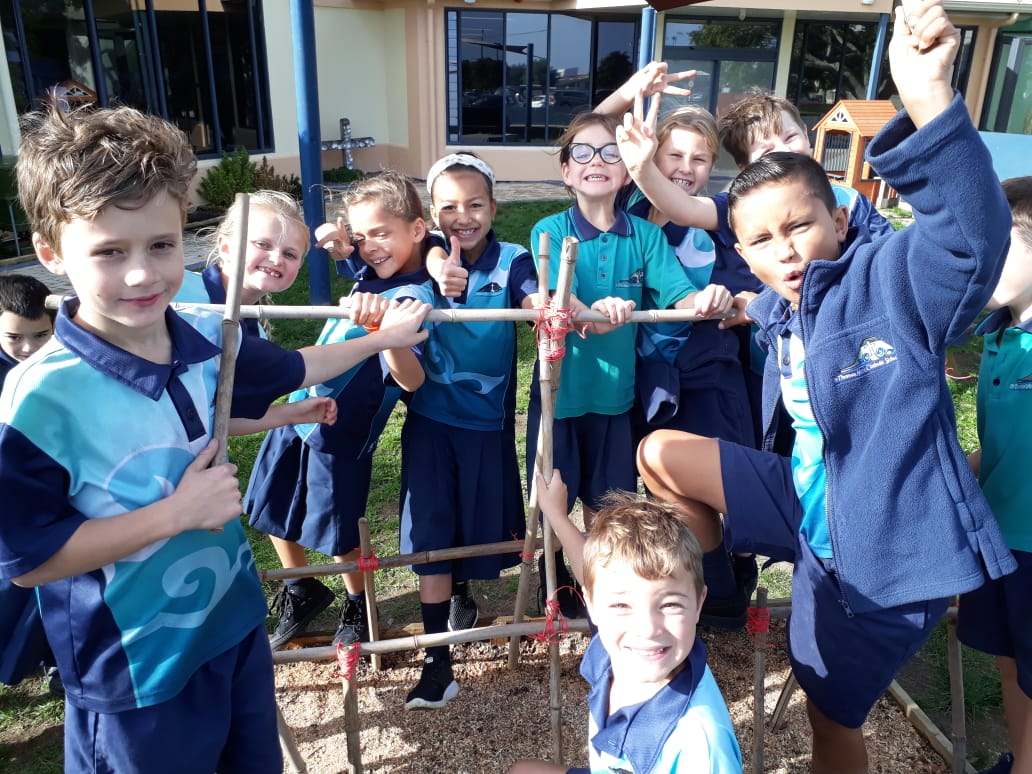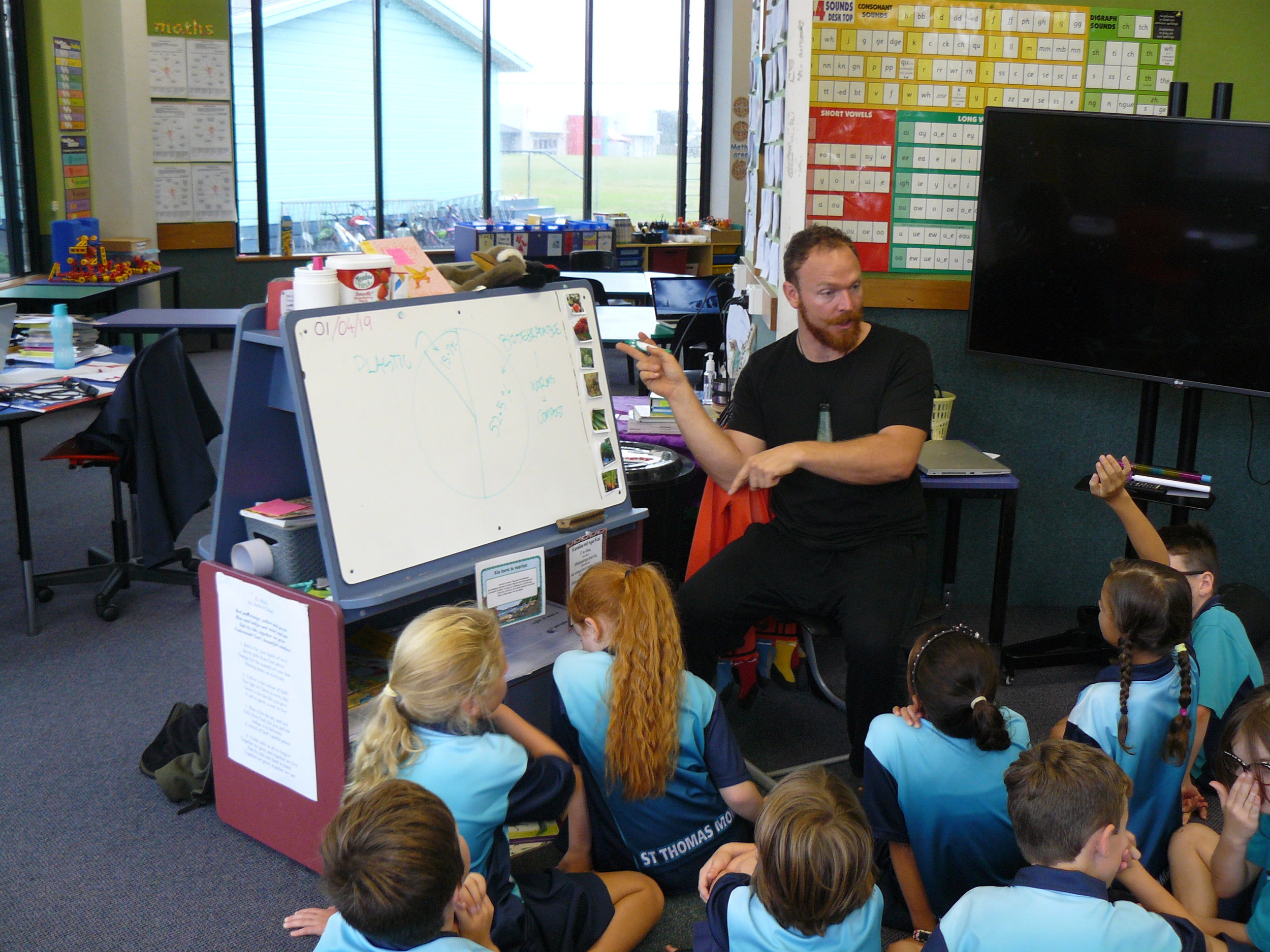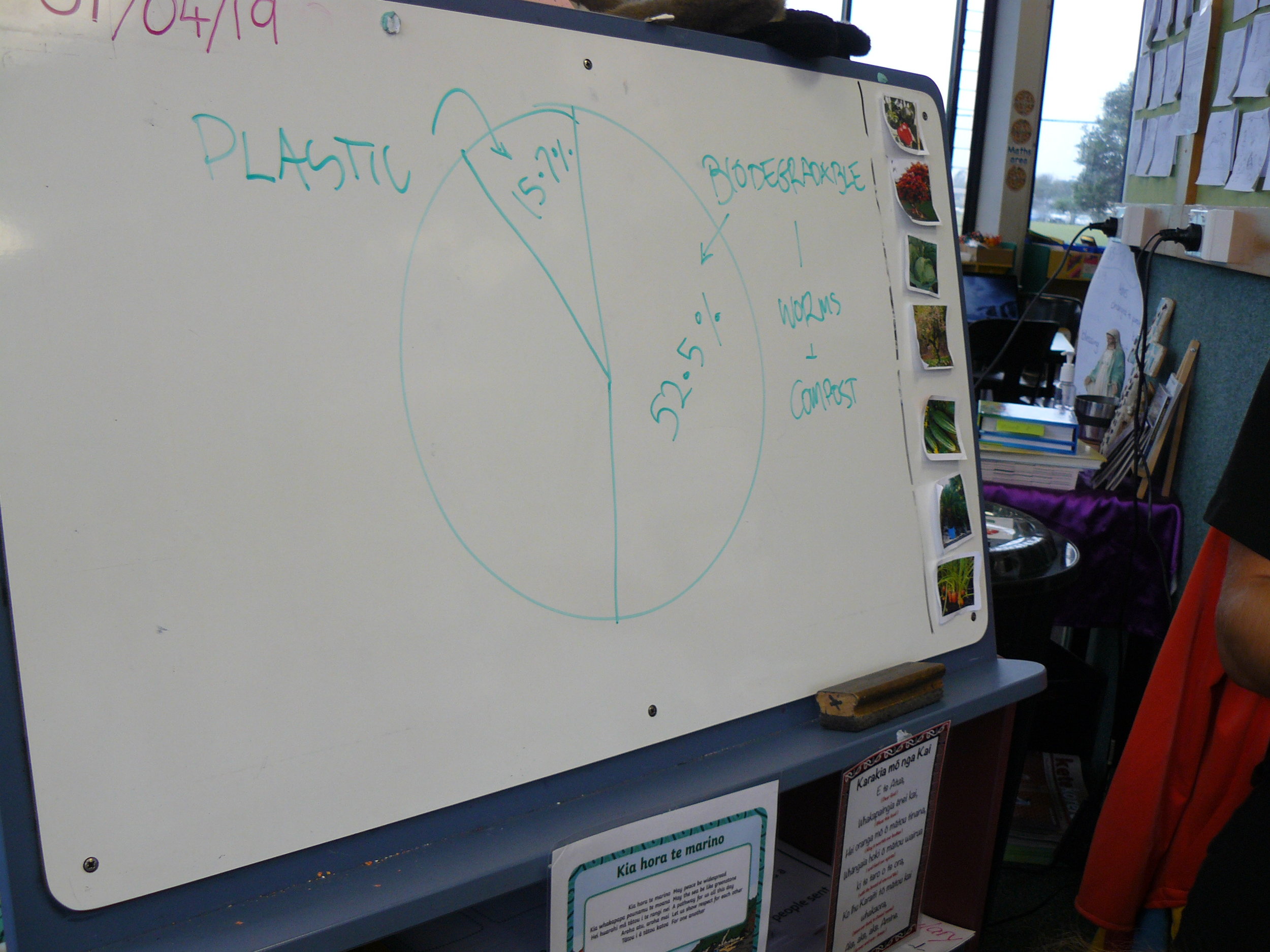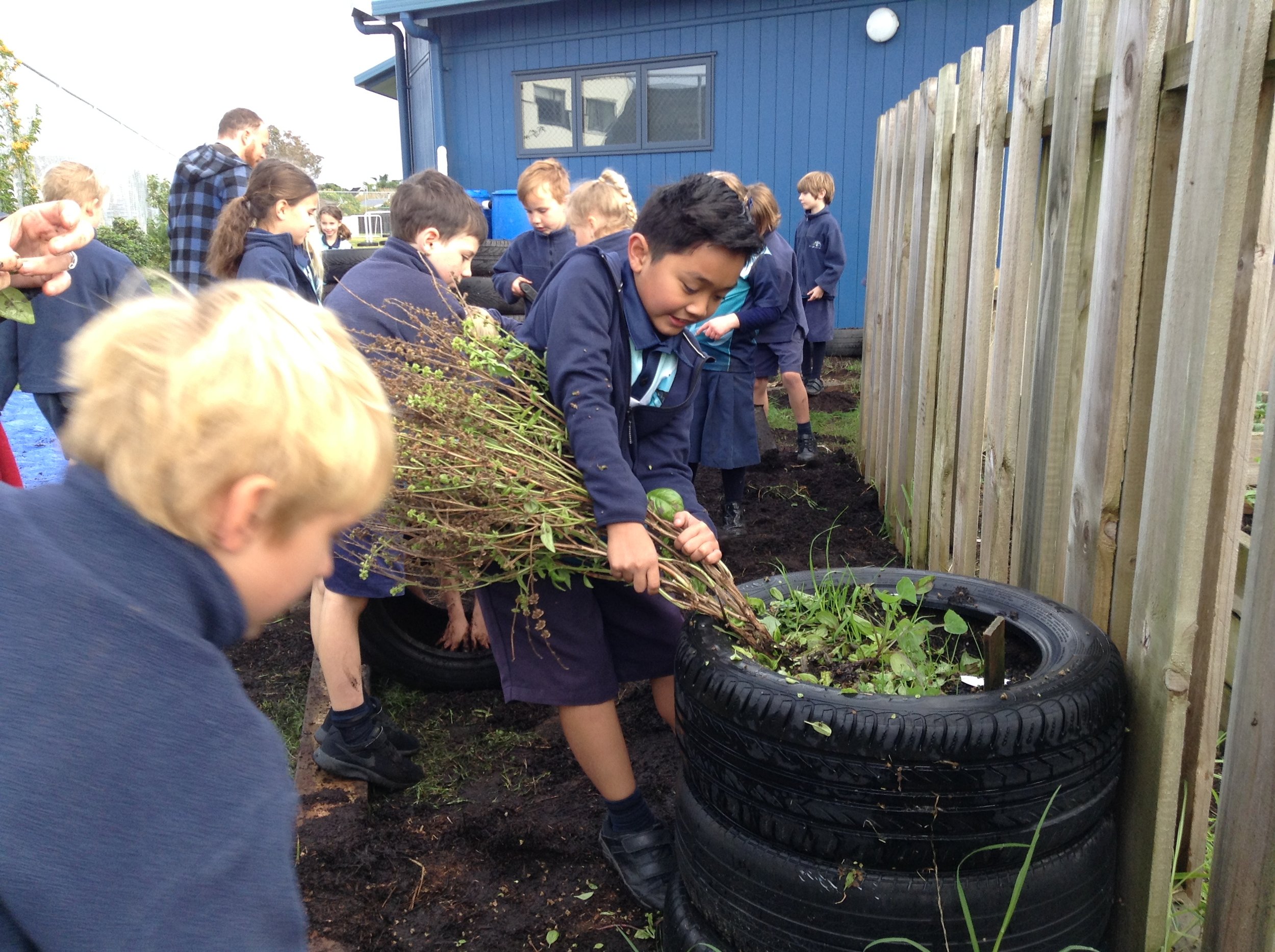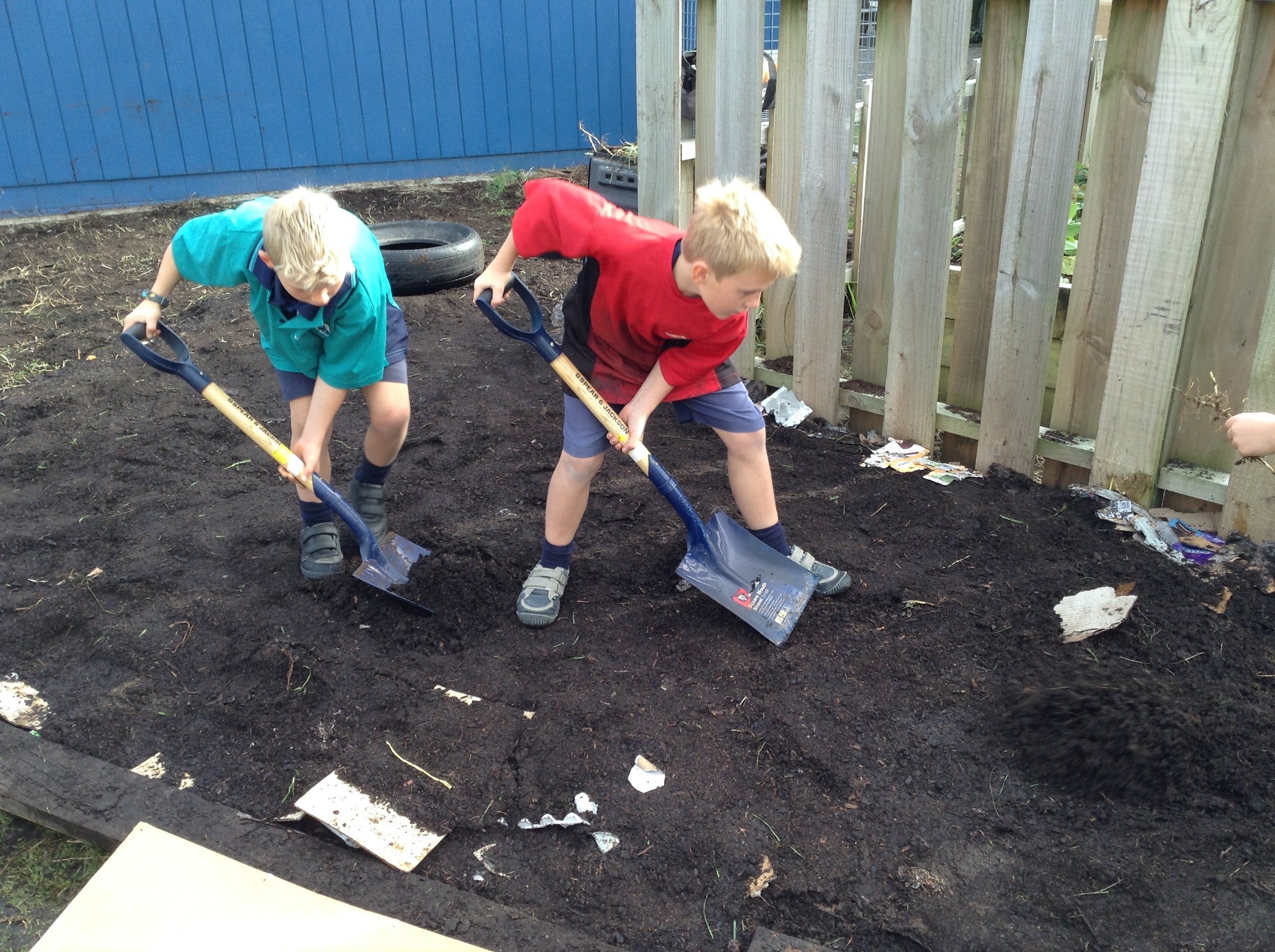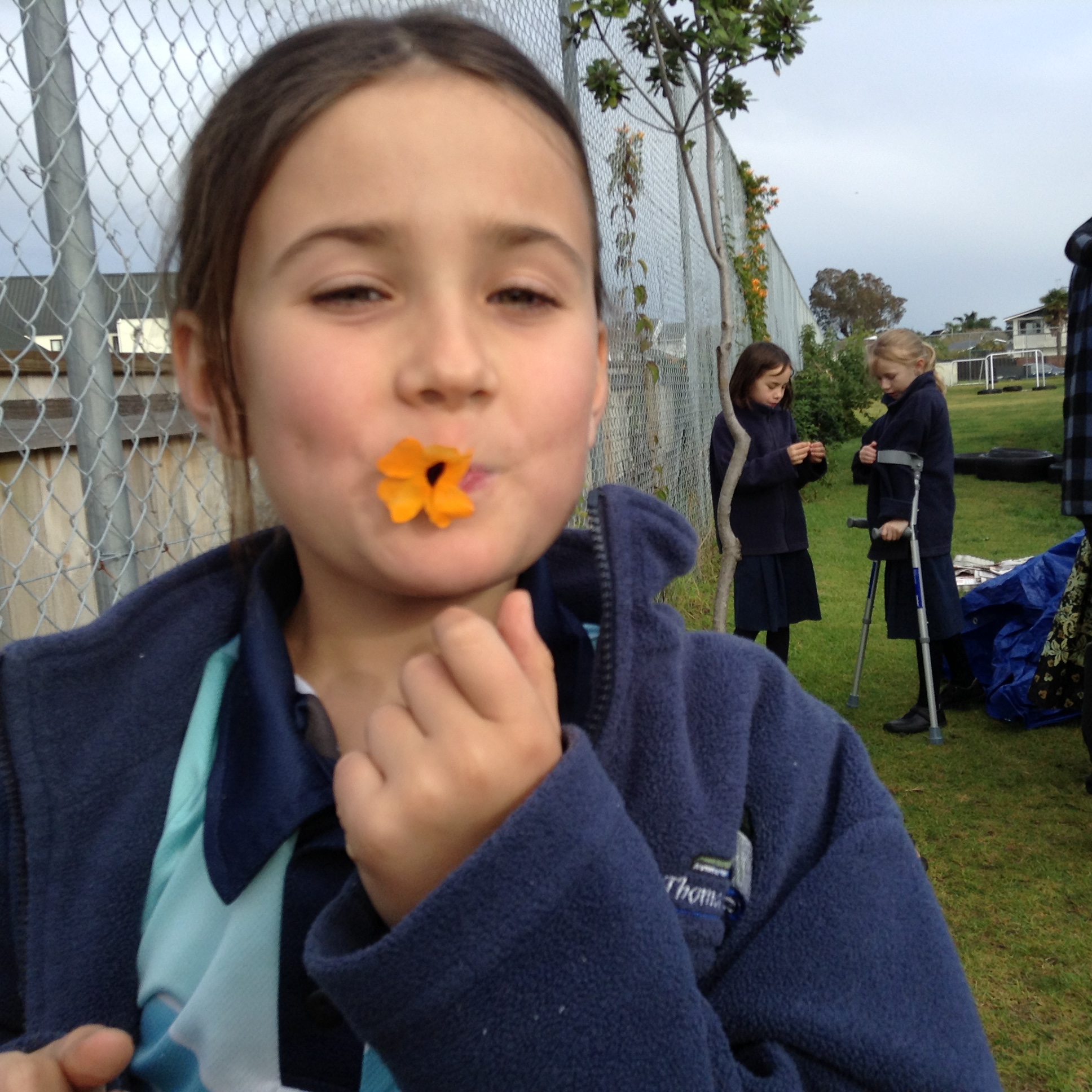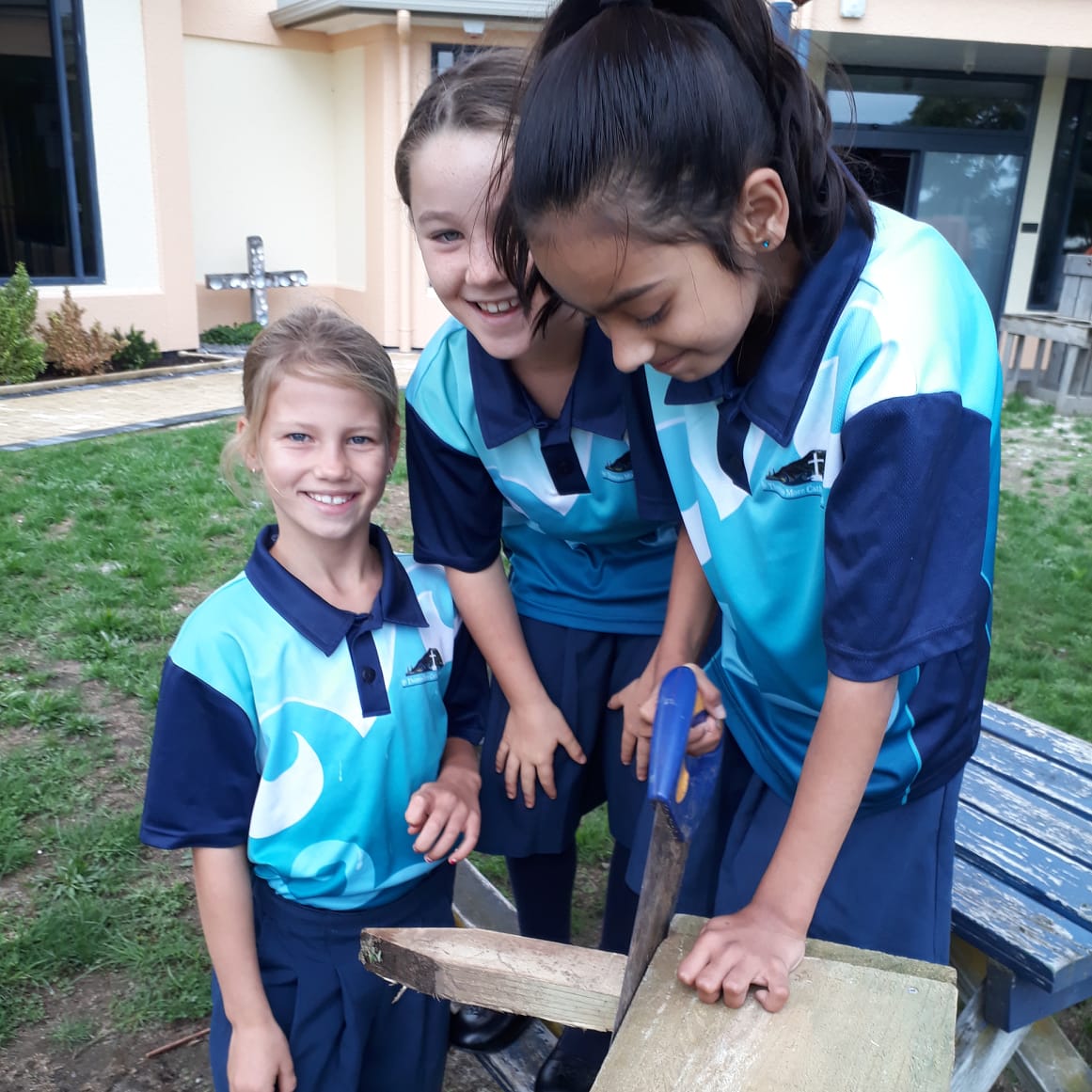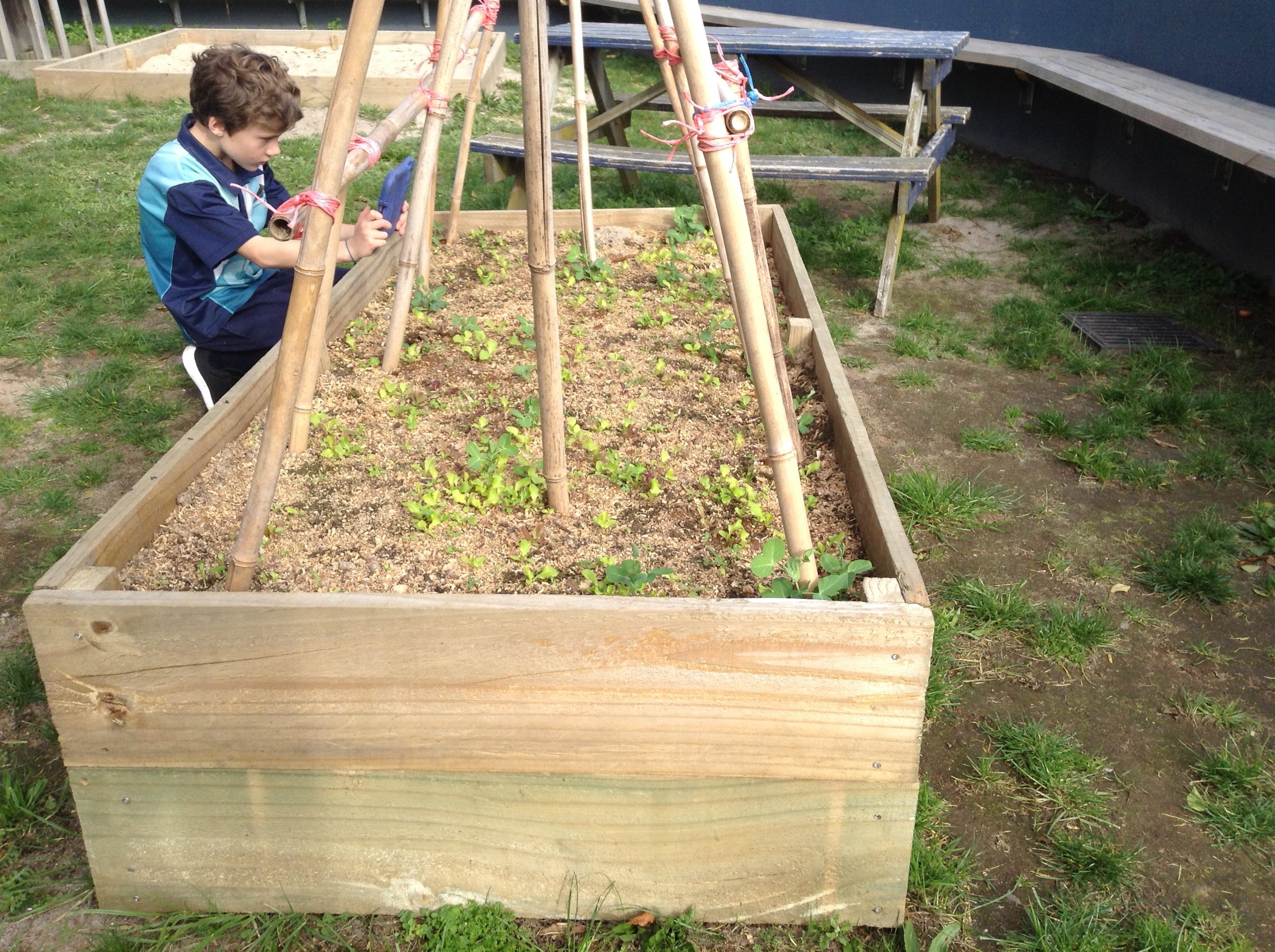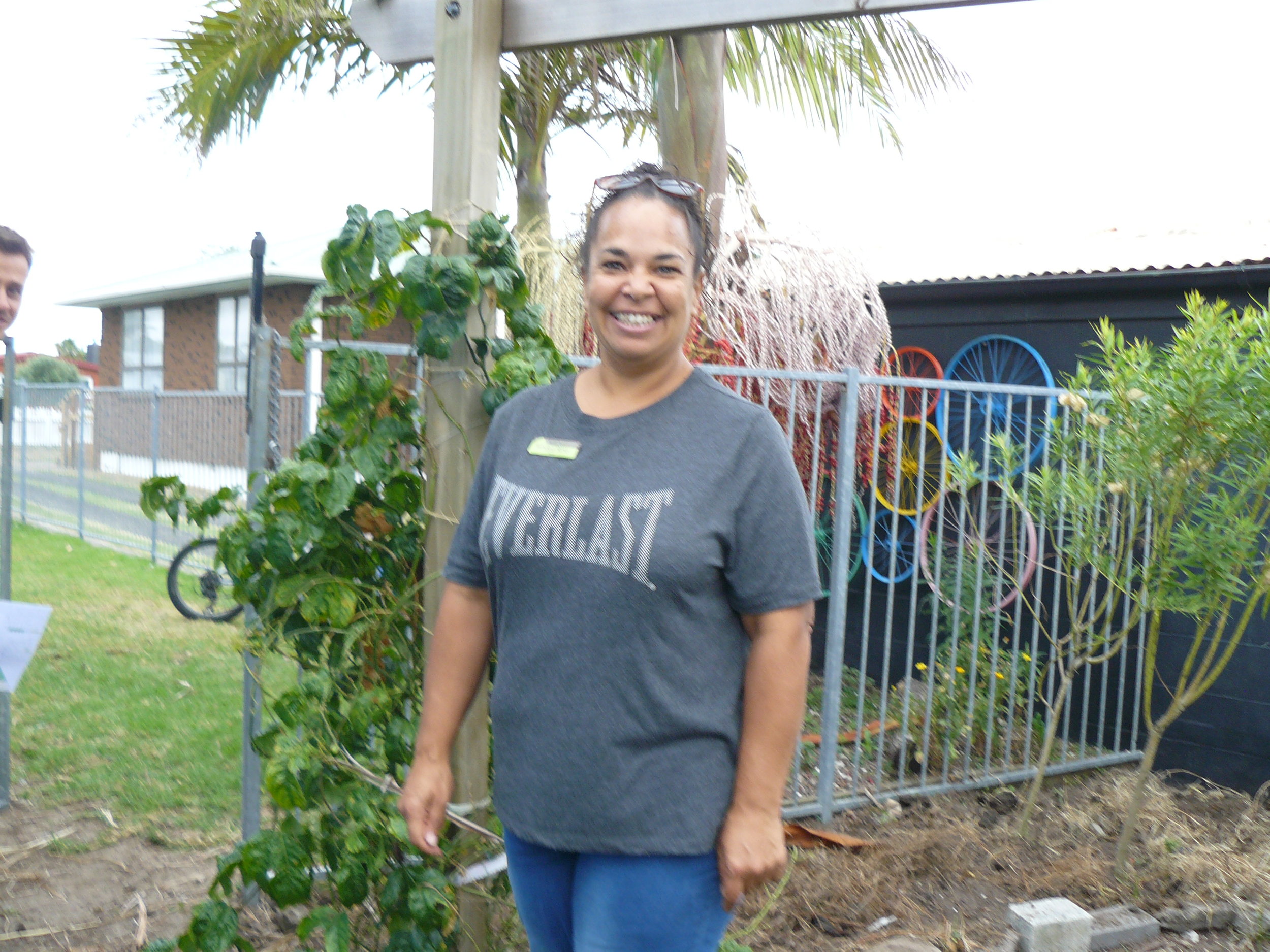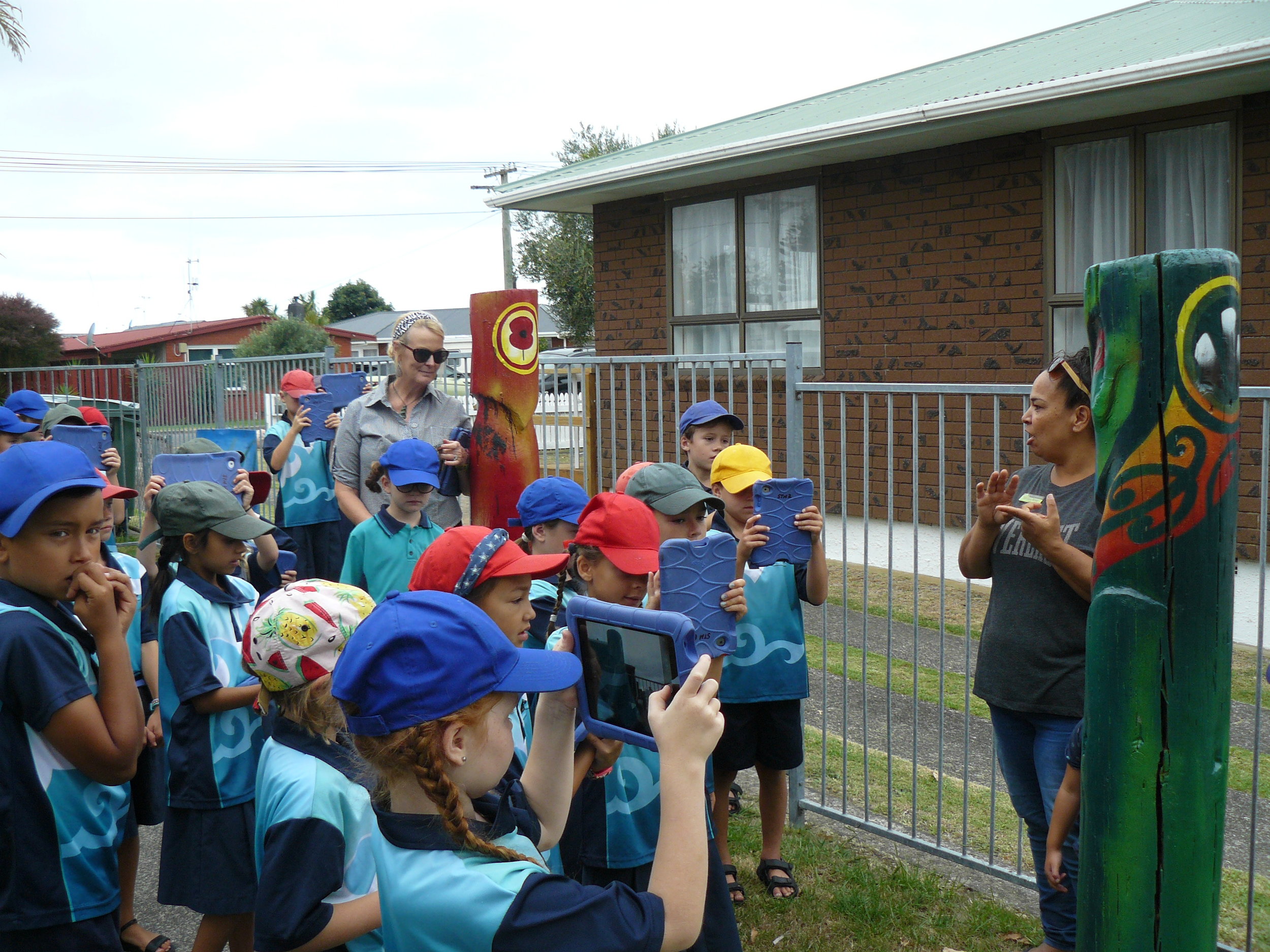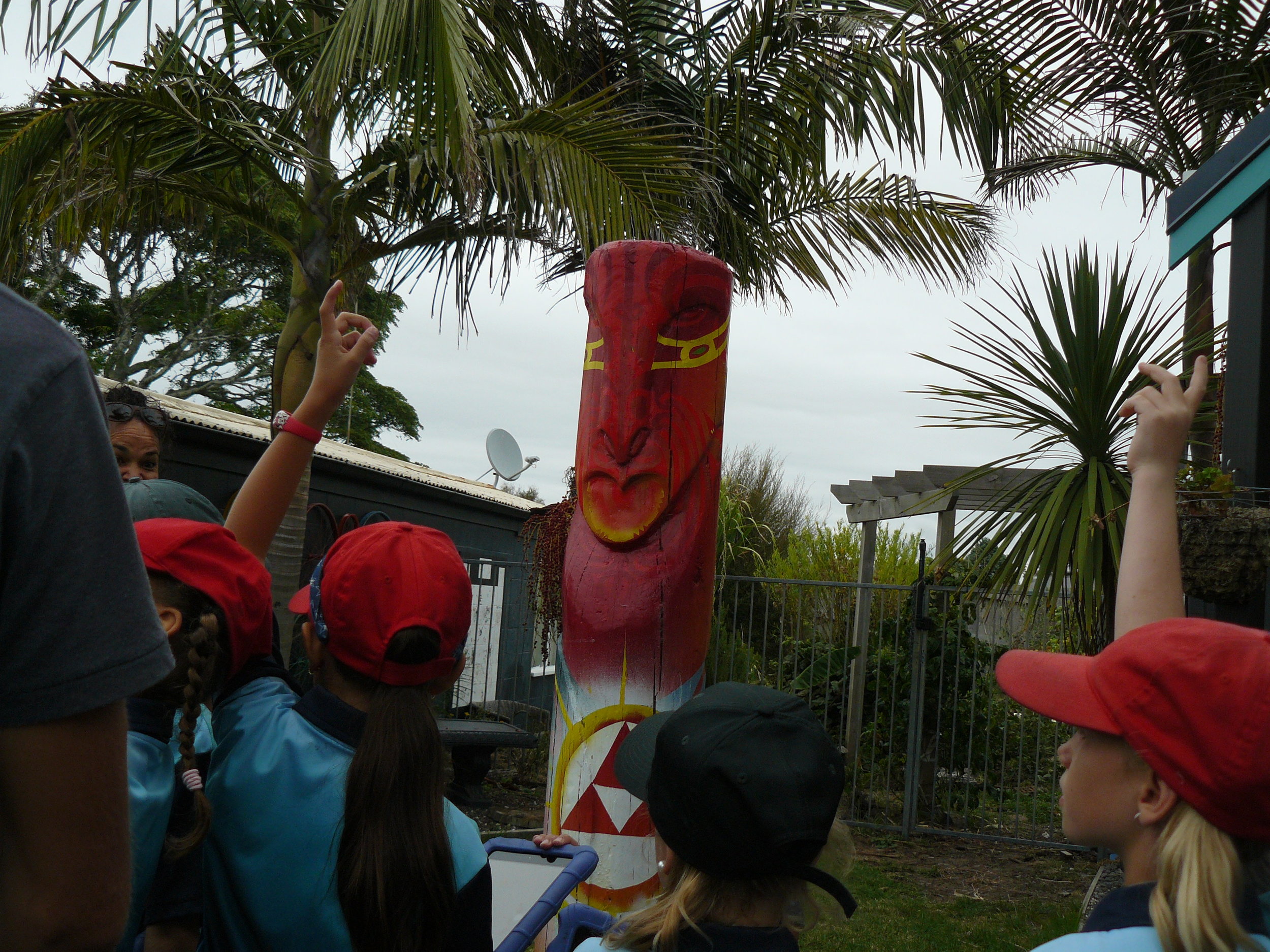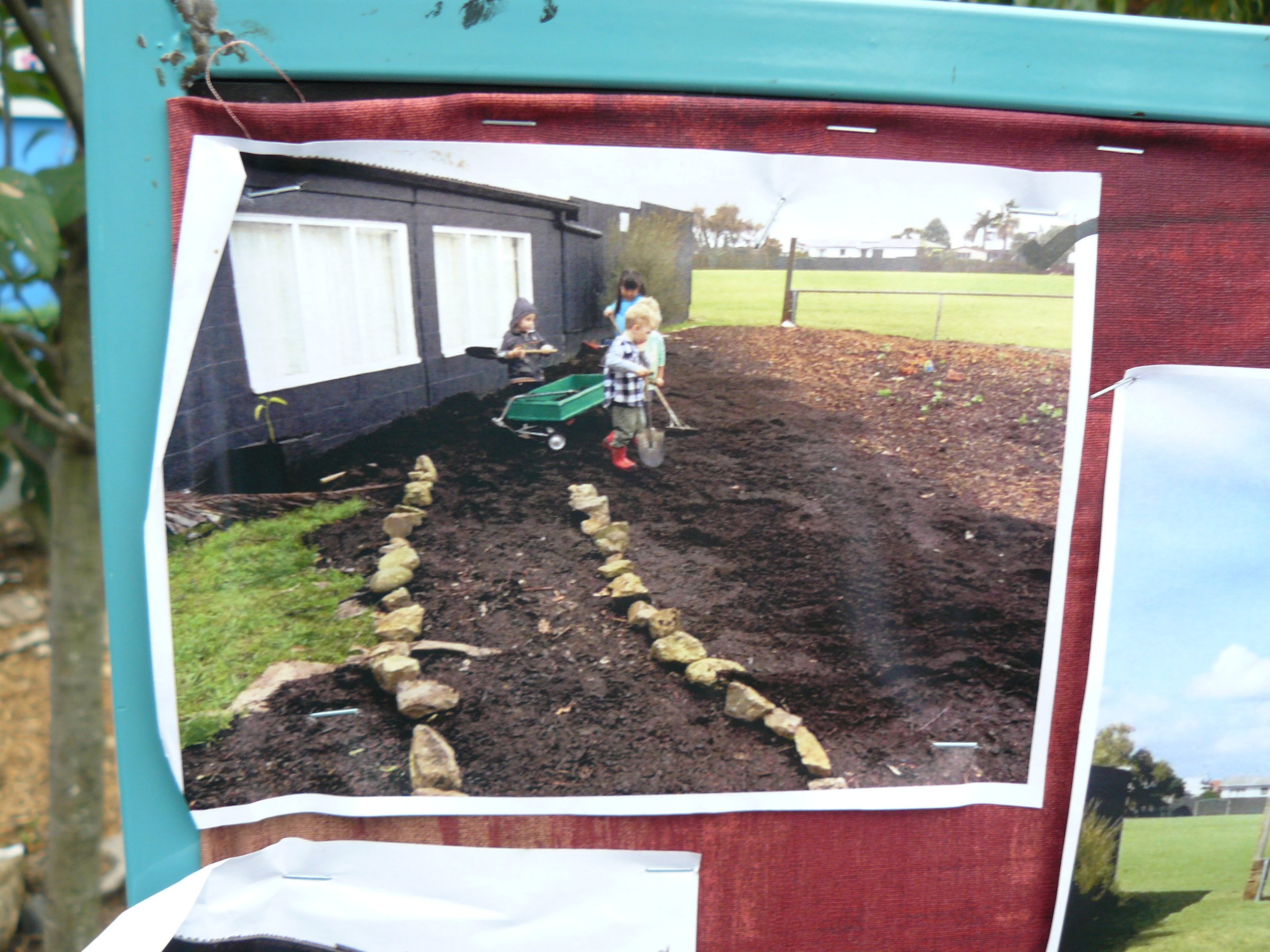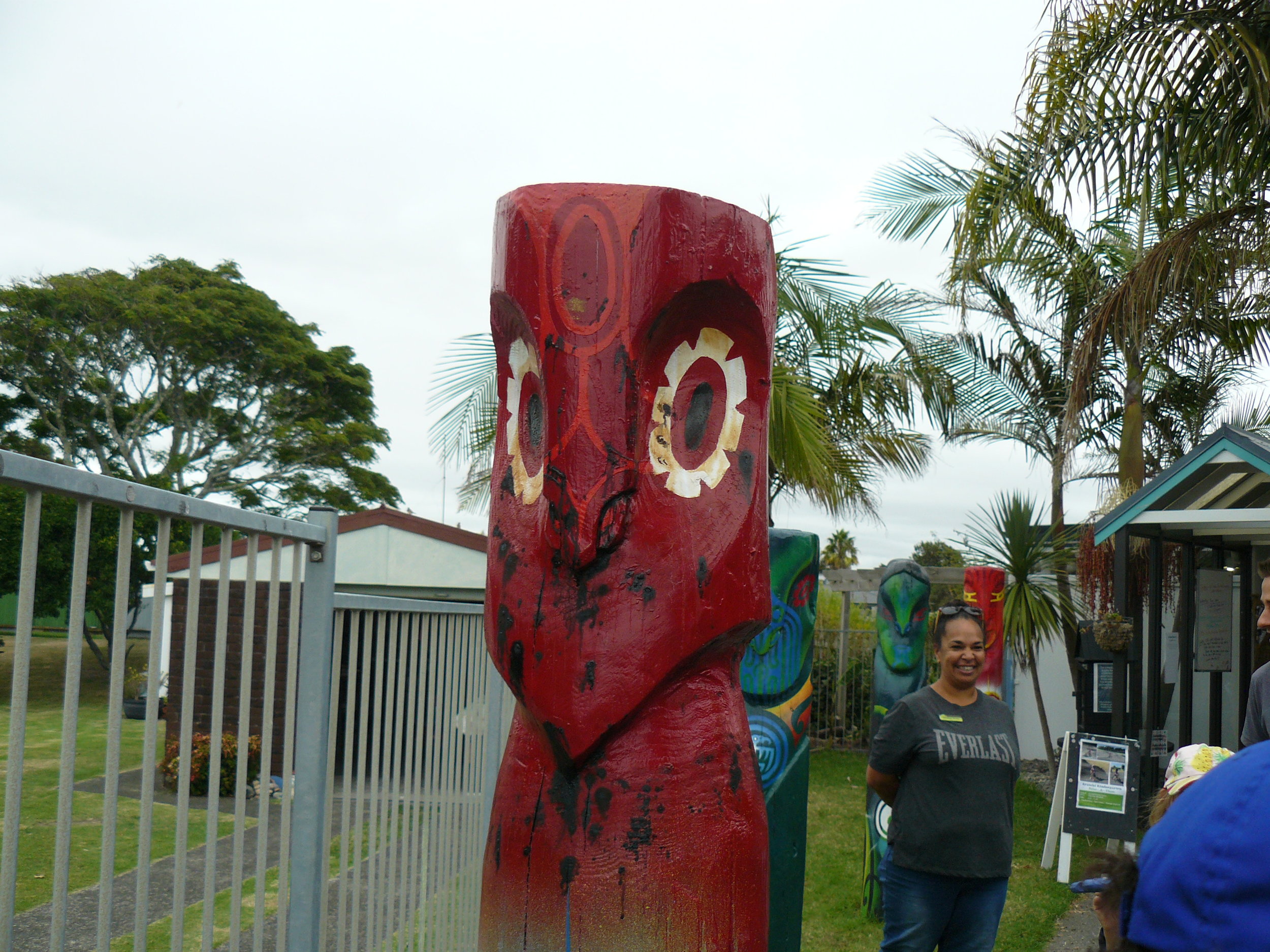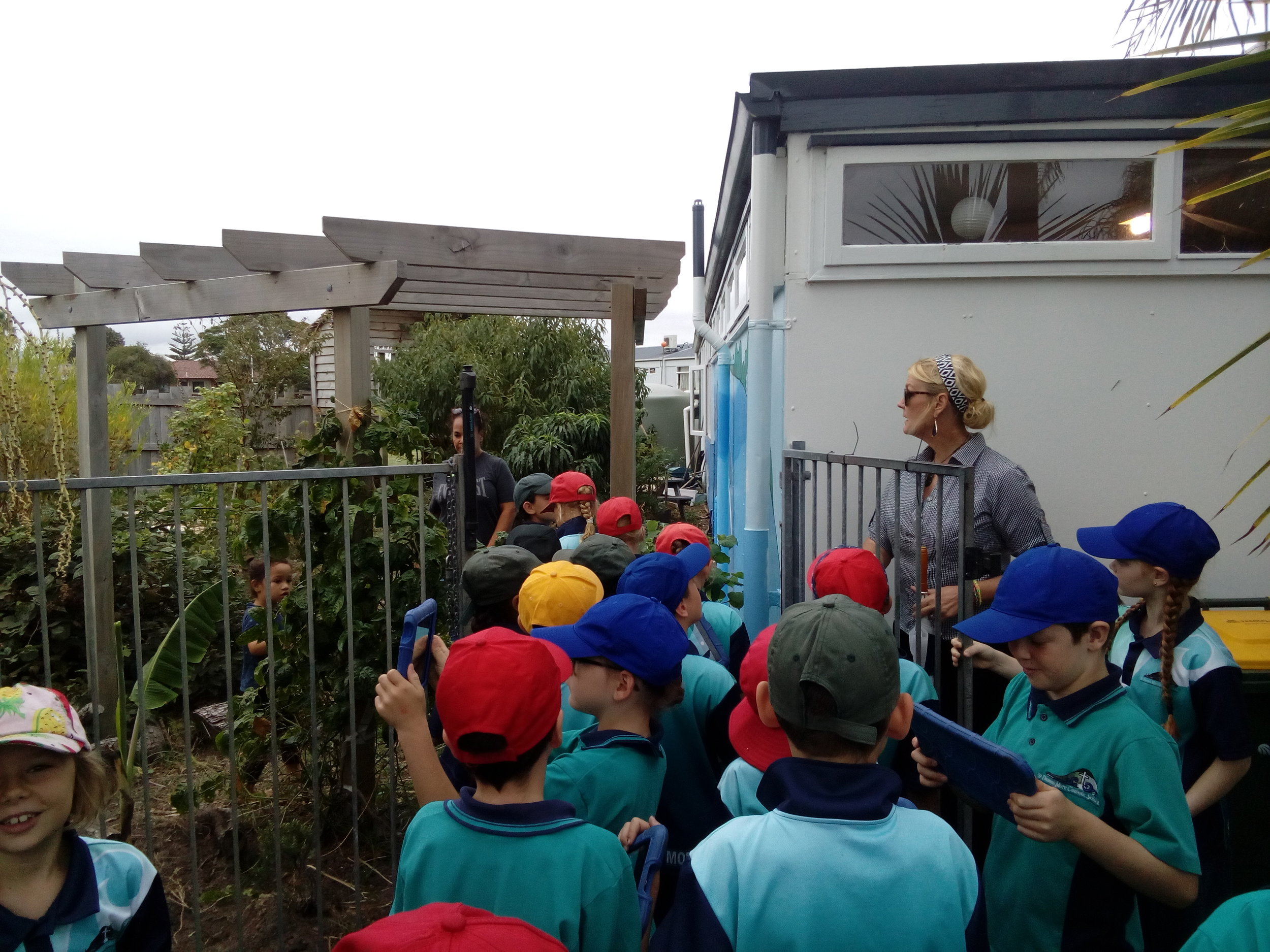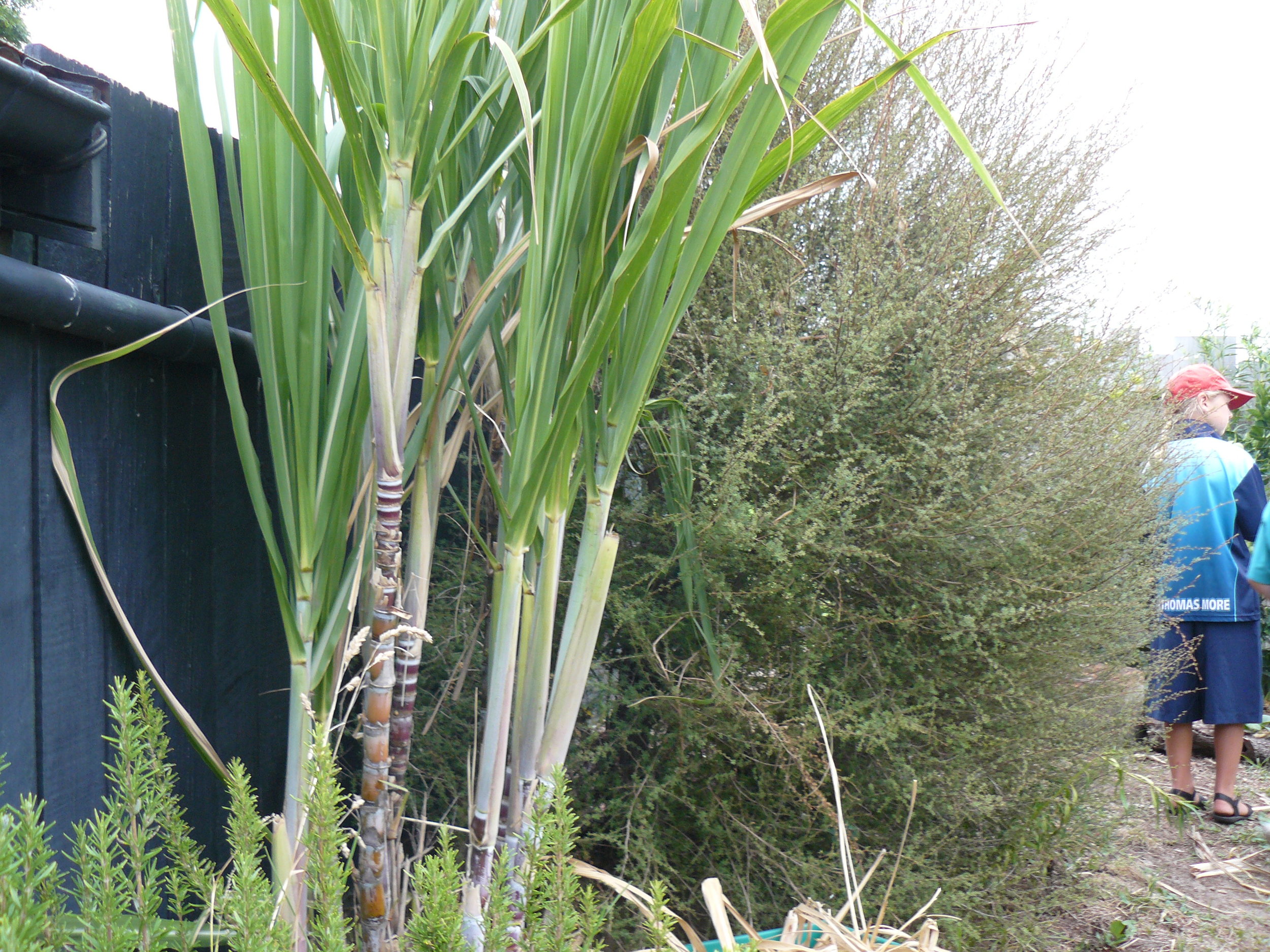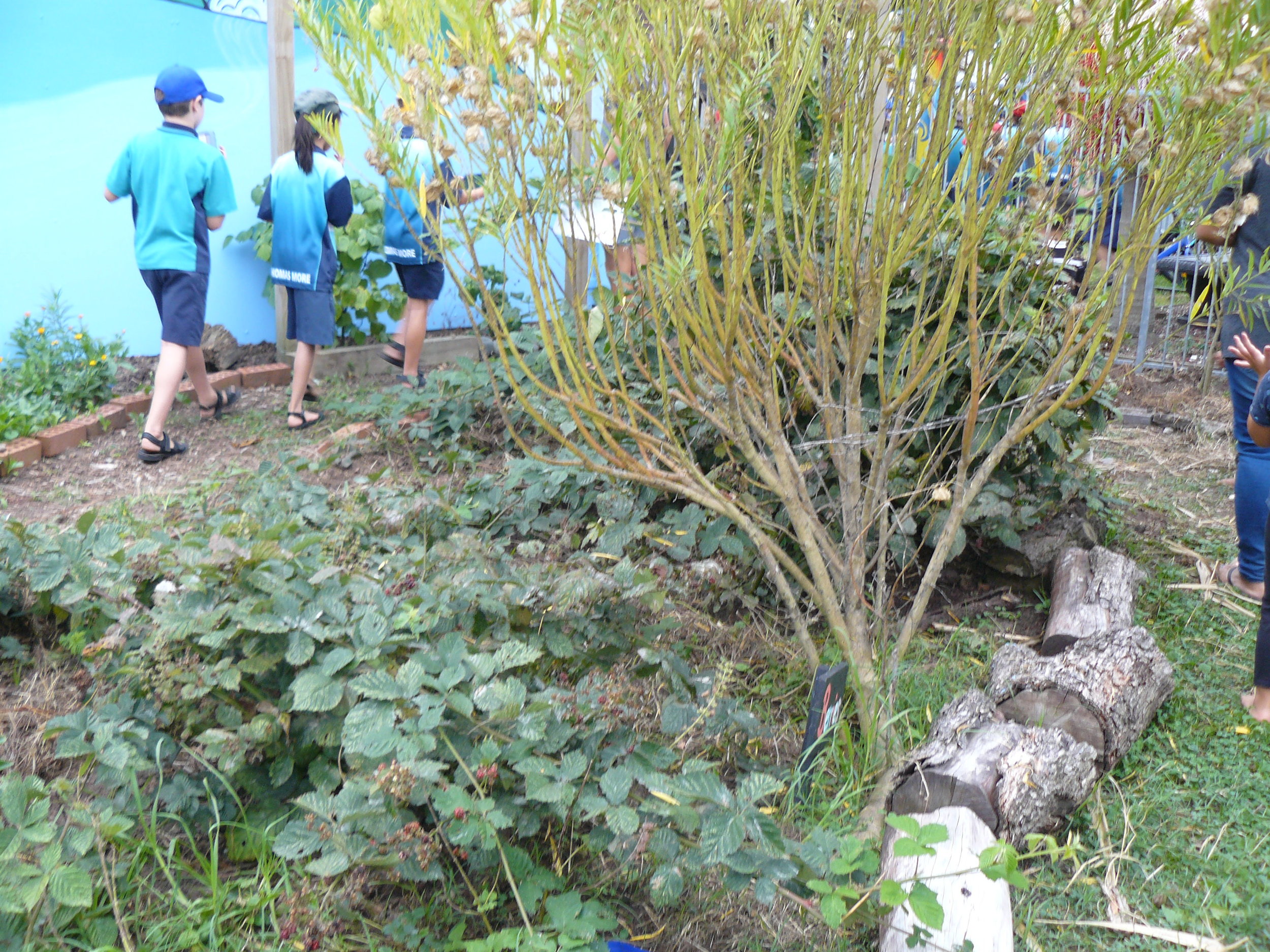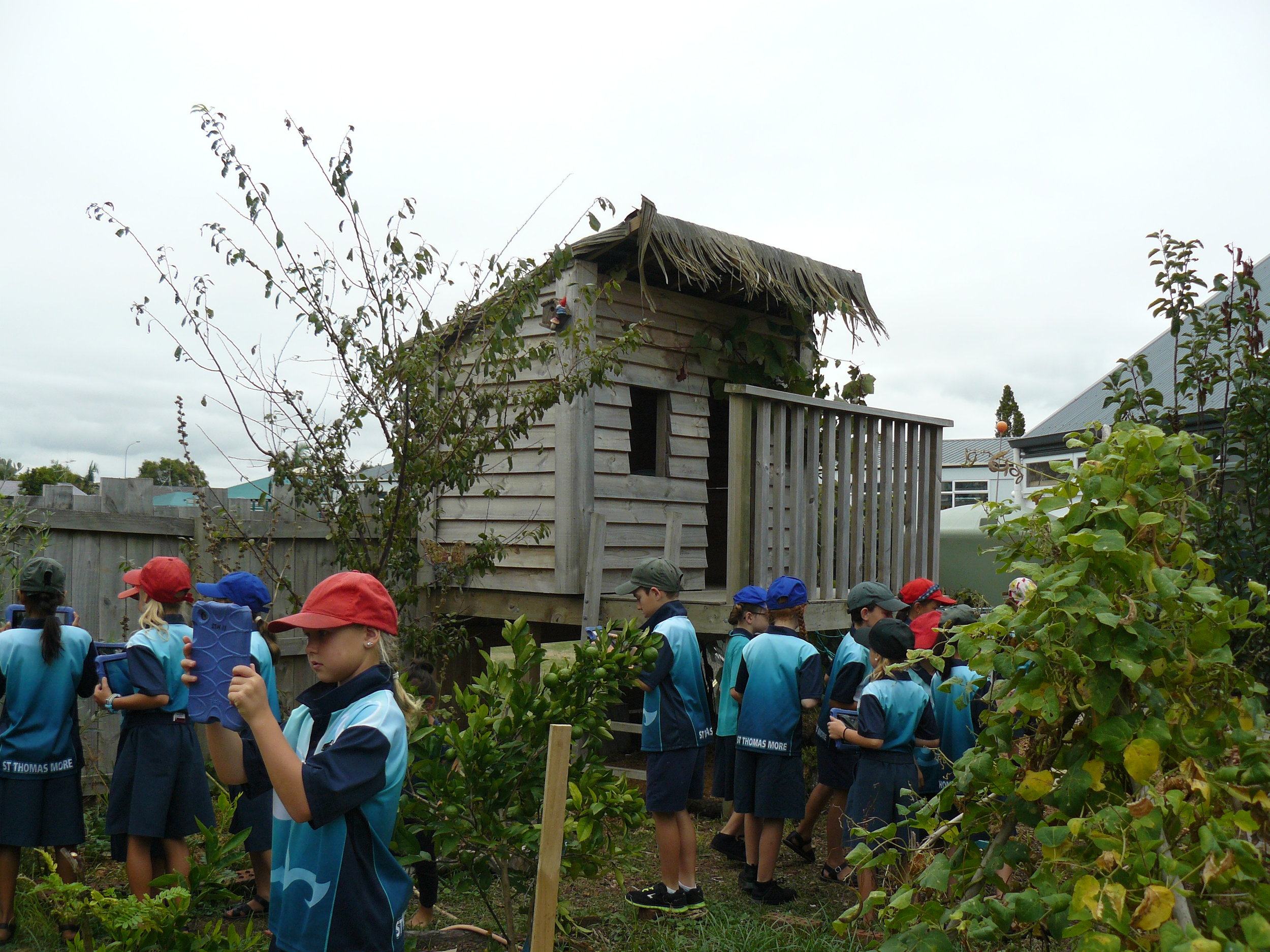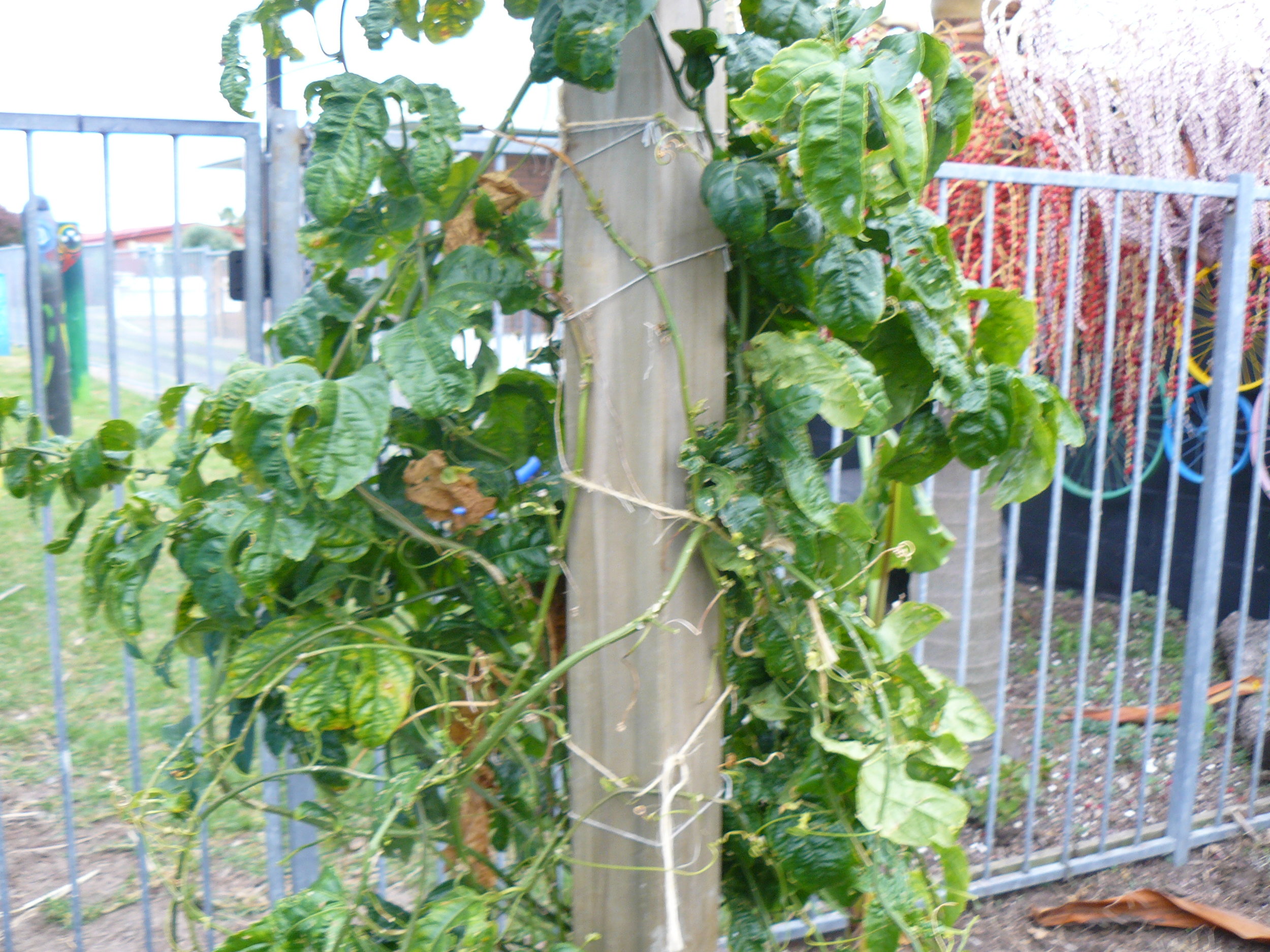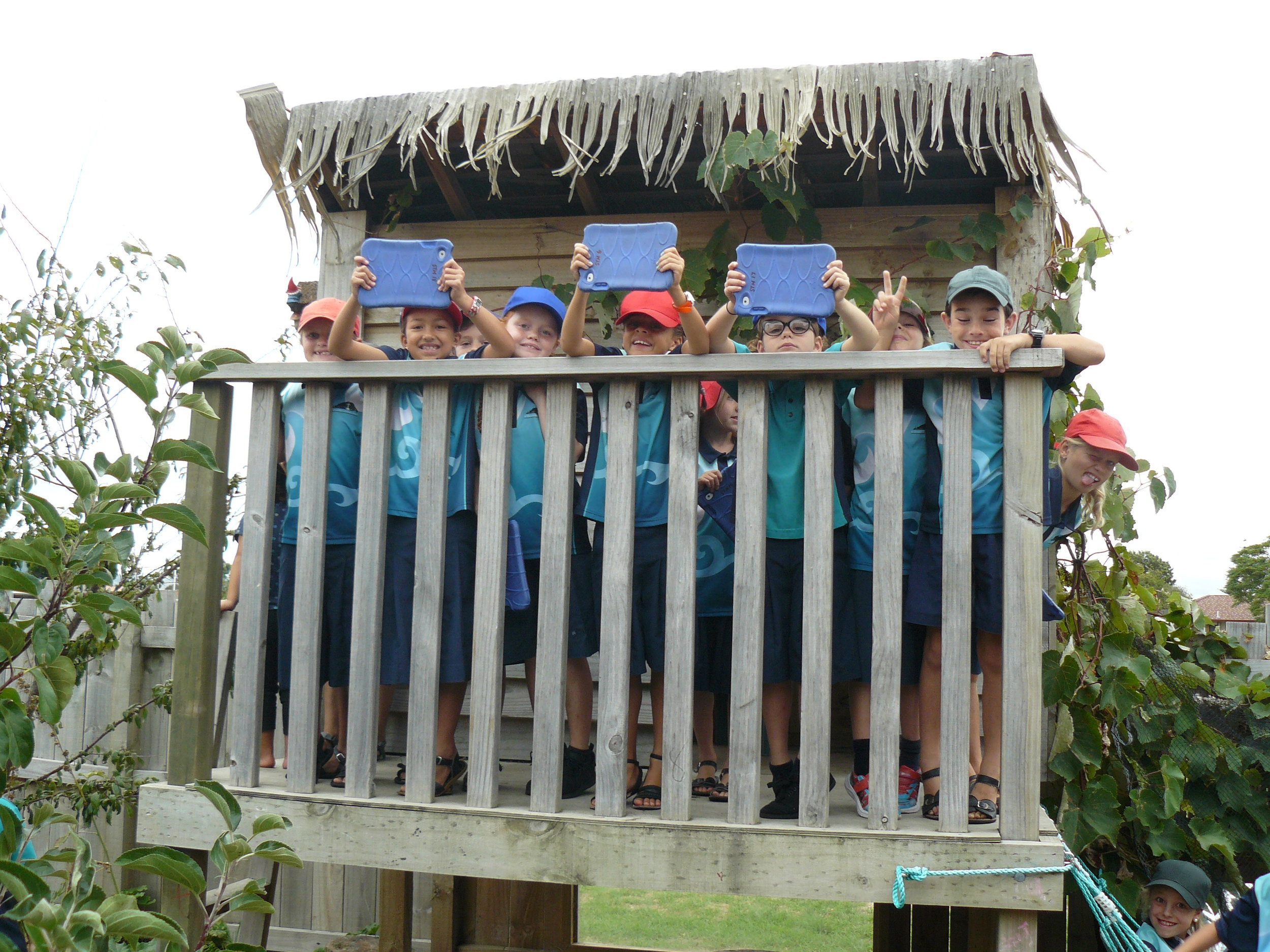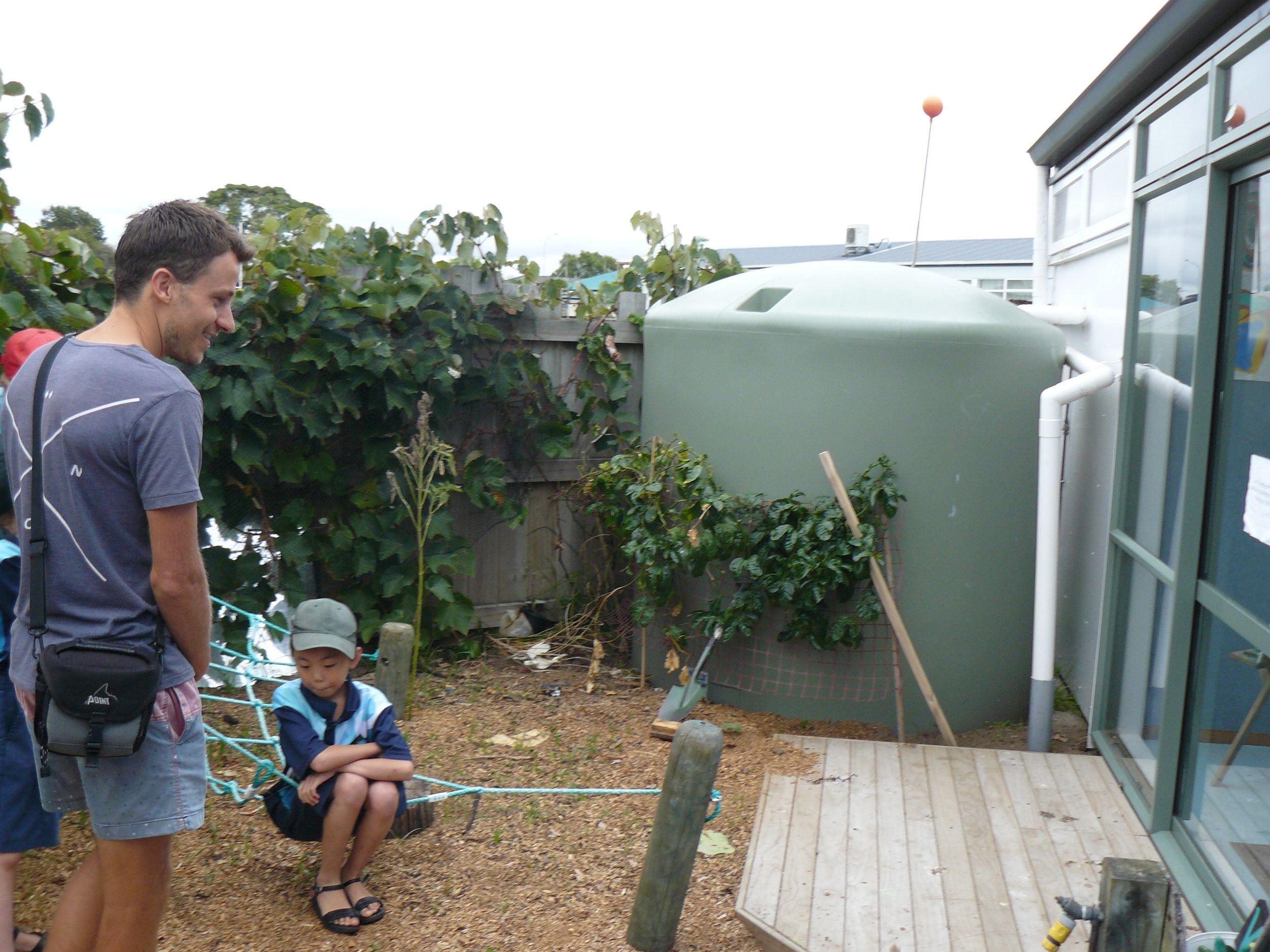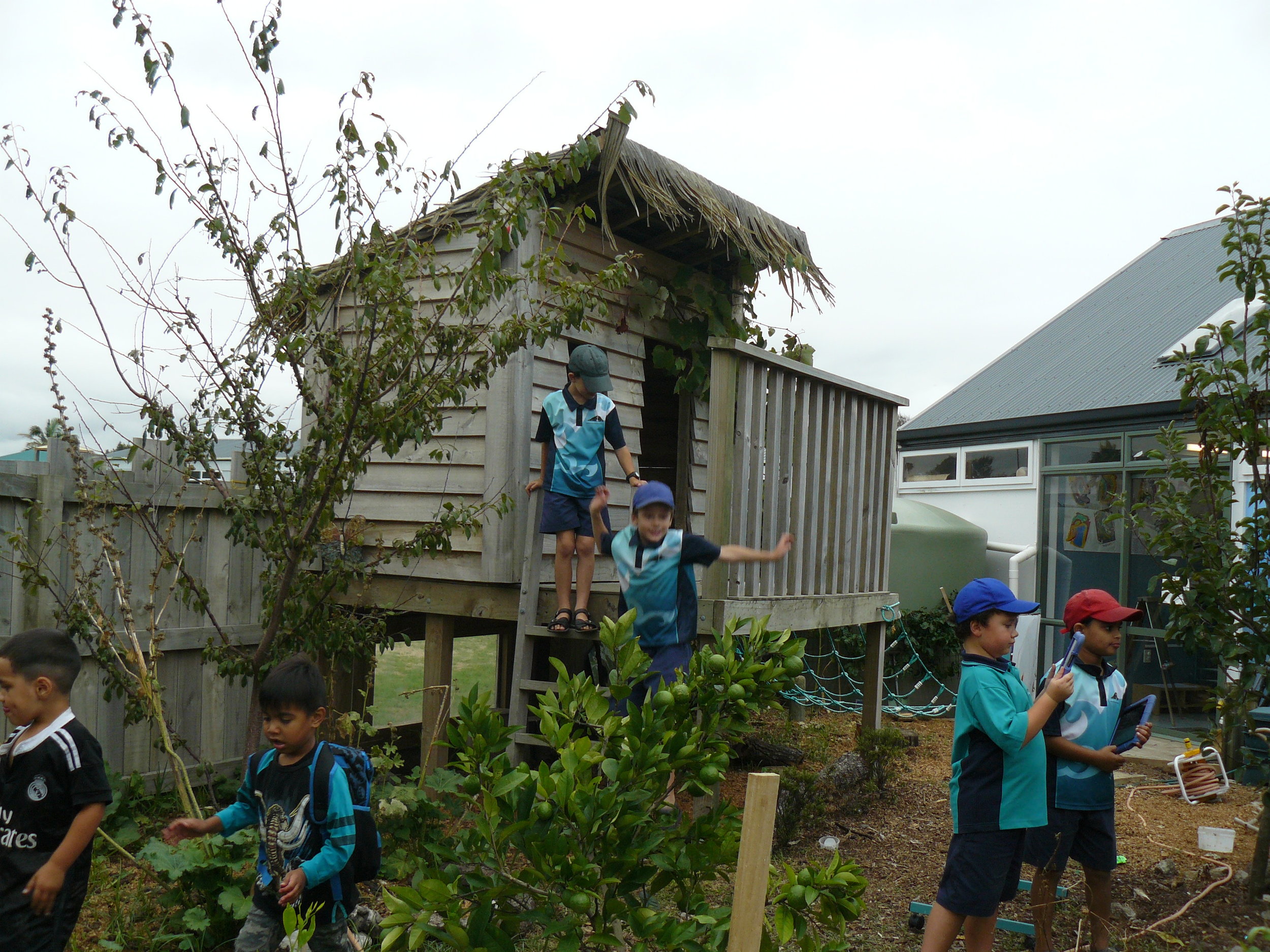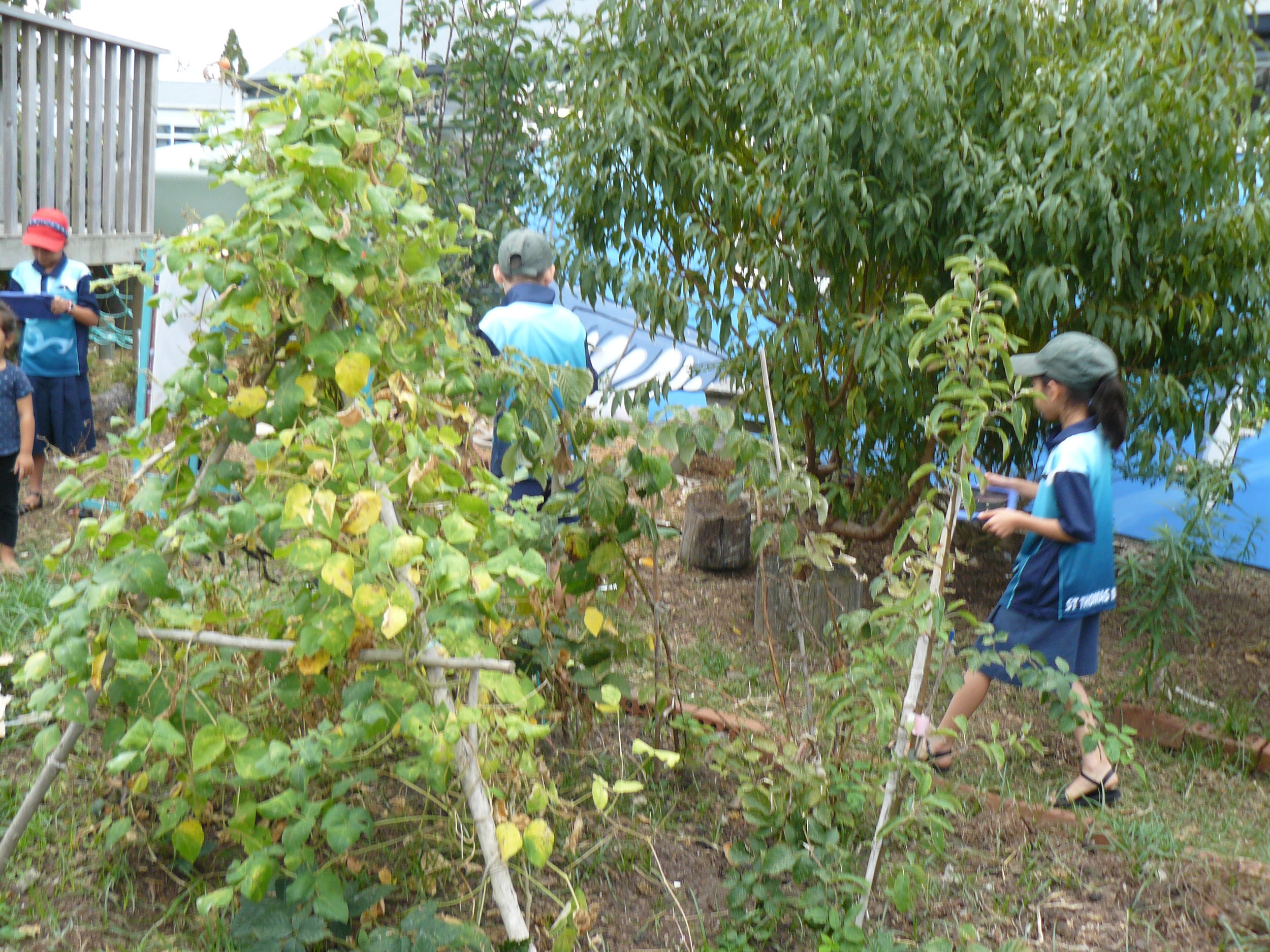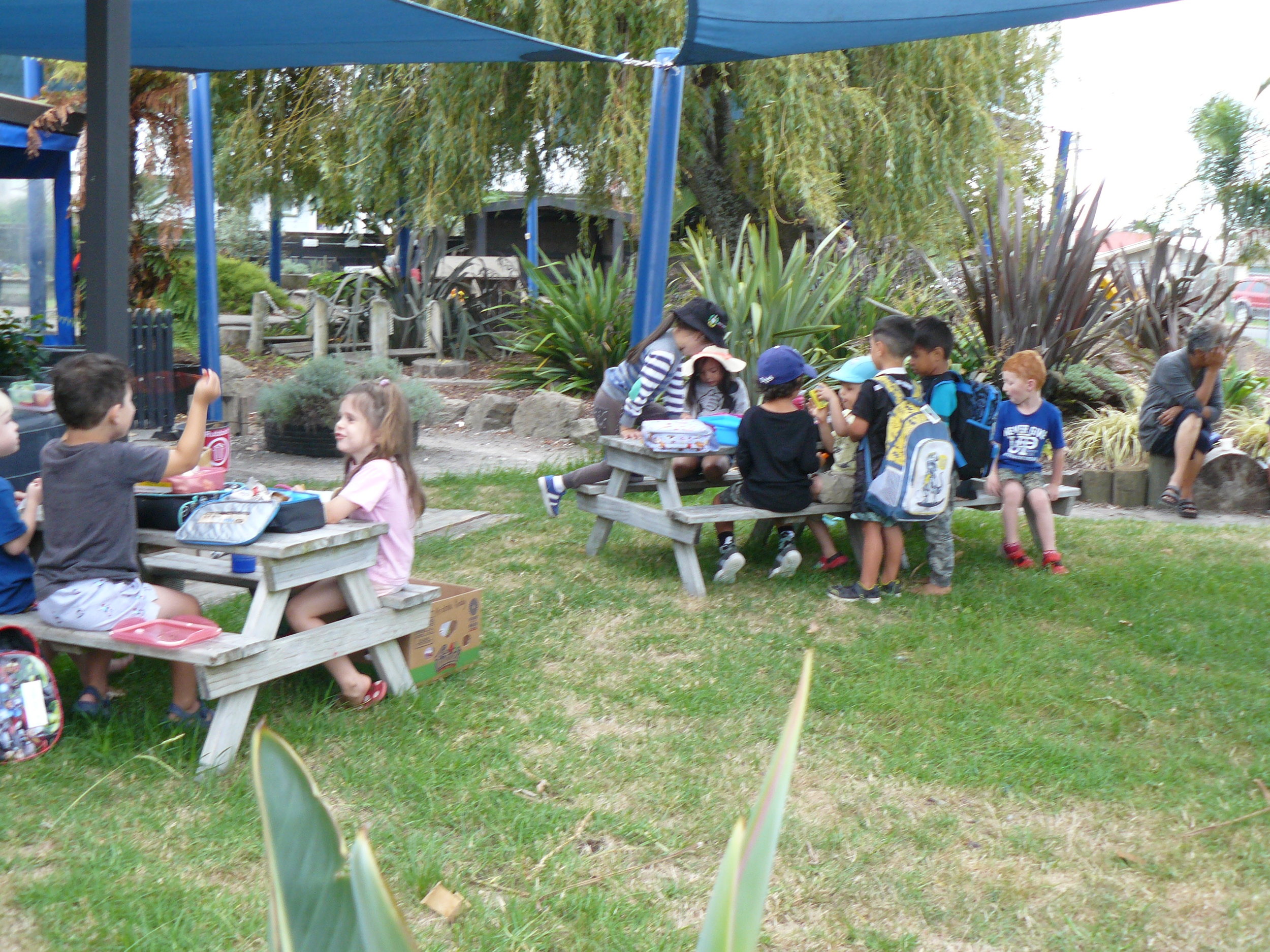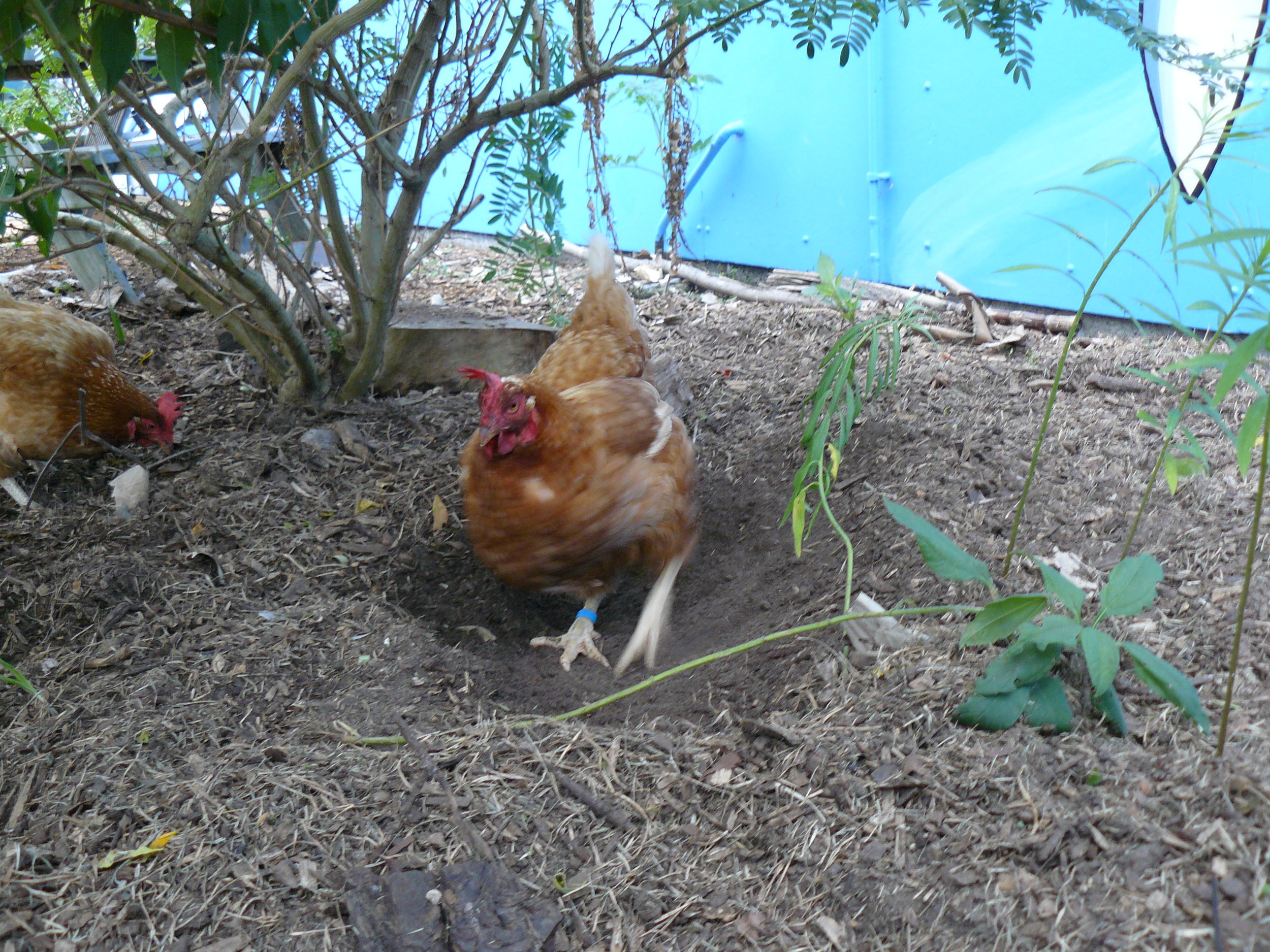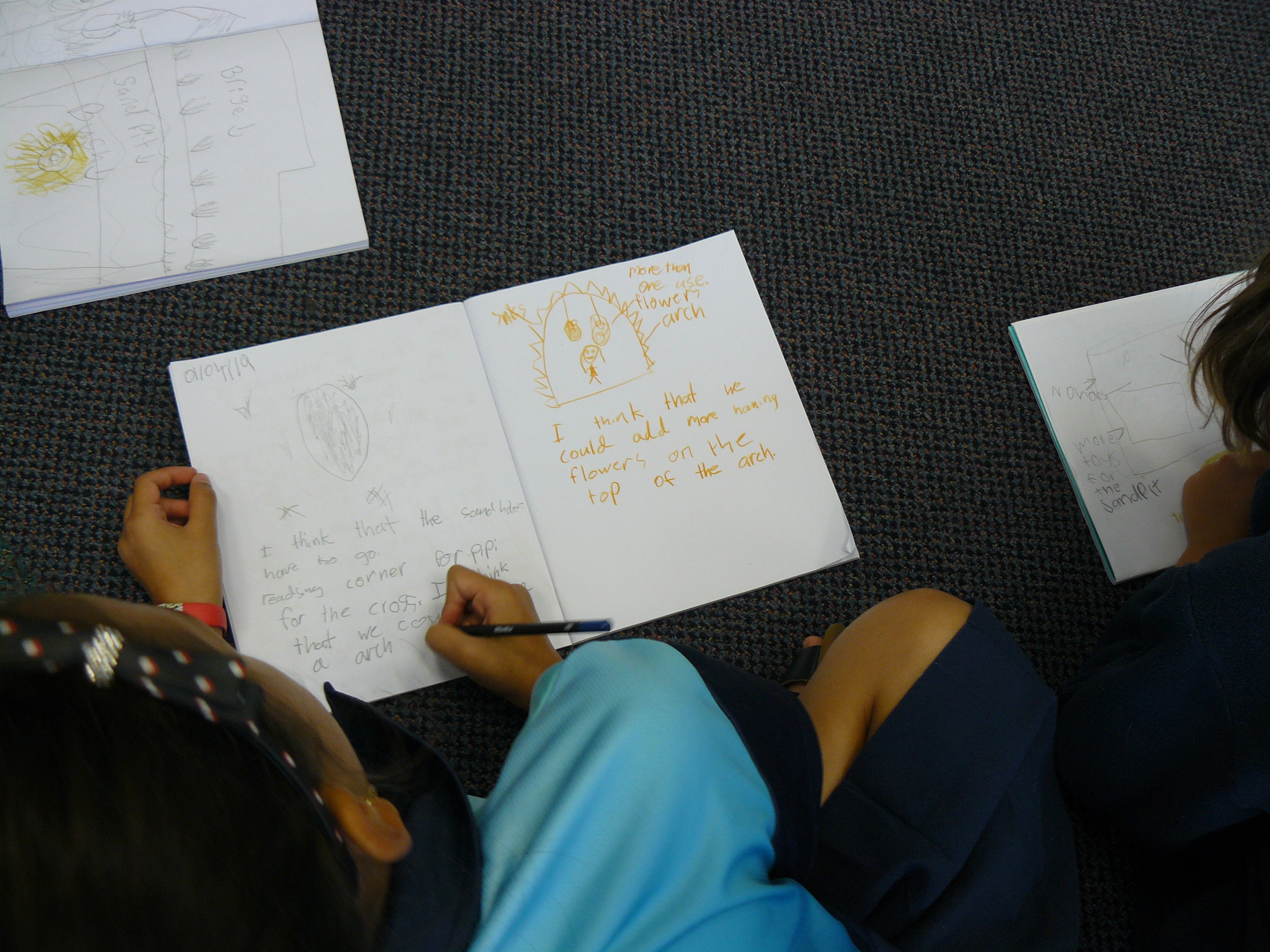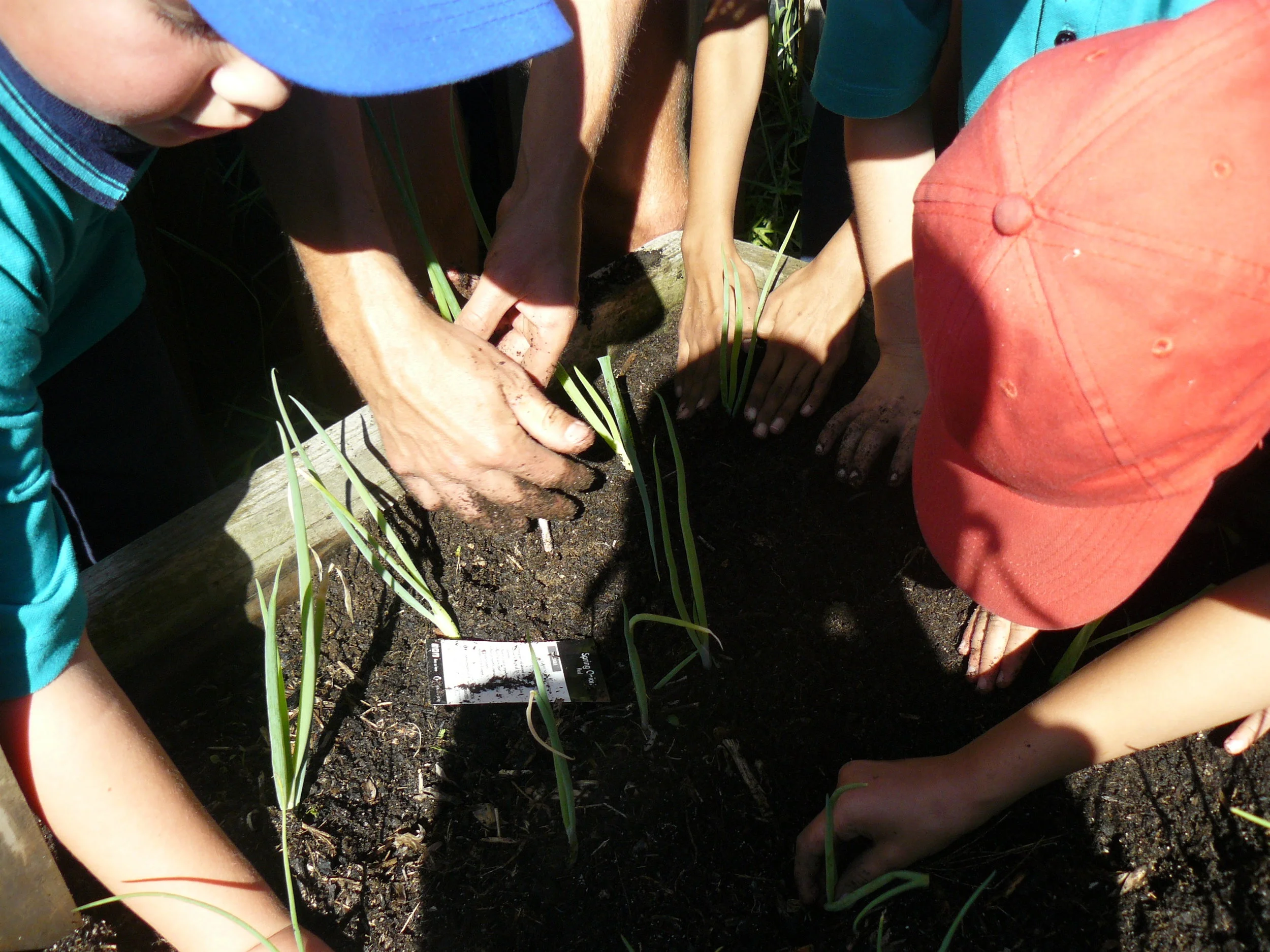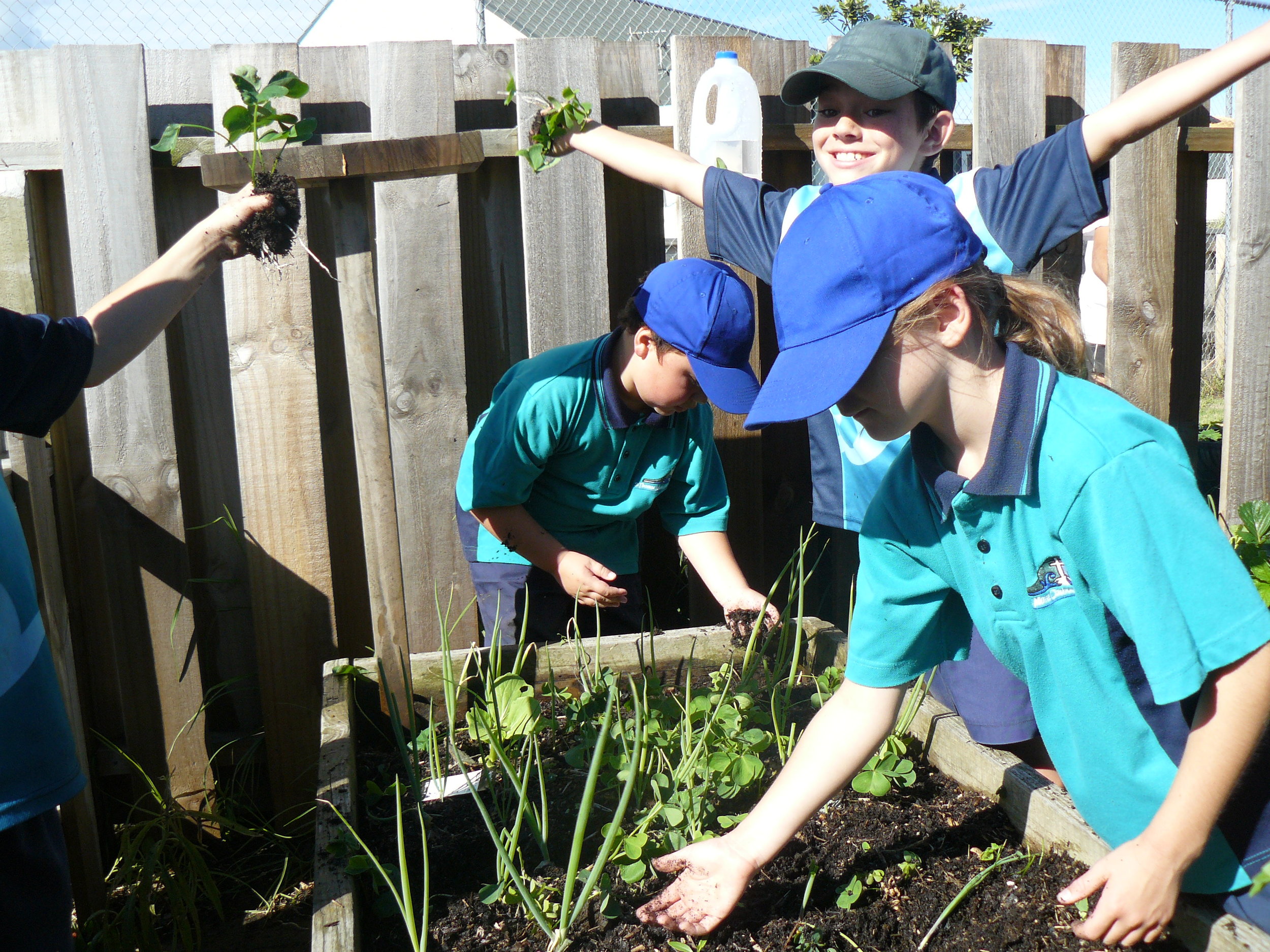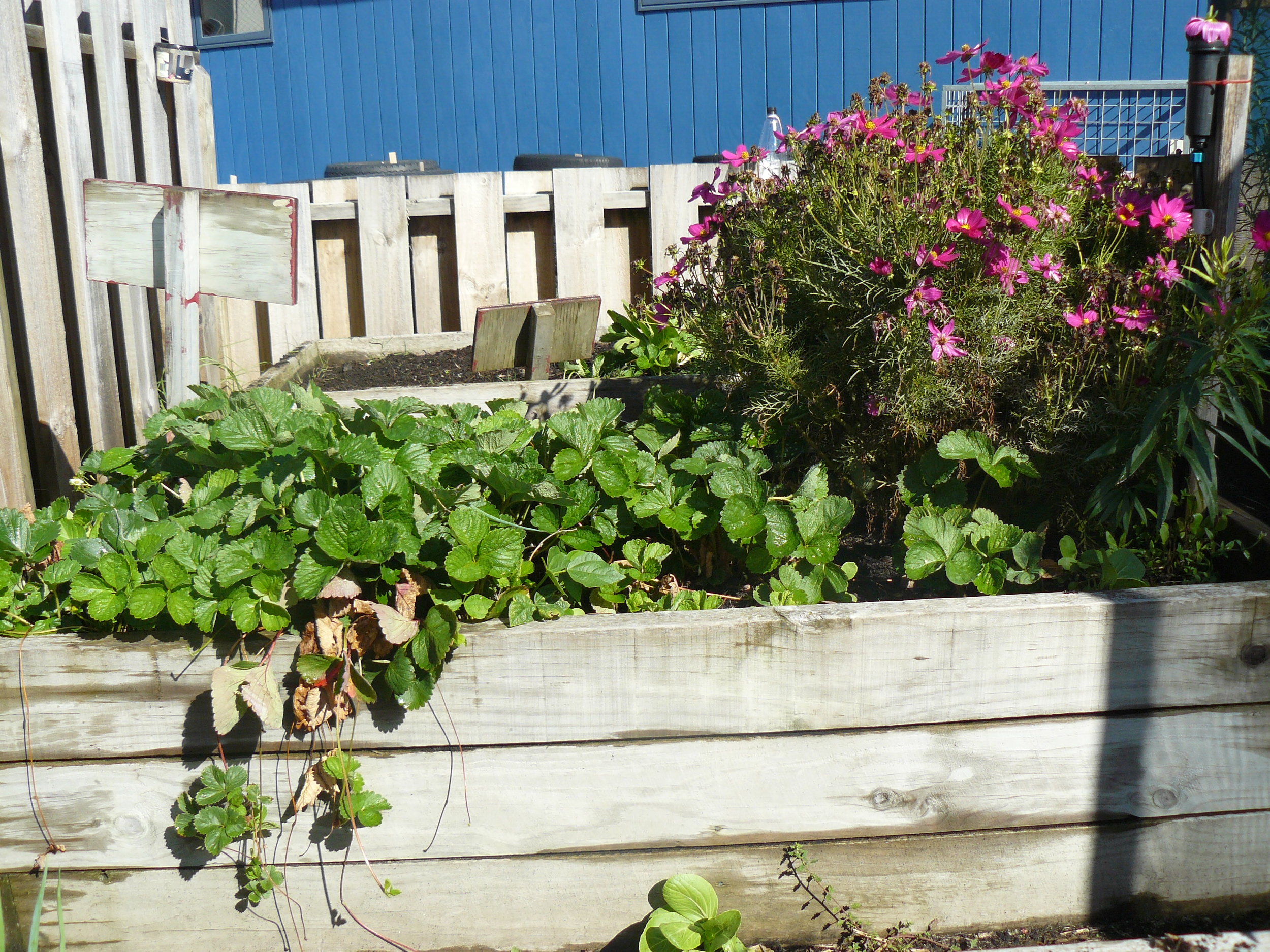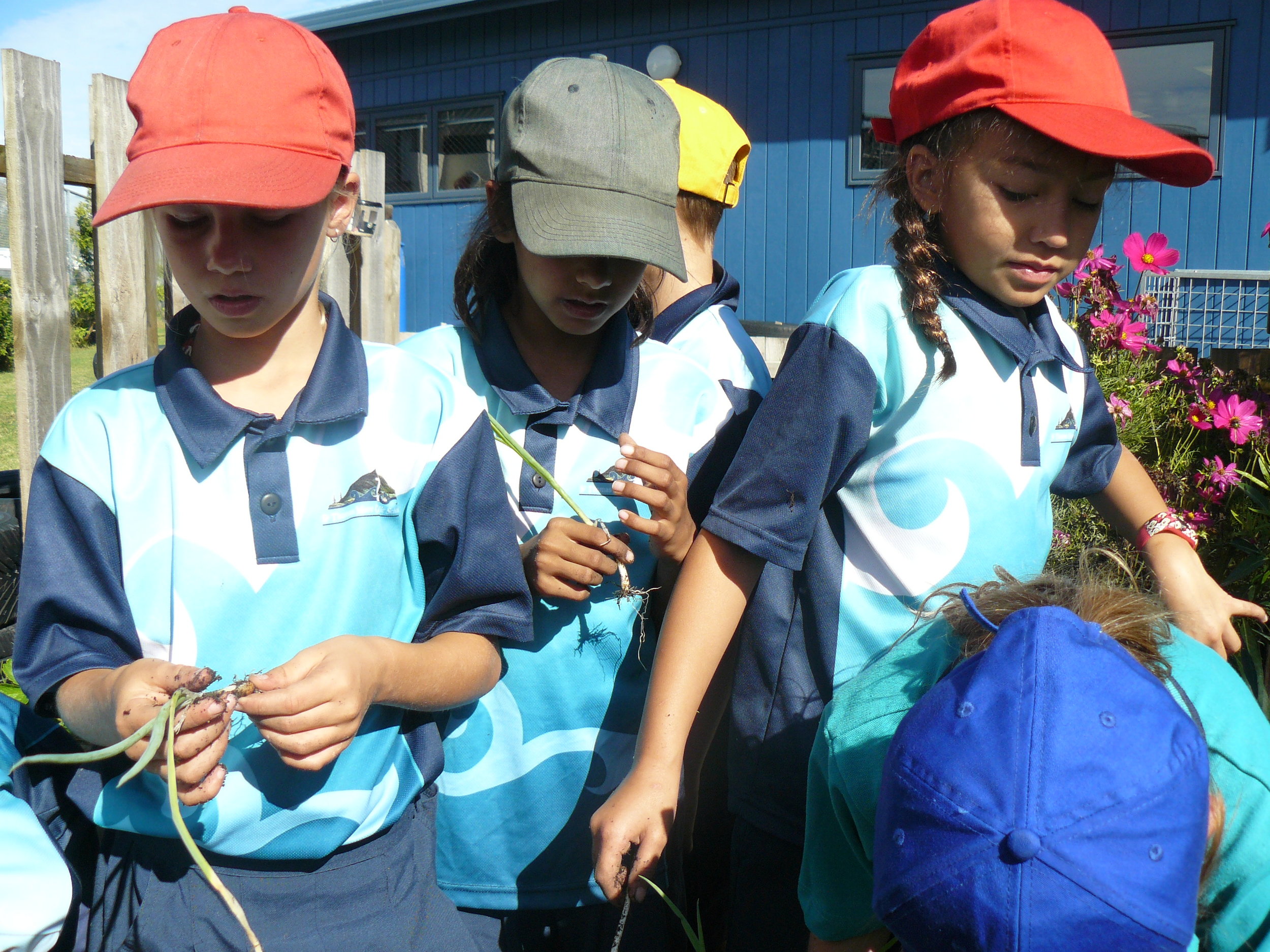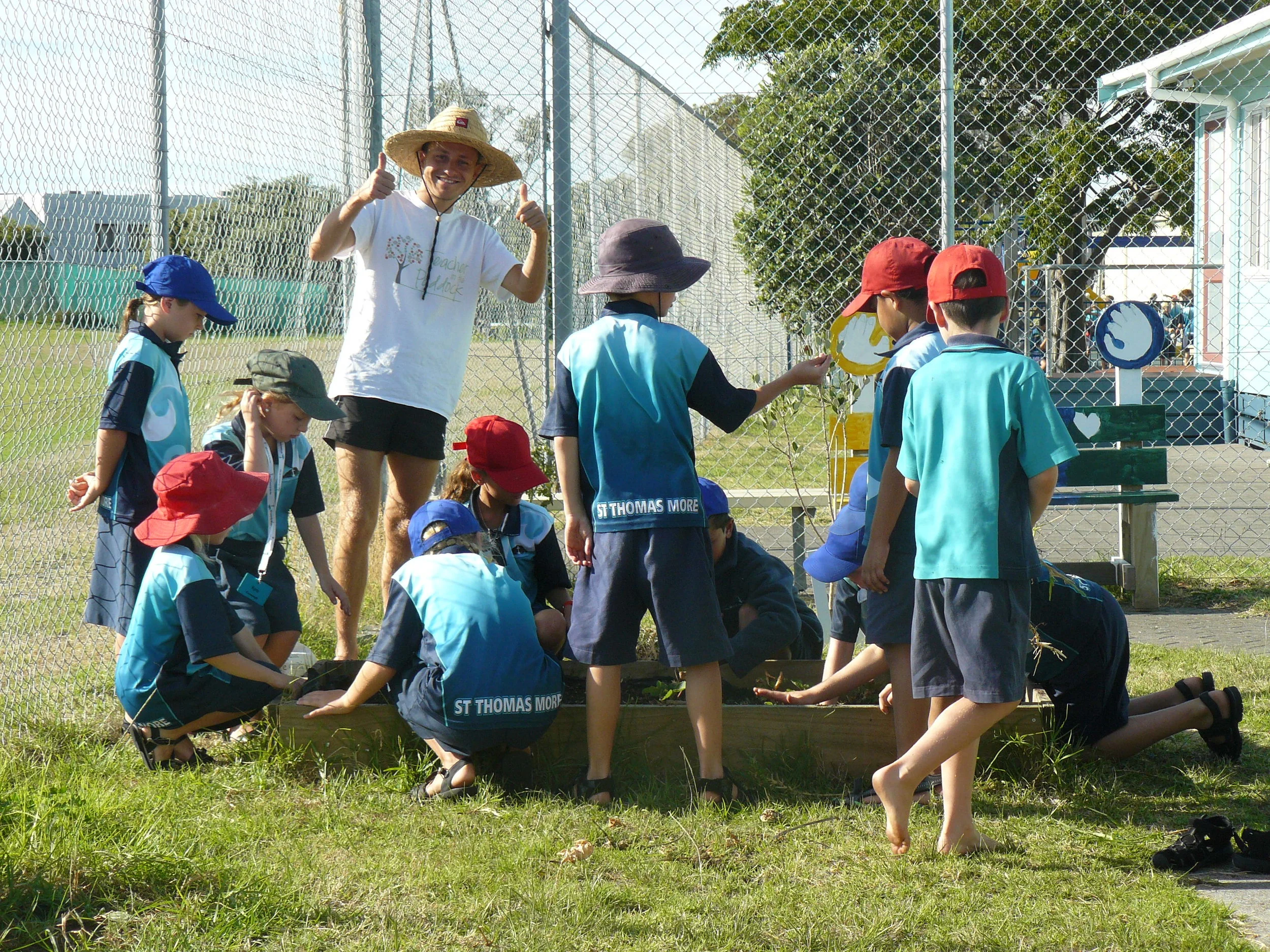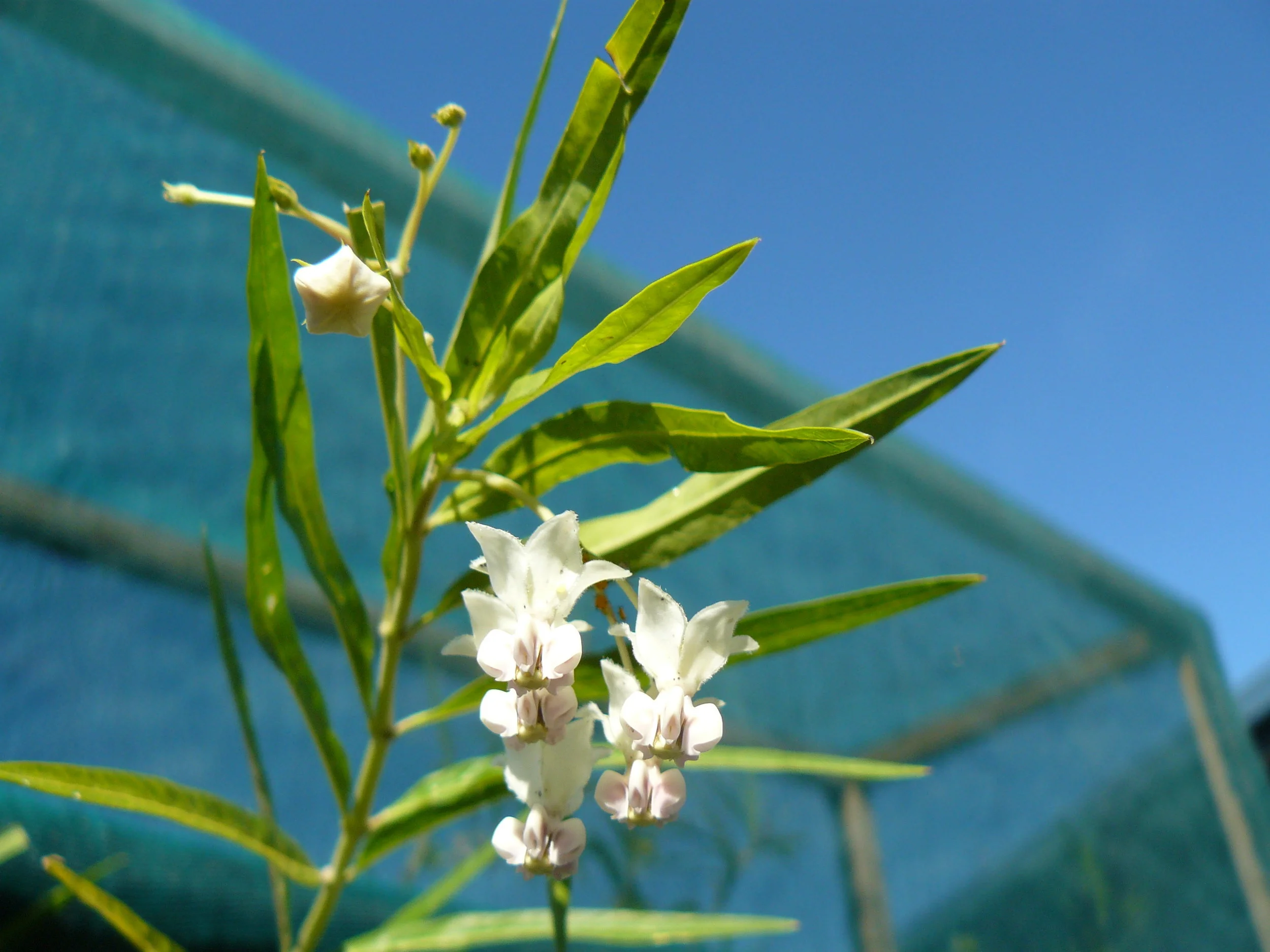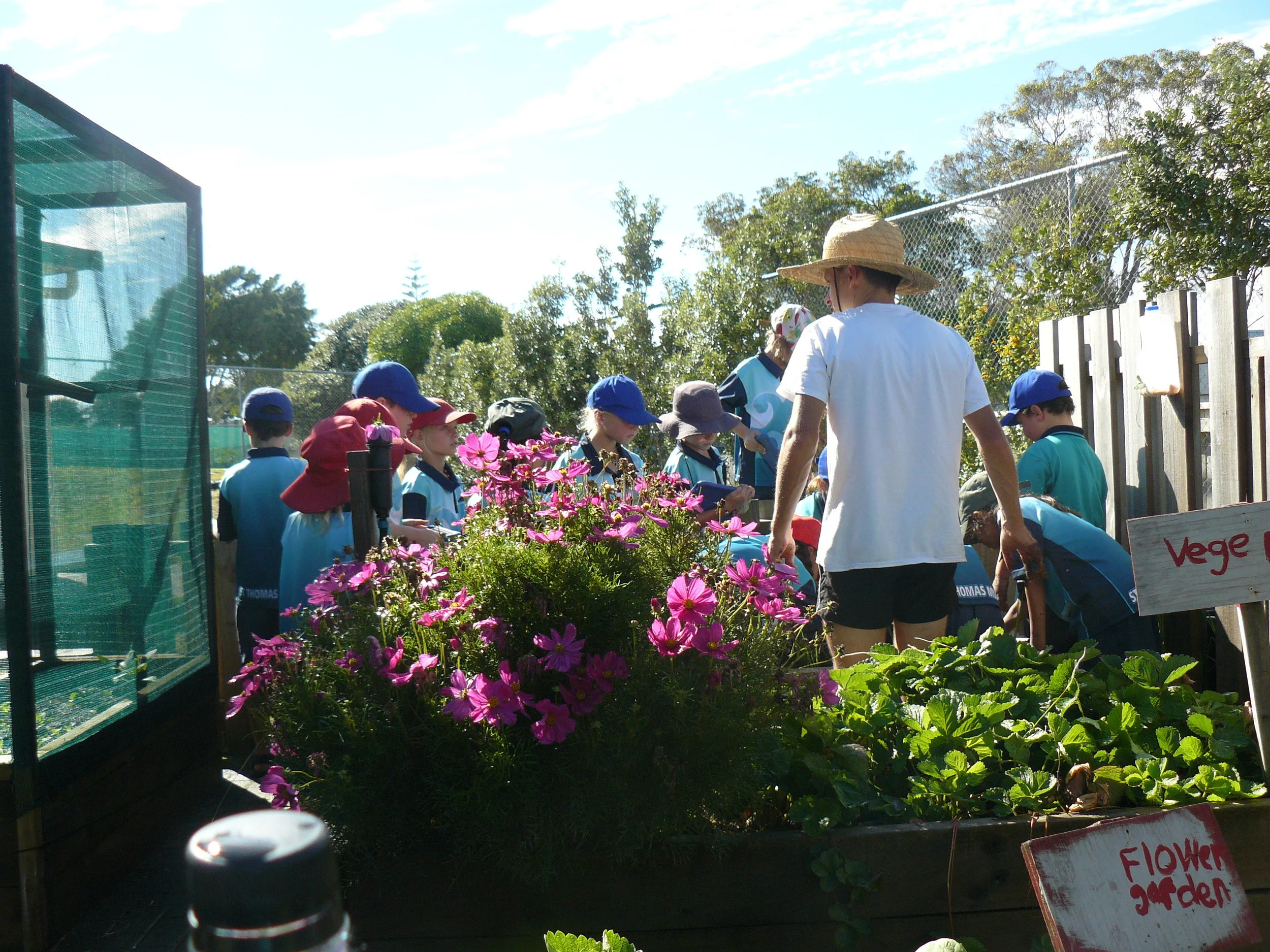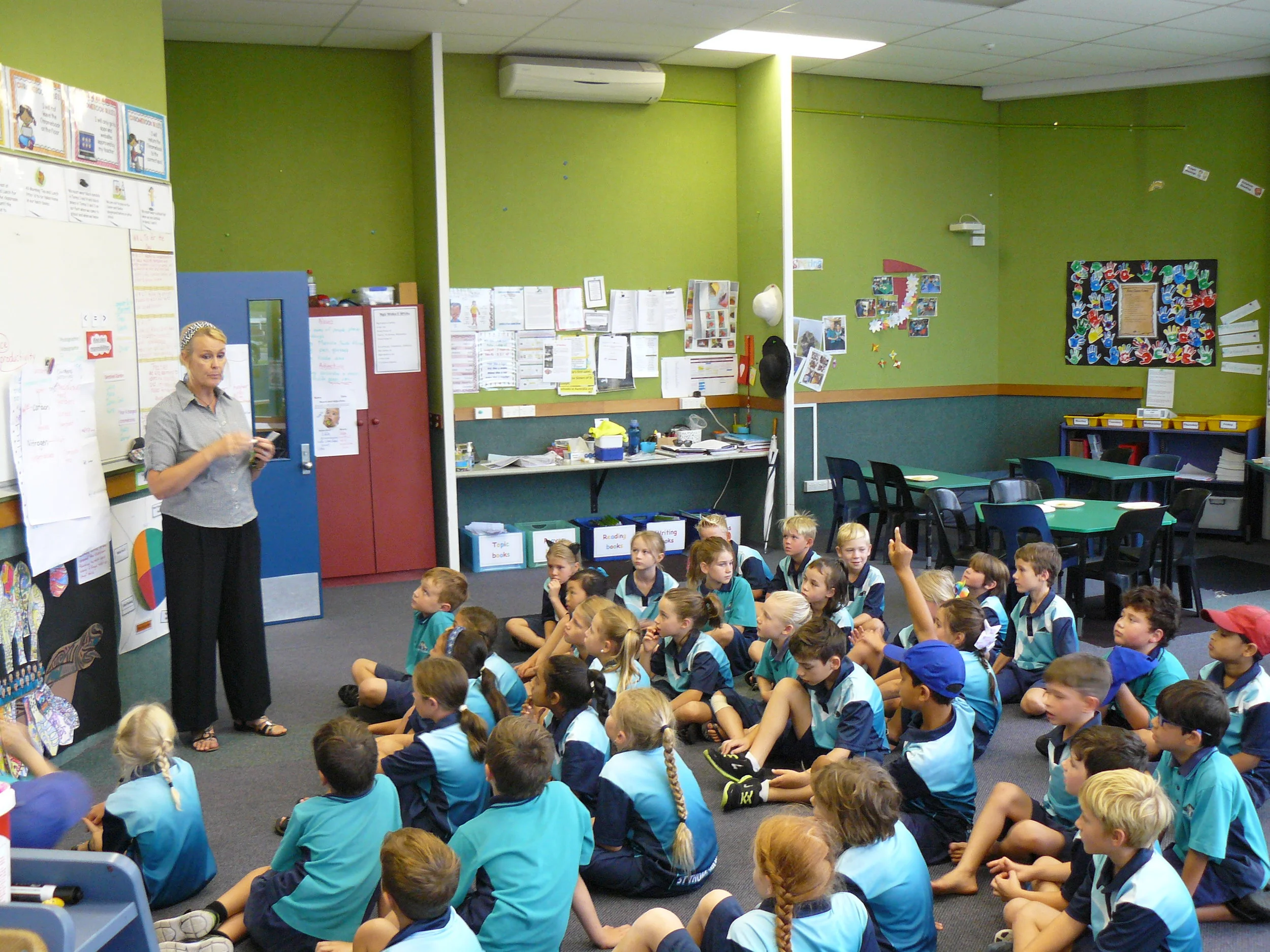
St Thomas More School’s Blog
Goodbye Summer
After the summer our gardens needed a good tidy up and some TLC. The boys got in there and worked really hard clearing old crops, collecting seeds and making the whole area beautiful. After morning tea the girls directly sowed seed into the beds and wrote Tess a letter all about their gardens at home and their favourite fruits and vegetables. As a group we harvested what crops were ready and chopped them up together to smell, look and taste. We collected the seed from our pumpkin ready to sow next summer.
Beetroot seeds for direct sowing.
Finishing off the Year
Wow! As the weather has gotten warmer, our vegetables have flourished! We have been harvesting a great amount of food to share with our community, including delicious pak choi, radishes, beans and cornflowers. The kids love to harvest - the best part of gardening as all of your hard work has paid off! We were very lucky this term as we had Tess join us to share all her wonderful organic gardening knowledge. Tess will be taking over as the garden facilitator next year while Laura is on maternity leave.
We have been growing Kumara tipu (shoots) and it was time to harvest and plant them out! Did you know that you plant Kumara shoots from East to West? Also, planting them like a J and making sure you have a hard pan (hard ground) underneath will help you to get the biggest kumara.
We love this time of year as lots of monarch butterflies come out. Clever Mr Webster has built a butterfly enclosure to help protect the caterpillars from wasps. The children love watching the caterpillars emerge from the chrysalis and even get the chance to hold them to gently set them free.
We have also been hard at work building another garden bed. We lined it with an old billboard and then filled it up with compost and mulch.
The seniors went on camp for the week which meant that the juniors got to join Tess and Laura for gardening! Tess taught us all about the parts of a seed and what they need to flourish. Together, we made seed bombs, tea with herbs and flowers from the garden, explored the garden space and learnt how to harvest without hurting the plants and also explored nature through our senses! We loved smelling the pineapple sage and some kids even turned it into perfume! We really enjoyed getting mucky by making seed bombs. All you need is clay, compost, water and seeds and get mixing! Once the seed bombs dry out you can plant them in your garden or anywhere with soil and voilà, a sunflower will grow!
The seniors finished up the year with a bang. We did a final tidy up in the garden, pulling weeds and sweeping, and harvested everything that was ready. Some of our garlic was ready so we harvested that and set up a chain to prepare to make some delicious garlic bread! We also had some gigantic turnips that were definitely ready and zucchinis so we decided to make some turnip chips with herbs from the garden.
Thank you so very much St Thomas More kids, I have absolutely loved working with each one of you and can’t wait to see all the amazing things you are going to do in the gardening world in the future!
BEE-UTIFUL October
What a buzzing month it has been. We have learnt all about pollination, bees and flowers. Pollinators are very important to our world and they are the reason we have food! Did you know, in some countries, people have to hand pollinate because they don’t have many insects left? They walk around with little paint brushes and pollinate all the flowers! We are very lucky to have so many pollinators in New Zealand.
We also learnt about the different parts of a flower and how they can be male, female or both!
We were very lucky to have Sylvana from Seaside Bees come and visit us. She brought in bees, showed us what a hive looks like on the inside and also brought lots of bee suits for us to try on and pretend to be bee keepers! She also taught us lots of facts about bees and answered all of our interesting questions. Here are some interesting facts we learnt about honey bees:
- Bees are attracted to flowers more for the smell they produce than the look of them
- Bees only sting when they are stressed. If one lands on you, stay still until it flies away
- Only female bees have stingers
- When bees are 12 days old, they are in charge of building honey comb – they only do this for about one week and then they are sent out of the hive to become a worker bee
- Queen bees lay 2000 eggs per day!
Thank you very much Sylvana. We loved every minute of your visit and many of us are definitely bee lovers now if we weren’t before!
We loved learning about flowers so much, that we decided to do some flower pressing to be ready for our Christmas cards in a few months. We collected flowers from around the school gardens and also Laura brought some in from her home. First, we dissected some of the flowers to see if we could identify the different parts, then we got to flower pressing. We cut the harder parts off, layered the flowers between baking paper and then stacked them in a heavy book. Fingers crossed they are ready for our Christmas Crafts.
Some kids were very creative and decided to use the natural dye from the flowers to make a rainbow of art"
This month we have also been working on building more beds with the wood we received from the old board walk at the Mount. Working with the fantastic Mr Webster, some kids learnt to saw and use a drill. We made a new sunflower bed and also one for kumara which we will plant out later. We then layered these beds with seaweed and left-over soil, and planted the sunflowers.
We have had an ABUNDANCE of radishes, peas and broad beans this month! We love the warm weather and how it is helping our plants to grow faster – it means we get to eat more – YUM!
Spring into September!
We have had a very productive September and feel like we have sprung into Spring! We started off with Paua Tahi learning about propagation. Keep an eye out on our future blogs to see how our cuttings turn out.
Each week we carefully care for our garlic by giving them a good water with either some worm juice or seaweed, weeding any small weeds that pop up and checking for garlic rust. No sign of rust yet and our garlic is still going strong! We can’t wait to make some delicious garlic bread at the end of the year!
Our spring seedlings were ready to be planted out so we soaked them with seaweed fertiliser and gently popped them into the ground. We also did some more direct sowing of seeds that prefer to be directly sowed like radish and rocket. We look forward to seeing what grows!
We then moved into collecting our own seed and the processes involved. We collected seed from sunflowers, chilli, spinach, basil and pumpkin and learnt about how different plants have seeds in different places.
Did you know that chilli’s and pumpkins are technically fruit as they have seeds on the inside! We learnt a new technique for collecting pumpkin seeds by scooping out the seeds, filling the jar with water and then giving it a shake each day. Over a week, the seeds will be ready to collect as they would have separated from the slimy orange film that normally protects a pumpkin seed. Just drain into a sieve and voila, your seeds are ready!
We marked out where we want to put our new garden beds for kumara, sunflowers and grapes and started digging to loosen up the ground.
We also noticed that our radishes started to get very big so we picked those and shared them around with the other classes and teachers. Some kids loved them and would eat them like a carrot, other kids found them too spicy but I was still impressed they gave them a try!
As the holidays were approaching, we decided to try different methods to grow kumara tipu or kumara shoots. The first method was cutting off the “eyes” (which look like bumps in the kumara) and putting them into water. The second method was poking toothpicks in the side of the whole kumara and putting it over a jar of water. The third method was burying the whole kumara in sand and keeping it moist. We also thought we would experiment with organic kumara and non-organic. Stay tuned to see which way worked best!
Awesome August
August started off with some very interesting learning about propagating plants! Before we started cutting up the plants, we used our senses to try and guess what the plant were. We smelt old favourites like mint, rosemary and lavender, then worked into new plant smells and looks like citronella, salvia and pineapple sage. We learnt all about taking cuttings to create the exact genetic replica of a plant – its like making a clone! These plants need to photosynthesize which means to each sunshine and stay moist with good airflow. We learnt all about nodes and buds and where you need to cut the plant to give it the best shot at growing roots. We then dipped it into the organic rooting hormone and place it into the cutting mix – fingers crossed they take and form some roots! We finished off the lesson looking at some bugs we found under the microscope! They looked very creepy and some had even created their own nest!
The following week we got stuck back into weeding the garden but most importantly, planting our new seeds to get ready for spring! We learnt how to use the website gardengrow.co.nz and all about seasons and when to plant what. Did you know that most plants that produce a fruit - like a tomato, cucumber, capsicum or rock melon - only grow in really warm conditions? We then had to choose our own seeds to plant out by ourselves and wrote down a ‘Wishlist’ of seeds for Laura to get for next time.
We finished off the month, helping our community by planting special dune plants. The two types of plants we planted were Spinifex and Pingao. Chris from Coast Care explained to us why we need the dunes, what the plants do and how we can protect them. He showed us photos of how the Mount main strip use to look before they started planting the dunes to how it looks now. Did you know, that the dunes help hold the sand and keep the beach formed? We saw photos of LOTS of sand that would always be swept into the Mount main strip. The dunes protect the land from erosion and are also home to many wonderful, New Zealand native birds and insects. To keep the dunes alive, it is best not to walk on them, so please stick to the paths when you visit the beach!
It was a wild, windy and rainy day but that didn’t stop us from getting our mahi done. We restored some dunes that were burnt last year and learnt that if you dig a very deep hole for the plants, they have a much higher survival rate. We then added a small scoop of fertiliser and tucked the plants into bed. Thank you very much Chris for all of your passion and education around protecting our dunes! We are very grateful for the knowledge and experience you shared with us.
July – Celebrating Matariki
As the Matariki star cluster comes rising up for the first time in the Eastern sky we celebrate the Maori New Year – this year it was during July. It is a time to come together with whānau (family) and friends to think about the year that has passed and to plan for the future. The stars of Matariki are family too. The mother – Whaea Matariki – is surrounded by her daughters. This month we learnt all about Tupu-ā-nuku, who spends her time with Papatūānuku (Earth Mother) tending to all the beautiful growing plants. She cares for them making sure they have everything they need to grow healthy and strong so they can produce kai/food, rongoā/medicine and kākahu/clothing materials.
To celebrate Matariki this year, we learnt a new skill – weaving. We learnt how to weave using a plant called harakeke (flax). Harakeke was a very important fibre plant to Māori and was often used to make baskets, clothing, mats, plates, ropes, bird snares, lashings, fishing lines and nets. Today we leant how to weave a putiputi (flower). We learnt all about the Tikanga (Māori protocols) surrounding the plant and how to respectfully harvest and weave. We also learnt how the plant is a great way to explore the idea of whakapapa. At the centre is the rito (children) and the leaves surrounding represent the mātua (parents) and tupuna (grandparents) all protecting one another. Some children picked up the new skill easily and others found it more difficult. I was impressed that everyone persisted and everyone successfully weaved a putiputi.
Alongside this, we also learnt about directly sowing seeds into the ground and why it is beneficial. Did you know that some seeds don’t like to be disturbed? That’s because you can damage the roots as you transplant them from the seedling pot. These are seeds like rocket, radish, carrots and turnips – mostly plants where the root actually becomes the food we eat. We all had turns at deciding where to put the row, moving the mulch to the side, digging a shallow trench, sprinkling the seeds in aiming for a 1cm spacing and finally tucking our seeds very gently into bed.
We also planted out some of our spare seedlings that were ready to soak up all the rain outside and added worm wees and castings. Unfortunately, our entire worm bin fell through the bottom! Luckily, we had three amazing girls gently put all the worms back in their home and gave them some good food – well done girls!
Next month we are very excited to start preparing for our spring garden and all the beautiful delicious plants we can grow in all our new space!
Winter isn’t Slowing Us Down
What an incredible, full month it’s been. We have had many days with torrential rain but we didn’t let that stop us from learning about soil, seeds, plants, and the garden. During June, we learnt about seed germination, the parts of the seed and how the mother plant packs the seed full of cotyledon or endosperm – this is the food supply which we like to call “the lunchbox”. This lunch box provides the initial food for the embryo (tiny plant) to grow. It’s kind of like our parents packing our own lunch boxes so we can grow too.
We then moved on to the lifecycle of a plant and how everything in nature works in circles. We considered and discussed where we get things like oil, metal and plastic and also talked about how EVERYTHING you see around you came from nature somehow – wood/paper is trees, plastic came from oil, metal we mined for in the ground and more!.
Plants are astonishing, we discussed photosynthesis and how it’s the process of plants eating sunlight and using it to turn carbon dioxide and water into food for us to eat. How lucky are we! Plants need four things to survive and thrive - water, sunlight, carbon dioxide and love/care. When plants breathe in carbon dioxide, they breathe out oxygen. Again, we breathe in oxygen and out carbon dioxide, so how fortunate are we to have plants.
Alongside all of this learning we prepared and planted our garlic. We did this by splitting up the bulbs into cloves and then soaking the cloves in a fertiliser mix of worm castings and worm juice. Once it had been soaking for an hour, we planted it out, one hand space apart – this will give it enough room to grow. Garlic should always be planted pointy side up and is best planted two times its height under the ground. We then topped it off with a good layer of mulch to help suppress the invasive weeds and keep the garlic nice and warm through the winter.
We also learnt about soil conditioning. Soil conditioning is adding nutrients (or food) to the soil to help feed the microorganisms. Microorganisms are those teeny tiny bugs that live in the soil. Having healthy soil means having a lot of life in the soil. Healthy soil means healthy plants, which means healthy humans! You can do a quick easy soil test by looking out for worms. Worms are amazing in the garden! If you have them, keep them there. They are adding more goodness to your soil just by living there and are working alongside the microorganisms which you can’t see with your naked eye. We added things like banana peel fertiliser, coffee grounds, crushed eggshells and worm castings from our school worm farms – Thanks Leo from Why Waste. Next month we are going to collect some seaweed to add and learn about the benefits of seaweed.
We have been keeping our seedlings lovely and warm, with a steady watering in the classroom for the past month. We decided to test out how well the seedlings would grow in the garden over the holidays compared to taking some home in mini green houses and keeping them protected from the weather for another couple weeks to get stronger. We soaked some seedlings in worm wees and water to give them the best start before we planted them in the garden. It was a freezing cold day and one child said “my fingers are like icicles!”. We will plant the other ones out after the school holidays and will see if there is any difference in size or growing speed depending on letting them get stronger in a greenhouse for longer. Keep an eye out next month to see the results!
Getting Back into the Garden in May
We have finally been able to get back into the garden this month! Unfortunately, we didn’t get time to plant our seedlings before lockdown so many of them didn’t make it – not to worry though, we planted more seeds today so that they will be ready in time to plant for Matariki.
We had many jobs that needed doing so we split into teams to get things going. Team work was needed as we had two massive new garden beds that needed filling. Look at this enormous pile of soil! Well done to the children who worked so hard, filling wheelbarrow after wheelbarrow for most of the day! You worked as a strong team helping each other tip the heavy barrows of soil into the garden beds.
The lockdown worked perfectly for our green mulching. We planted it just before lockdown and look at how much it had grown! We then learnt about the “Chop and Drop” method where you cut the stalks at the base of the soil and then cut up the organic matter (the rest of the plant). The roots stay in the soil to help feed the microorganisms (those teeny tiny bugs) and the plant that stays on top acts as a mulch to suppress weeds and also breaks down over time and becomes food for all the beautiful creatures that live in the soil. Green mulching is a great way to help build strong, organic soil!
We also weeded any invasive weeds that popped up, planted more Winter seedlings and used up the rest of our mulch on the garden beds. The mulch had started breaking down and was starting to turn into compost! Next month we will work on getting some more mulch in our gardens to make sure none of those invasive weeds come back.
Now most of the structural work that we wanted to get done is finished, we can focus on growing food and growing soil! We look forward to what the next month brings in our garden.
March at St Thomas More
Wow! What a busy month we have had in the garden! I have been impressed with the amount of effort and hard work the kids at Saint Thomas More have put into reshaping and tidying up their garden! Ka mau te wehi! Fantastic work!
We started off the month discussing and researching garden designs. We spoke about how for a garden to be efficient, it’s a good idea to be able to reach in the back. We decided to shorten the width of one of our garden beds - that way, you don’t walk over or squash food that is growing in the front to get food from the back. We also spoke about the different parts of the plants and how the roots need space to grow. Collectively, we decided it would be a good idea to make the big garden bed deeper so the roots have more space. If the roots have more space to grow, the plants will grow bigger!
Additionally to this, we had a lovely parent helping us to revamp our big bed. Some kids got to use some tools like hammers, drills, levels and saws. What an experience! The kids were in charge of the project while adults watched over for safety. They did so well and were very proud of their work.
We also prepped the ground by removing the grass next to the fence. We are going to be building new garden beds once we get back to school and will plant species that like to climb! Using the permaculture principle ‘Use edges: Value the marginal’ we are putting it up against the fence and the fence will have a double purpose! Watch this space to see our results!
We also worked on rejuvenating our old garden beds by removing all of the invasive weeds. Unfortunately we had many! Including kikuyu, couch (pronounced ”kooch”), oxalis and black nightshade! Oxalis seemed to be the hardest - it’s the one that looks similar to a clover on the top - but it has a nasty bulb under the ground. If you don’t get the bulb it will just grow back! We made it a competition on who could find the most bulbs with some children finding over 100 each! Working together as a team, made the process a lot easier! Great team work everyone!
Once we got rid of all the invasive weeds, we worked on feeding the soil - “Feed the soil and the soil will feed you”. We applied blood, bone and seaweed then mixed it in. Finally, over 3 of our beds we planted green mulch. Green mulch is a cover crop of plants that you intend to “Chop and drop”. These plants cover the soil to suppress weeds while also growing roots that feed the soil. When our cover crops grow, we will chop them at the base (leaving the roots in the soil) then leave them on the ground where they fall. As these plants die, they feed all the good bugs in the soil. Did you know that a small handful of soil contains more than 1 billion microorganisms! They are teeny tiny bugs that you can’t see with your naked eye. You need to have a very specific microscope to see them. We managed to get our ground cover crops onto three of our beds before we had our lockdown due to Covid-19. When we come back, hopefully our ground cover crops will be cranking and ready to ‘Chop and Drop’.
Finally, we managed to finish shovelling soil into our large, revamped garden bed. Luckily, we had Mr Webster who planted our seedlings - that were growing on our windowsill - for us as our school closed suddenly. Mr Webster always puts a HUGE amount of effort into our garden days and we are very grateful! Thank you Mr Webster!
A special thank you to the adults involved in making this happen this month (you know who you are) and the amount of effort you have put in is incredible!
Thank you everyone!
PiPS Team
Our new Garden Facilitator for 2020
Kia ora everyone and welcome to 2020.
This year PiPS is proud to introduce Laura Buhr, our new garden facilitator at St Thomas More and Omanu Schools.
Laura is a passionate primary school teacher who enjoys working in the garden. She loves spending time outside by taking her dog to the beach and on bush walks. She’s a keen home baker and loves testing out new recipes. She has always wanted to learn to play a musical instrument and this year she has decided to try out the African drum.
Her home garden and outlook on life is inspired by Permaculture Principles – Earth Care, People Care and Fair Share. She has been teaching Primary aged children for eight years and for the last couple years she has been pursuing her passion of teaching about the environment. Her goal is to share regenerative ideas on how to connect to Mother Nature and recognise all that she provides.
Laura has been working with St Thomas More School over the past three weeks and together they’ve come up some exciting new designs for the gardens, planting seeds and tidying up the garden areas.
Welcome to PiPS, Laura!
The end of a fantastic year!
Kia ora whānau
Well what a year it’s been - the kids of St Thomas More have certainly been up to lots of fun activities both in & out of the classroom. With us, they’ve looked at garden design, visited gardens in our community, got stuck into their own school gardens, created planting plans, learnt about worm farming & hosted a ‘garden to plate cafe’ evening - to name a few!
The support of our community this year also meant that STM was awarded $5000 to enable the continuation of this kaupapa in the school! This was absolutely fantastic & will be exciting to see what unfolds with this financial backing in 2020 :)
Garden design was a big part of the children’s learning this year. Understanding what different plants need and ensuring that how we plant reflects this is key. They learnt the importance of thinking about where the sun travels across the sky, both in summer & winter, and also learnt tricks for getting the most out of a space.
Working in small groups, they used the knowledge they’d gained (and a planting calendar) to create a planting plan for their gardens.
Two top students were then selected to critique the plans with me to come up with a winning design for our gardens. To ensure we chose the best design, we judged them against some key criteria; including plant spacing, awareness of sun’s positioning, space maximisation & usage of companion planting. Check out the winning teams design!
The kids hosted a cafe evening for their whānau using food they’d grown in their gardens too! And although there was a little bit of parent apprehension to start with, that was quickly dismissed as the students served up some absolutely delicious dishes. Was a delight to see (and taste!). Well done tamariki o Kina!
Our Matapihi flora & fauna field trip was a wonderful way to end the year. Our whānau joined us as the kids learnt all about our native plant & bird species. They discovered some fun facts about the biodiversity here in the bay, learnt about species identification & conducted their own species counts!
I must say a massive THANK YOU to all the amazing whānau that came along to support us on the day. Your encouragement & enthusiasm for the kaupapa was great to see - and I’m sure the kids fed off that too. Was a fantastic experience for all :)
The students took their new found knowledge back into the classroom too! Following their curiosities, they went on to research particular species that interested them. Was great to see the enthusiasm in the class and some of the presentations of their findings.
When they learnt about some of the threats facing our native wildlife, many were keen on getting involved to help them thrive again too!
It’s been an absolute pleasure and a blessing to work with such an enthusiastic bunch of kids & supportive whānau this year at St Thomas More Catholic School! I will certainly cherish all the wonderful memories made. And although I’m sad that it’s the end of this chapter, I’m also excited by what the future holds for these tamariki and our community.
Hope you all have a wonderful Christmas & New Year with friends & family and I wish you all the very best for your futures :)
Arohanui me ngā mihi mahana
Jake Andersen
Sloshing mud, snail eggs, seeds & so much more!
Well I felt this pic was a great place to begin…
another wonderful term with the delightful kids here at St Thomas More!
After the term break we got straight into our māra to check out what was happening. Observation is one of the most important skills in gardening, and these kids are getting pretty good at it!
The girls in particular were slug finding virtuoso’s… they even managed to locate some eggs, which the boys quickly rushed away to research. Turns out these foggy plastic-like balls are
snail eggs :)
The boys were pretty keen to experience the garden with all their senses. They wanted to taste everything and when it came to spreading the compost & top soil in our new garden they just had to take their shoes off and get amongst it!
Noting the abundance of winter produce in the garden, the kids showed initiative. Showing their head, heart & hands, they harvested the produce, boxed it all up and offered it around to all our wonderful whānau here at St Thomas More Primary :)
And with spring just around the corner, the kids turned our garden shed into a makeshift greenhouse and sowed up a storm! These seedlings are now being nurtured and, once big enough, will be transplanted into our gardens and sold at our upcoming community seedling sale.
This will help us raise funds to do even more fun stuff.
Did I mention they’ve done this all without using a single scrap of plastic? Matua Leo’s waste education must’ve made an impact!
And with Te Wiki o Te Reo Māori, we thought we’d seize the opportunity to learn from the one & only Whaea Elicia. She told us all wonderful stories of her kuia (grandmother) and her garden. We were also extremely blessed by a fantastic waiata - which she created especially for us
and our gardening journey.
——
Whakapai i te whenua, i te whenua
Prepare the land
Whakatō i ngā kakano
Plant the seeds
Whāngai i ngā kakano
Nurture the seeds
Auē!
Hutihutia i ngā tarutaru
Pluck the weeds
Hauhake i ngā hua whenua
Harvest the vegetables
Hauhake i te māra, māra pai
Harvest the garden, the good garden
——
Kia pai ō koutou whakataa
Have a wonderful holiday everyone :)
Yours in growing,
Matua Jake & the team here at St Thomas More Primary
Term 2 Recap & Term 3 Overview
Hello everybody and welcome to St Thomas More’s Term 2 recap & Term 3 overview. Last term Leo from Why Waste got up to all sorts of fun in the gardens with the school’s yr 3 & 4 children. Check out their adventures from last term and an overview of the exciting term ahead!
Leo from Why Waste is the man on waste, and boy did the kids soak up a lot from him on the topic! They learnt all about landfill and the greenhouse emissions that are not only emitted by our landfill but by the trucks taking our waste up to Auckland because we don’t have our own!
Furthermore, they also learnt that 1/3 of our waste currently going to landfill could be diverted into simple waste systems, and ones that they can understand and use, such as worm farms & composts. They were so inspired with this new found knowledge that they designed a worm farm system for the school.
With this, they helped their school divert nearly 100% of their biodegradable waste from landfill, and made a presentation in a whole school assembly to ensure everybody was on board!
The kids also used saws, drills and their creativity to build a vertical growing frame & two new gardens!
And last but certainly not least, here’s a quick overview of the eventful term ahead!
I’m very happy to be back and I’m looking forward to giving the kids what I think will be their best term yet - and sharing this with you all!
Yours (back) in growing,
Matua Jake
New places, new inspiration
We’ve had lots of fun, discoveries and important learning lately!
Take a look at some of our highlights from the term gone by :)
The kids love their gardens at St Thomas More. So much so, they’ve decided they want more!
So we did some research into what cool gardens are around in our community to get some design ideas. It didn’t take us long to find that there is actually some really cool things happening in our community. So off we went to get some awesome design ideas of our own.
The whole Kina class excitedly went over to visit their local kindergarten’s gardens. Here they met the wonderful Whaea Rosie who told us all about the fantastic Arataki Kindergarten’s gardens! What an amazing host she was.
The kids absolutely adored exploring the gardens and I swear they could’ve spent hours in there! They eagerly took photos of nearly every square inch of the area, taking note of the interesting variety of plants, how they were grown to maximise space and how they could adapt what they were seeing into the St Thomas More landscape.
let the kereru know Arataki is where it’s at!
I think the all the vibrant colours & creativity really captured the kids imaginations. The chickens certainly played their part in spiking excitement levels too!
Once they arrived back in class, they were overflowing with inspiration! We captured this in a whole class brainstorming session and then decided on an area which they’d like to develop. This decision was carefully considered, based on a number of important garden criteria. Through looking at these criteria, discussion and consultation with others in the school, they decided upon the area right outside their classroom!
Here the kids could watch the garden as it grows & develops, and connect with it everyday on their way into class. Nature’s wonderful therapy could be enjoyed through their classroom windows! A co-construction of Kina & Pipi’s ultimate outdoor area was underway.
With so much learning about garden design, it’s going to be great to see what happens in this space. The next steps will be to work with a professional designer to get their ideas put into an attractive design - hopefully convincing the decision makers to make it happen!
Keep up the great work kids.
Yours in growing,
Matua Jake
2019 - A new journey
Kia ora and welcome to our 2019 St Thomas More gardening club!
My what fantastic kids you have here at St Thomas More! We’ve spent our first few weeks getting to know eachother and our gardens, and getting them back into shape after a long hot summer. There are many beautiful flowers, strawberry plants and swan plants (in the butterfly gardens). There’s also an abundance of basil thriving in the summer sun and potatoes which have just finished doing their thing.
Along with tidying up the gardens, the kids have also been honing their planting skills by planting out a bed of leeks. The class also checked out their school’s epic rainwater harvesting system. We couldn’t help but notice the tanks were starting to get rather low, which highlighted the need we have here in the bay to conserve our water at this time of year!
I am very grateful to be working alongside the super fun and passionate Mrs Eckstein in this exciting new chapter for the school… And I think the kids are too!
Those who didn’t know the school had planted some fruit trees were rather thrilled at the thought of coming to school & being able to pick fruit straight from the trees! We established early on that St Thomas More kids love food! So they’re all pretty excited about growing their favourite foods right outside their classrooms :)
Growing young minds & strengthening community bonds through a connection with our natural environment. What a blessing this is! And we thoroughly look forward to sharing this journey with you all.
Yours in growing,
Matua Jake

















